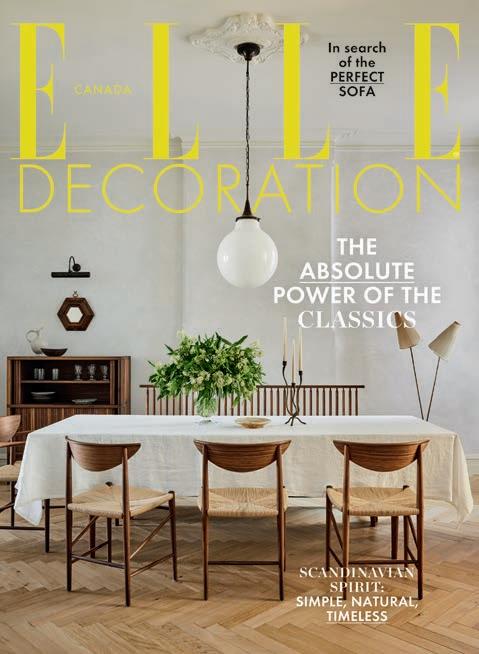THE CANADIAN WOMEN WHO ARE MAKING CHANGES FOR THE BETTER

TREND REPORT
EVERYTHING YOU NEED TO KNOW ABOUT FALL/WINTER FASHION & BEAUTY
The Legendary





























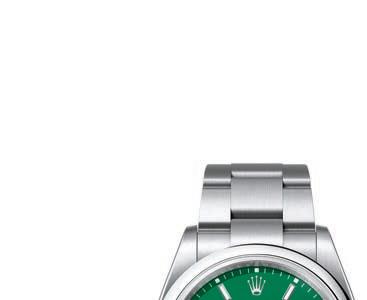
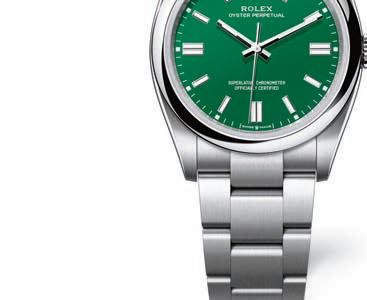











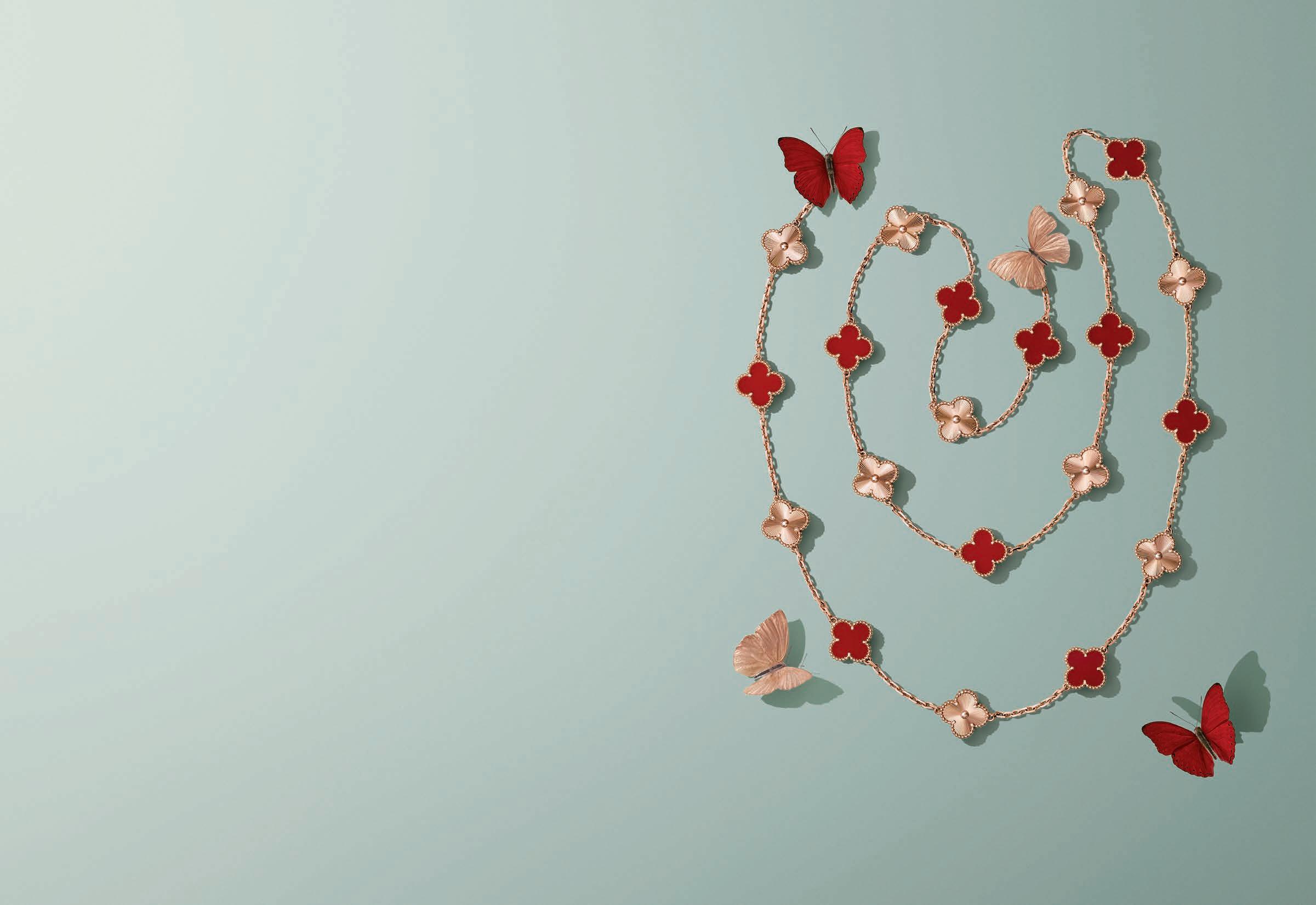



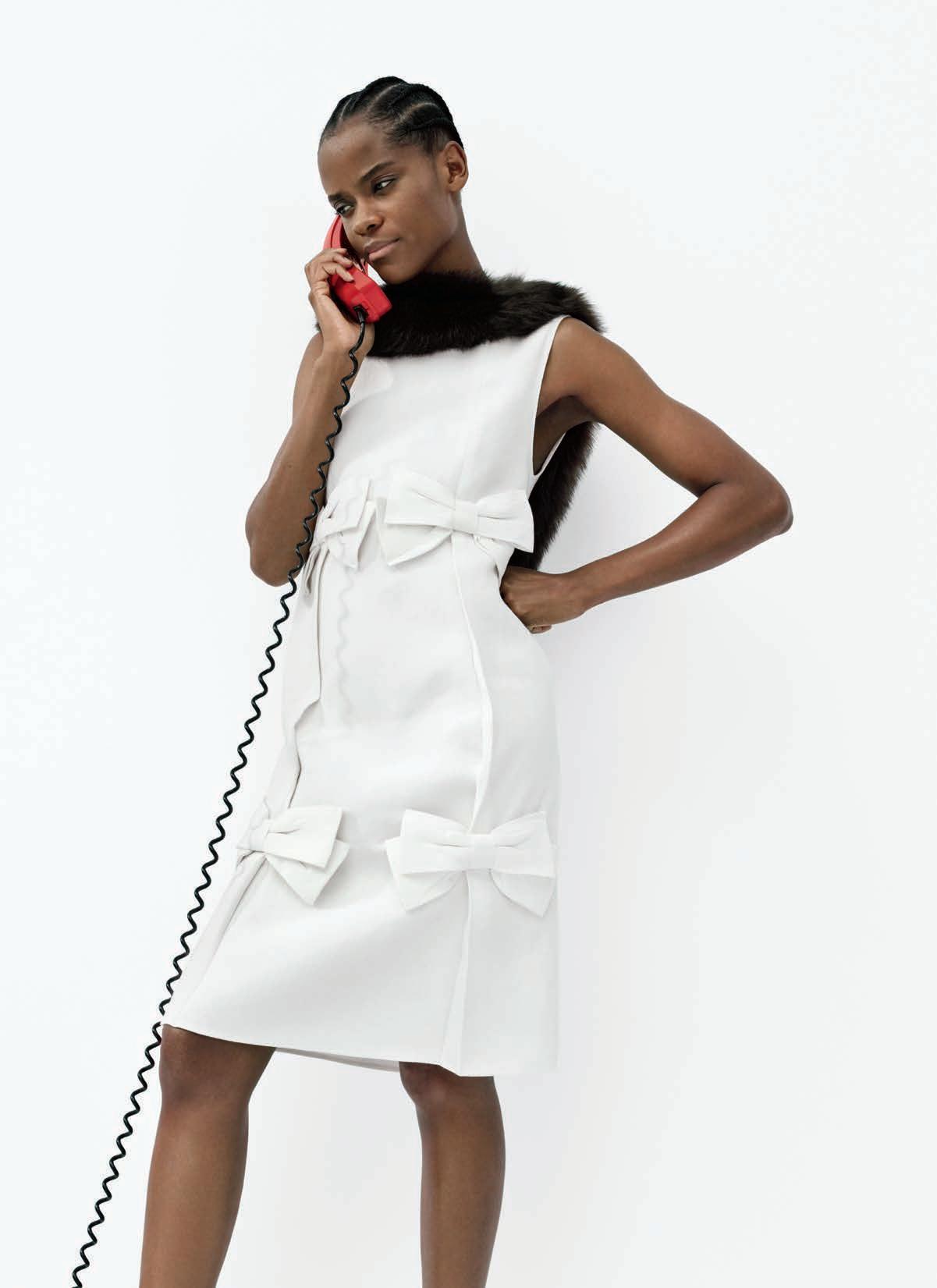

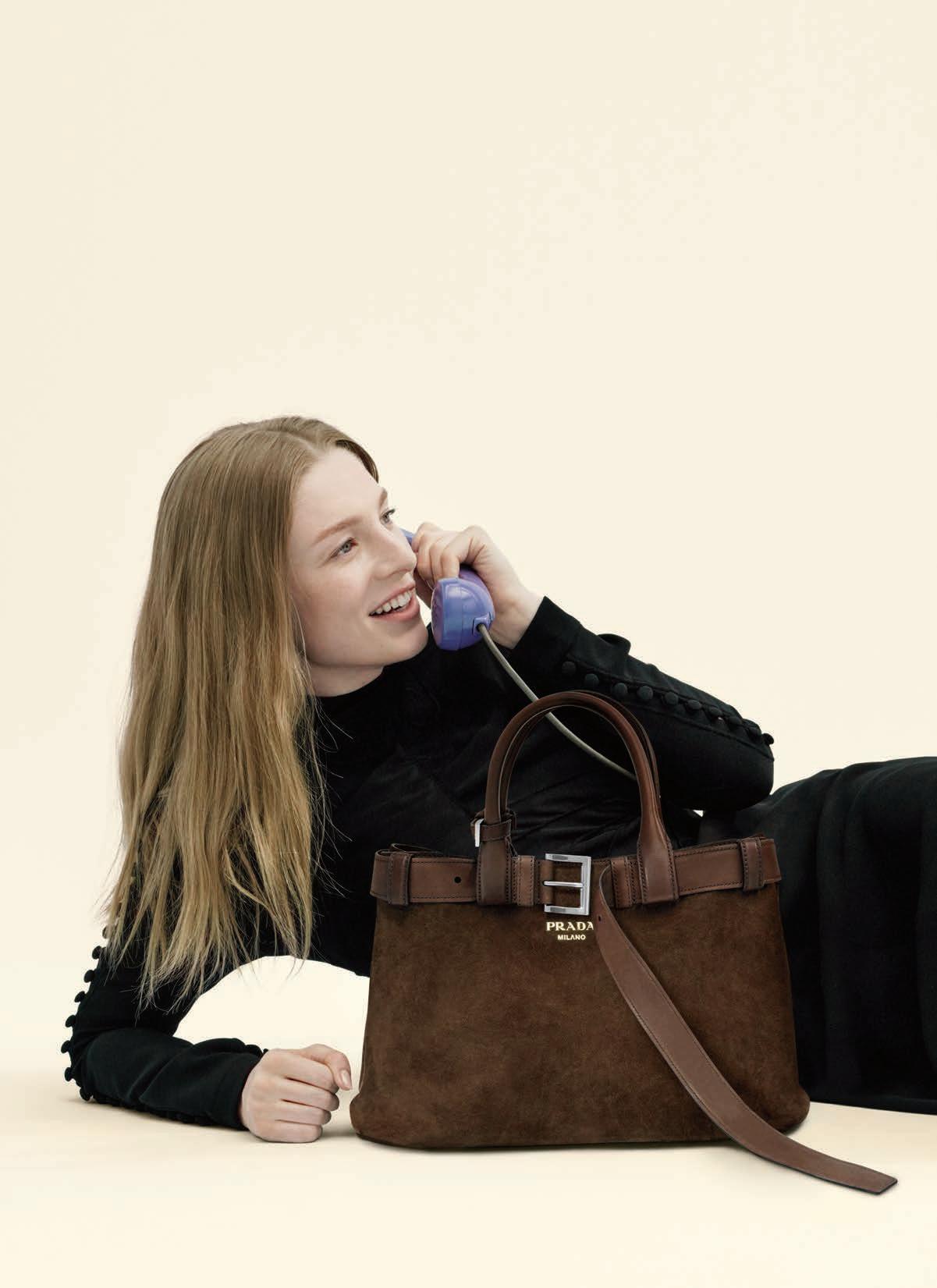




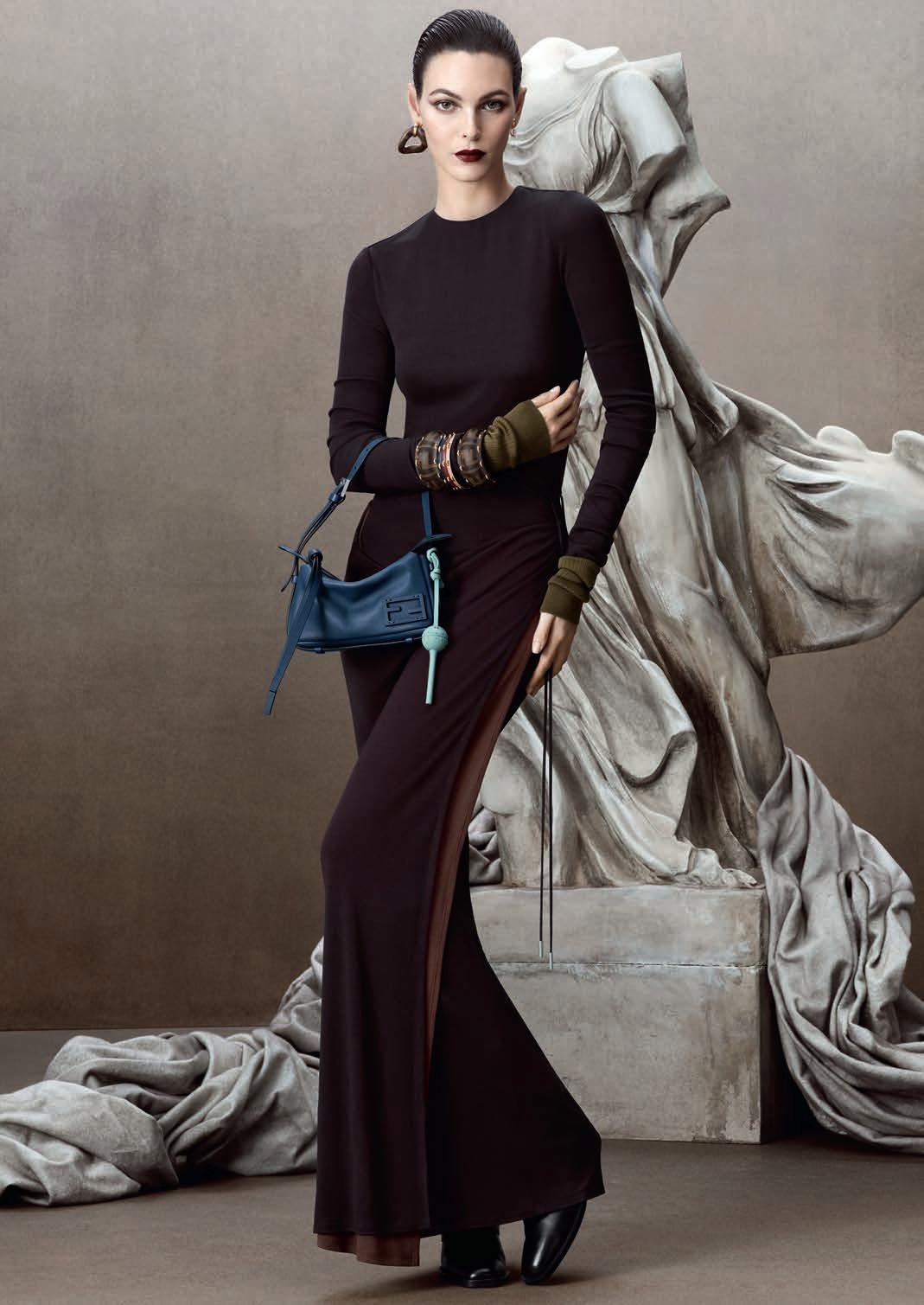































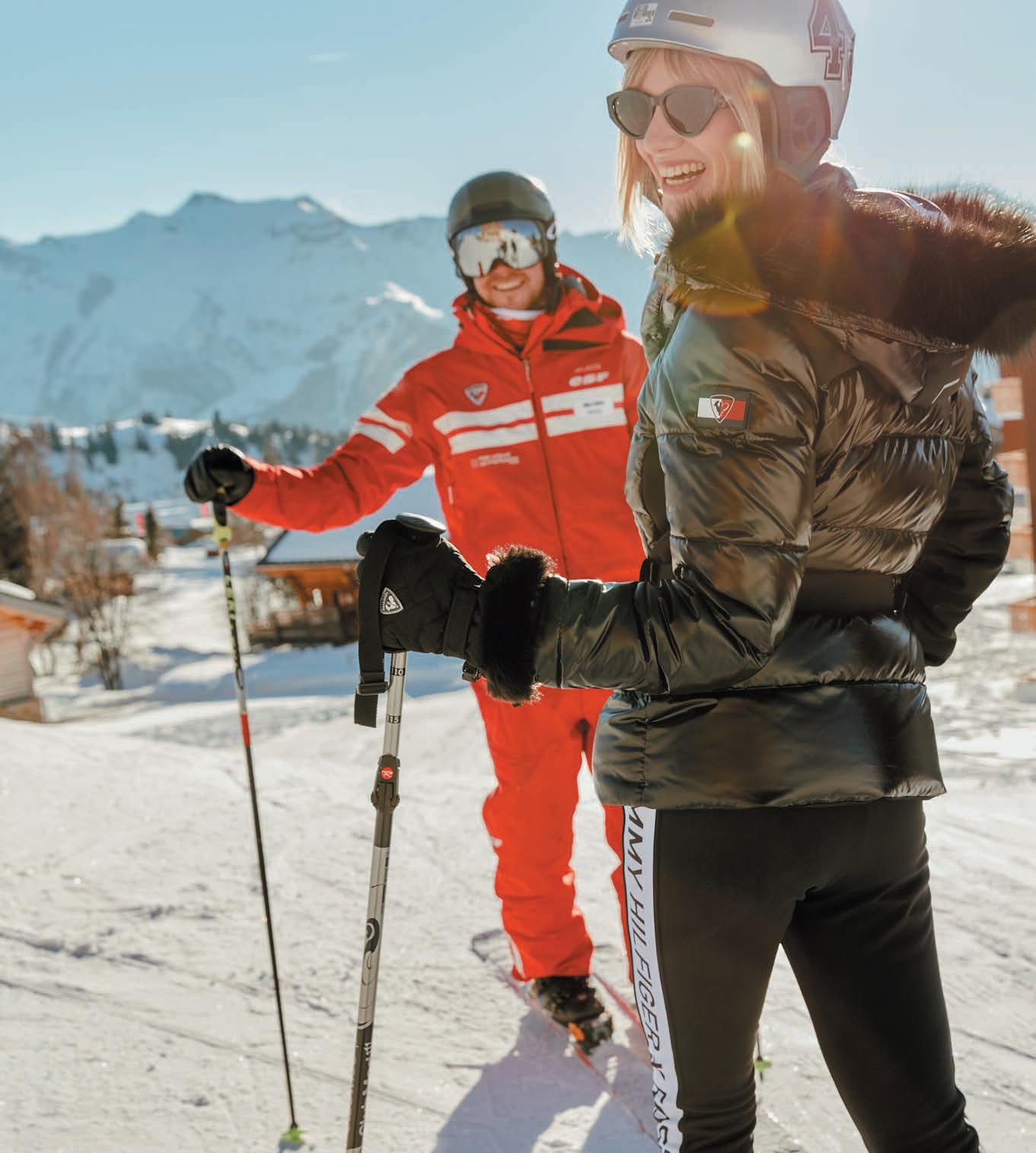


















SEPTEMBER 2024


THE CANADIAN WOMEN WHO ARE MAKING CHANGES FOR THE BETTER

TREND REPORT
EVERYTHING YOU NEED TO KNOW ABOUT FALL/WINTER FASHION & BEAUTY








































































































SEPTEMBER 2024

42 SOCIETY Meet eight Canadian women who are making a difference. BY SADAF AHSAN
56 BEAUTY How to replicate the hottest hair and makeup runway looks. BY JOANIE PIETRACUPA
81 FASHION The top styles from the fall/winter 2024/2025 season. BY JOANNA FOX
96 CELEBRITY Catherine O’Hara on life, laughter and the importance of looking forward. BY JOANNA FOX
29 STYLE Boho is back, and it’s bigger than ever. BY MONICA AINLEY
32 STYLE Designer Golnar Ahmadian is making a statement. BY ERICA NGAO
33 SHOPPING Romantic shapes.
35 SHOPPING Plaids and checks.
36 STYLE Donna Karan classics are making a comeback. BY RANDI BERGMAN
38 STYLE Are we all just living in an algorithm-driven fashion world? BY CAIA HAGEL
40 STYLE Inside the new Tiffany Blue Book collection, Tiffany Celeste. BY JOANNA FOX
108 FASHION British fashion brands shine bright on the streets of London.
PUBLISHER SOPHIE BANFORD
EDITOR-IN-CHIEF JOANNA FOX
BEAUTY DIRECTORS THÉO DUPUIS-CARBONNEAU (INTERIM), KATHERINE LALANCETTE (ON LEAVE) ART DIRECTORS ANNE-SOPHIE PERREAULT (INTERIM), SAMANTHA PUTH (ON LEAVE) GRAPHIC DESIGNERS LAURENCE FONTAINE, MARIE-ÉLAINE GRANT
DIGITAL DIRECTOR CYNTHIA QUELLET
DIGITAL CONTENT MANAGER MELISSA FEJTEK
CONTRIBUTORS
CAITLIN AGNEW, SADAF AHSAN, MONICA AINLEY, MACA ATENCIO, RANDI BERGMAN, VAL DESJARDINS, VANESSA DL, AMAN DOSANJ, JANE FIELDING, ADRIENNE GAFFNEY, CASSIE GILL, CAIA HAGEL, LESA HANNAH, ROBB JAMIESON, PATRICIA KAROUNOS, PÉNÉLOPE LEMAY, ELISABETH MASSICOLLI, TRUC NGUYEN, JOANIE PIETRACUPA, NADIA PIZZIMENTI, CIARA RICKARD, CAITLIN STALL-PAQUET, EMILY TAMFO, MARGAUX VERDIER
TO REACH EDITORIAL: editors@ko-media.ca
TO REACH CUSTOMER SERVICE AND SUBSCRIPTIONS: 1-888-668-6056 or subscription@ko-media.ca
ADVERTISING SALES
VICE-PRESIDENT, STRATEGY, GROWTH & PARTNERSHIPS EMMANUELLE GIASSON, egiasson@ko-media.ca DIRECTOR, CONTENT & STRATEGIC PARTNERSHIPS ALEXANDRA PAPINEAU, apapineau@ko-media.ca STRATEGIST, CONTENT & STRATEGIC PARTNERSHIPS NOÉMIE QUILLERÉ, nquillere@ko-media.ca NATIONAL SALES DIRECTOR (TORONTO) MARCELLE WALLACE, mwallace@ko-media.ca NATIONAL SALES DIRECTOR (TORONTO) MARNI ARMOUR, marmour@ko-media.ca SALES DIRECTOR SANDRINE DAHAN, sdahan@ko-media.ca DIRECTOR OF NATIONAL SALES AND COMMERCIAL PERFORMANCE MARIÈVE LEMAY, mlemay@ko-media.ca MULTI-PLATFORM REPRESENTATIVE LOU ANN PARENT, lparent@ko-media.ca
DIGITAL SALES COORDINATOR LAURIE SCHULZ, lschulz@ko-media.ca
SALES DIRECTOR, STRATEGIC PARTNERSHIPS & INSIGHT CHANTAL FERLAND, cferland@ko-media.ca
SUPERVISOR, MULTI-PLATFORM PROJECTS TAMMY HURTEAU
MULTI-PLATFORM PROJECT MANAGERS MARIE-LAURENCE BLAIS, JEANNE BOUCHEL PRODUCTION COORDINATOR DAPHNÉ CHABOT-BRILLANT
KO MÉDIA INC.
PRESIDENT LOUIS MORISSETTE
GENERAL DIRECTOR SOPHIE BANFORD
DIRECTOR OF OPERATIONS CHARLES-DAVID CÔTÉ
MARKETING & CIRCULATION DIRECTOR MARIE-ANDRÉE PICOTTE
MARKETING & CIRCULATION MANAGER GABY BEAUDOIN
SPECIAL PROJECTS MANAGER CLAUDIA TREMBLAY
MARKETING & DISTRIBUTION COORDINATOR ALEXANDRA TOBON
SPECIAL PROJECTS MANAGER CHANTAL DURAND
FINANCIAL CONTROLLER RACHEL BOURDAGES
ACCOUNTING TECHNICIAN PAULINA RODRIGUEZ
BILLING KATHERINE BLANCHETTE
EXECUTIVE ASSISTANT MÉLISSANDRE LURETTE
ELLE® IS USED UNDER LICENSE FROM THE TRADEMARK OWNER, HACHETTE FILIPACCHI PRESSE, A SUBSIDIARY OF LAGARDÈRE SA
ELLE INTERNATIONAL CEO CONSTANCE BENQUÉ
CEO ELLE INTERNATIONAL LICENSES FRANÇOIS CORUZZI
SVP/INTERNATIONAL DIRECTOR OF ELLE VALÉRIA BESSOLO LLOPIZ
DEPUTY EDITORIAL DIRECTOR VIRGINIE DOLATA
SYNDICATION & EDITORIAL COORDINATOR FOR USA & NORTH AMERICA MONIQUE BONIOL
COPYRIGHTS MANAGER KENZA ALLAL
DATABASE MANAGER PASCAL IACONO
DIGITAL & GRAPHIC DESIGN DIRECTOR MARINE LE BRIS
MARKETING DIRECTOR MORGANE ROHÉE WWW.ELLEINTERNATIONAL.COM
INTERNATIONAL AD SALES HOUSE LAGARDÈRE GLOBAL ADVERTISING SVP/INTERNATIONAL ADVERTISING JULIAN DANIEL, jdaniel@lagarderenews.com


66 BEAUTY Milk is the latest rage in products and scents. BY LESA HANNAH
68 HEALTH What we now know about menopause and how this knowledge can help us. BY LESA HANNAH
70 WELLNESS The steamiest sex-toy trends. BY ELISABETH MASSICOLLI
72 BEAUTY Fendi’s latest perfume launch is a family affair. BY ADRIENNE GAFFNEY
76 HEALTH The new community hubs in health clubs and gyms. BY VAL DESJARDINS
78 BEAUTY The technology behind your favourite scents. BY CYNTHIA QUELLET
79 SHOPPING Setting the mood for fall.
48 SOCIETY The future of firefighting is more openminded and inclusive than ever. BY CAITLIN STALL-PAQUET
54 CULTURE The On Canada Project is your new digital source for understanding the past and present states of the world. BY EMILY TAMFO
115 TRAVEL A trip to New Zealand might be a trek, but it’s worth it. BY TRUC NGUYEN

120 TRAVEL 48 hours in Tokyo. BY CASSIE GILL
123 FOOD Margaux Verdier shares her favourite Brussels sprouts recipe.
124 FOOD Former Food&Wine critic Khushbu Shah now has a cookbook of her own. BY AMAN DOSANJ
126 DESIGN Go for natural elements to perk up your decor.

Catherine O’Hara is wearing a blazer, a shirt, trousers, a tie and a bag by Schiaparelli and earrings and a ring by Alexis Bittar. Photographer Royal Gilbert Creative director Olivia Leblanc Stylist Juliana Schiavinatto Makeup artist Jennifer Tioseco (The Wall Group) Hairstylist Owen Gould (The Wall Group) Editorial producer Pénélope Lemay Executive producer Greg Broussard Photographer’s assistants Zachery Hobler, Jared Fix and Yoshi Miyakazi Stylist’s assistant Alexis Kossel Production assistant Joseph Martin Location Bespoke Locations
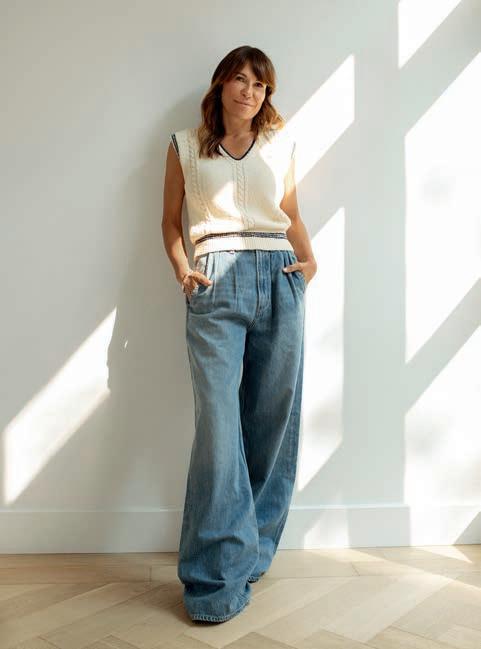
FOR ALMOST FIVE DECADES , Catherine O’Hara, our September cover star, has kept us entertained with her natural comedic talent, her thoughtful, intelligent characters and a passion for her craft that continues to inspire generation after generation.
O’Hara has made her mark as a legendary Canadian treasure, setting a high bar and paving the way for so many women—both in her industry and beyond. Over the course of her long and successful career, she has always turned to comedy and laughter as a lens through which to see the world. And at 70 years old, she continues to do so—to everyone’s absolute delight.
This issue of ELLE Canada is all about powerful women who are also giving us another perspective. O’Hara is one, of

course, but we’re also looking at women who are breaking the glass ceiling and making big changes in their respective industries as well as those who are taking on climate change by re-examining the way we fight fires. There are women who are taking a digital grassroots approach to looking at politics and the state of the world, women who are paving the way in food criticism and cooking and women who are pioneers in the fashion industry, helping make it both more inclusive—before that was ever considered a mainstream approach—and more innovative and artistic. To Catherine O’Hara and all these exceptional women we admire, we thank you for constantly—and bravely— pushing forward and embracing creativity, individuality and fearlessness. But most importantly, we thank you for always being true to yourself. Happy reading!
Sophie Banford , publisher @sophiebanford






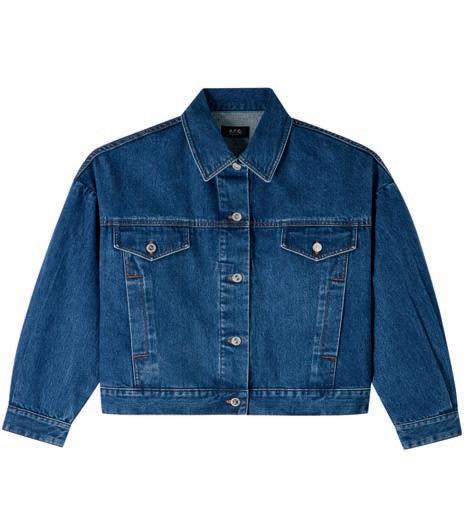
Bring on the accessories with this set of stackable bracelets.
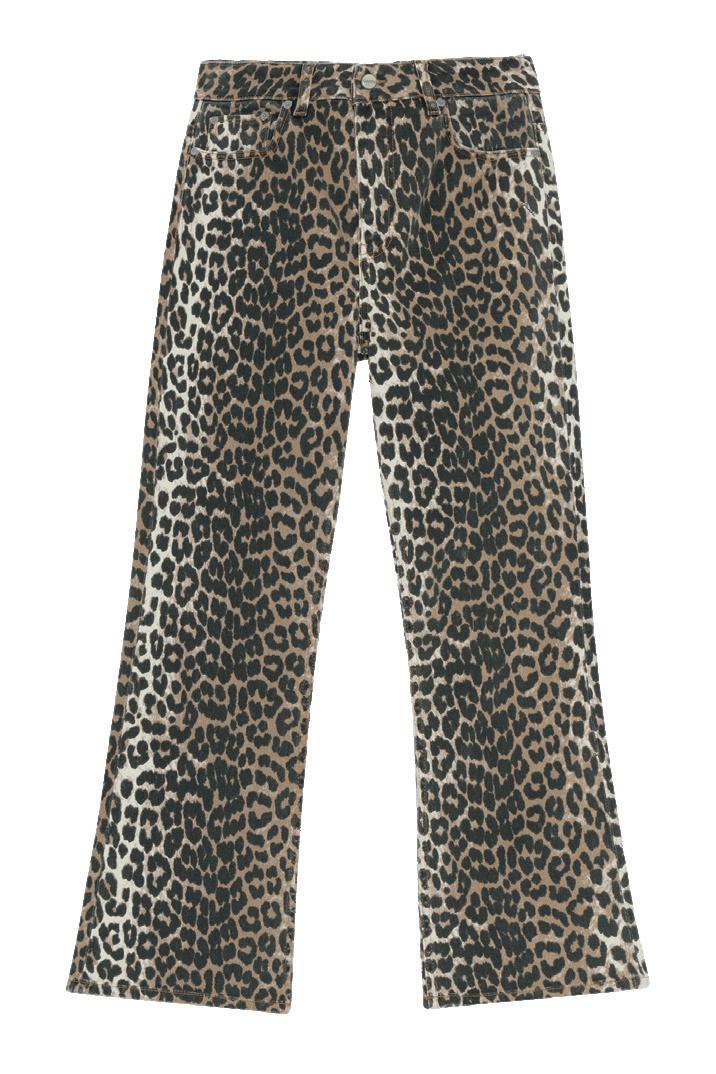
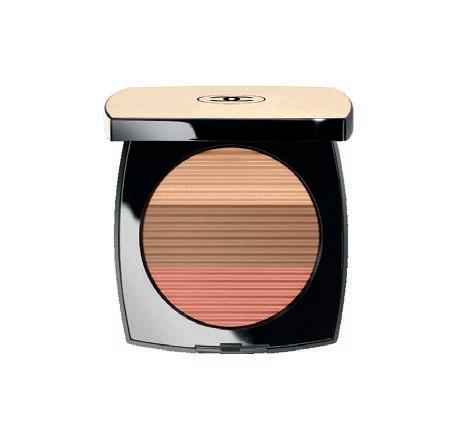
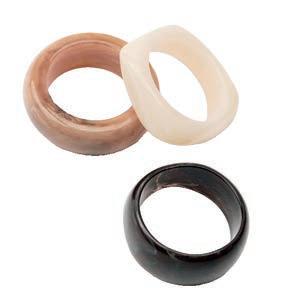
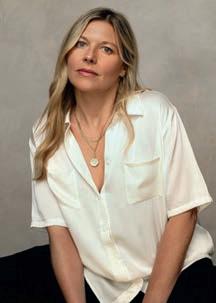
SKIRT, THE FRANKIE SHOP ($201, THEFRANKIESHOP.COM) Keep that summer glow going strong with definitely makes a difference.
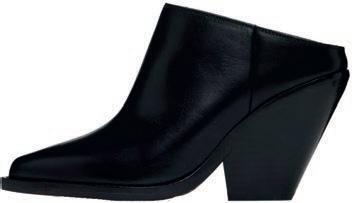
Get inspired for the cooler season with some of editor-in-chief JOANNA FOX ’s mix-and-match staples and beauty faves. before tights season starts?
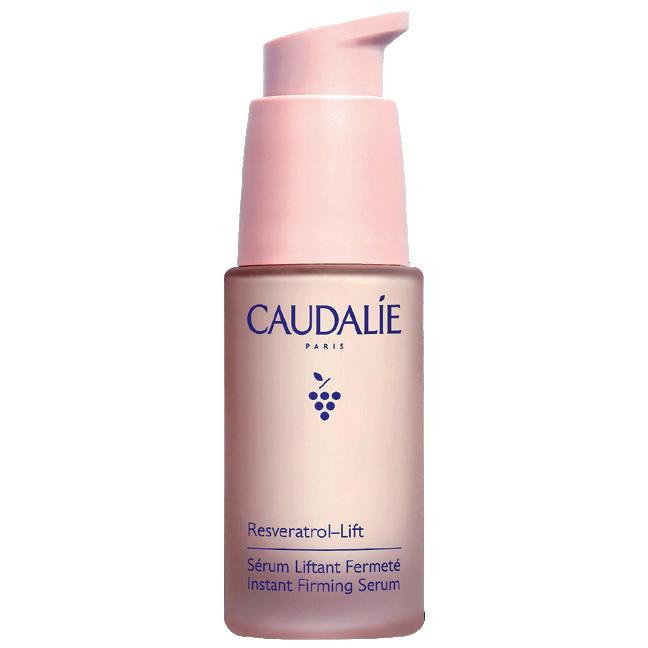

They can be dressed up or down and are so cool and comfortable. FOND SWEATSHIRT, RACHEL COMEY ($435, RACHELCOMEY.COM)

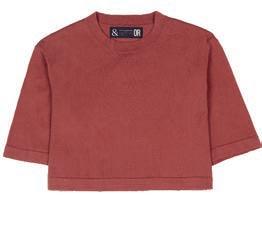

Sets are so versatile as you can pair them or split them up, and these pieces—in a light knit and an autumnal colour—are ideal for this time of year. SKIRT 01 AND TEE 02, &OR COLLECTIVE ($375 AND $160, HOLTRENFREW.COM)
the cowboyboot trend with a more subtle tip of the hat.
HEELS, ISABEL MARANT ($1,170, SSENSE.COM) I love these earrings because you can customize them to suit your mood—or your outfit.
HOOPS, MEJURI ($248, MEJURI.COM)

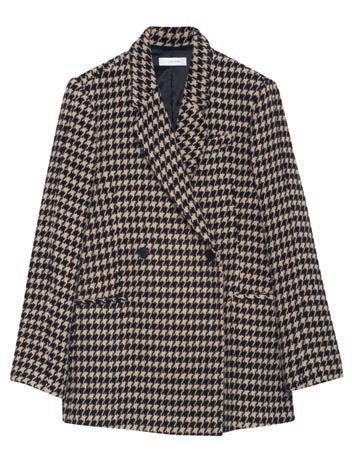
What’s on the ELLE editors’ radar right now.

MARIMEKKO, the Finnish lifestyle brand best known for its embrace of print and colour, just launched its first denim collection. Ranging in price from $375 to $535, the tightly edited Marimekko Maridenim capsule includes three jean styles in five classic washes as well as a matching set in the brand’s signature Unikko floral print for a fun Canadian tuxedo. Plus, every piece in the responsibly produced range is made with a mix of organic and recycled cotton and designed to be easier to recycle at the end of its life thanks to removable buttons, very little hardware and zero stretch. MARIMEKKOVANCOUVER.COM
“It’s amazing. It lasts really long, it’s extremely comfortable and it’s very smooth and easy to apply. It’s beautiful. In my opinion, it’s the best matte lipstick
“I wanted something lighter, a bit smaller and more modern, so we made it 30 percent thinner. And I wanted to make it a gold colour, which I feel is much more luminous.”
“Each shade is completely custom, and, honestly, I’m so proud of them. I’m so specific with colours that it’s hard for me to be happy, and I’m so happy. I can’t pick one shade—I’m
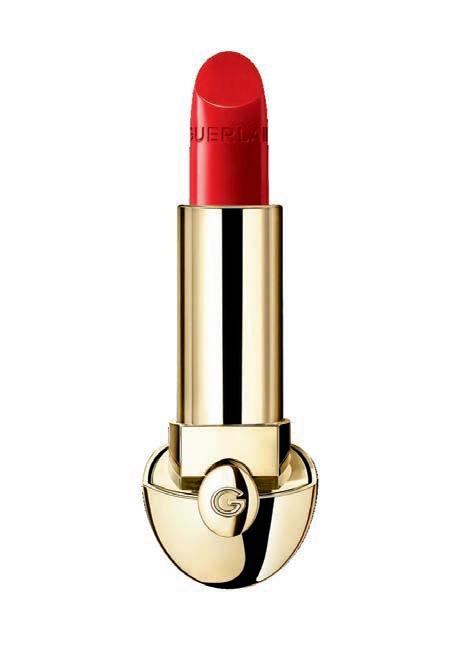
French beauty brand GUERLAIN’s famous Rouge G—a customizable jewel lipstick in a chrome-plated-metal case that was first introduced 15 years ago—is being reinvented. Initiated by VIOLETTE SERRAT, Guerlain’s creative director of makeup, Rouge G’s new ultra-care version comes in 40 satin or velvet matte shades, and there are nine jewelled cases (sold separately) to choose from. The formula—which contains oleo extract, an exclusive complex created with lily flower and sweet almond oil—has smoothing, hydrating and plumping properties that help protect your pout. We recently spoke with Serrat about Rouge G and what she loves about it.
GUERLAIN ROUGE G THE CUSTOMIZABLE ULTRA-CARE LIPSTICK CASE AND LIPSTICK REFILL
($48 AND $52, GUERLAIN.COM)
To kick-start the new season, Toronto’s Museum of Contemporary Art is presenting a trio of ambitious solo exhibitions from September 8, 2024, to January 26, 2025. Taking over its ground floor with a new large-scale painting installation is British Columbia’s MICHAEL NICOLL YAHGULANAAS , a Haida graphic-novel author and visual artist who created Haida manga, a brilliant hybrid of Pacific Northwest Indigenous art and Japanese comics. On the second floor, influential Philadelphia-based Venezuelan-American multimedia artist ALEX DA CORTE transports us to the brightly coloured inner workings of his mind. With work steeped in popular culture, he presents a multi-screen video installation and a collection of small sculptures, models and cultural ephemera in lit vitrines. The third floor is the setting for the first Canadian institutional exhibition of TISHAN HSU, a New York artist who explores the effects of technology on the human body and has been active since the early 1980s. New and older works speak to our increasing feelings of alienation and fragility as our minds and bodies interact with digital technology. MOCA.CA



Toronto-based luxury hair-care brand
MELA & KERA has finally made its way to Quebec salons, and it’s found the perfect retail home at Etiket, Montreal’s über-curated boutique and spa. Founded by award-winning Canadian celebrity hairstylist, colourist and salon owner JASON LEE , Mela & Kera’s seven-product collection includes shampoos, conditioners and styling aids designed to leave hair super soft and nourished. “Mela & Kera represents the next generation in high-performance hair care,” says Lee. “I’ve spent more time in hair salons than anywhere else in my life. Working with so many different hair types and seeing first-hand the wide variety of hair needs is what drove me to create this line. There wasn’t anything on the market that could deliver the lushness and vibrancy that my clients sought, so I decided to create professional-grade products for the modern luxury customer.”
MELAANDKERA.COM
Toronto fashion designer Adrienne Butikofer has a good sense of humour, and it’s reflected in her line, OKAYOK , through punchy patterns and tongue-in-cheek slogans that are sure to make you stop and smile. “I’m drawn to graphics, words and gentle humour because they help me connect with people and, in turn, help them connect with others,” says Butikofer. Since launching OKAYOK in 2017, the designer has been committed to low-waste local production and has worked with Toronto fabric mills and dye houses to craft her wares. Starting this season, though, she’s going even lower by using only deadstock materials from other locally produced pieces. “We’re small, agile and creative enough to make do with what’s available, so that feels like the right way forward,” she says. “It’s a privilege and a responsibility to be manufacturing anything these days—one that I don’t take lightly.” Butikofer proves that less really is more. OKAYOK.CA
Virginie Roy, founder of Montrealbased jewellery brand PROUD DIAMOND, grew up around the coveted sparkling gemstones—her grandfather was a gold- and diamond-manufacturer sales agent. But the more she learned about the consequences of conflict diamonds, the less she wanted to enter that world...until she got her hands on some early examples of lab-grown diamonds a few years ago. With an eye for design and the desire to make jewellery with a conscience, Roy created a company that uses recycled gold, sells only lab-grown gems and will give your old gold jewellery and stones a second life. She also offers fully customizable pieces via a transparent process that can fit any budget. Stylish, ethical and affordable? Now that’s something to be proud of.

PROUDDIAMOND.COM
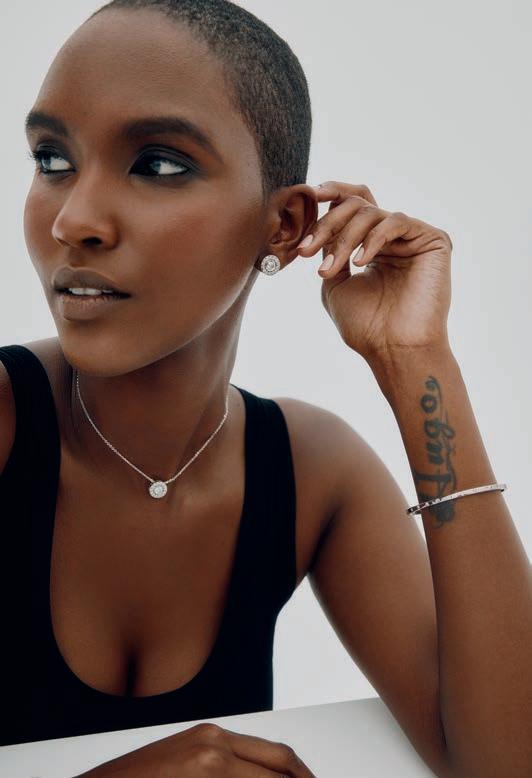
The first season of PACHINKO (a sweeping Apple TV+ adaptation of the bestselling Min Jin Lee novel that’s told in Korean, Japanese and English) was one of the most captivating series of 2022—so much so that the multi-generational saga won a flurry of accolades, including a prestigious Peabody Award. The period drama is finally back for an eight-episode second season (August 23), continuing the story of the inimitable Sunja (played at different ages by Minha Kim and Oscar winner Youn Yuh-jung) as she leaves her home in occupied Korea to move to Japan and exploring themes of love, family and resiliency. Have tissues handy, and prepare to not be able to look away from your screen. APPLE.COM
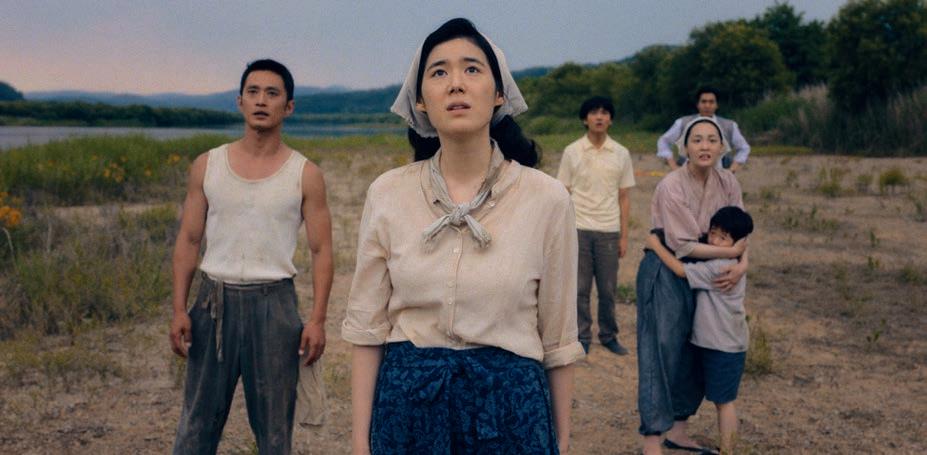

Those who have been lucky enough to experience one of Edition’s stylish luxury hotels in jet-setter-friendly locales might be used to a cultural immersion of sorts. (Think a subterranean neon-lit bowling alley in Miami or a tavern with wall-to-wall Edwardian paintings in London.) But the brand’s first location in Mexico boasts an entirely new kind of immersion: a tropical one. Nestled in a 250-hectare nature reserve, THE RIVIERA MAYA EDITION AT KANAI quite literally rises from low-lying mangroves that wrap around the property and provide lush, verdant views that are preserved thanks to the hotel’s minimal environmental footprint. Rainforest plants, iguanas and all manner of wildlife are pleasantly inescapable, whether you’re on your walk to morning yoga (on a deck that’s encased in a magical Mayan-inspired bamboo dome) or one of the paths that link guest rooms to the five restaurants and bars—each of which serves modern takes on local cuisine. At the edge of the property, turquoise waters and pristine white-sand beaches beckon, as do a beach club, floating cabanas and some seriously incredible ceviche. Commune with nature all day long, but leave some time to hit The Spa, which offers a multi-sensory experience complete with hydrotherapy pools, a Turkish hammam, an infrared sauna and indoor-outdoor treatment rooms where you can bliss out with one of the many massages, facials or body treatments available. Need we say more? EDITIONHOTELS.COM
Introducing the revival of a 2000s icon: PANDORA’s signature heart charm returns this fall with a modern twist. The Danish jewellery brand is relaunching it with an updated look: a puffed-up, rounder shape and enhanced metal placement for secure positioning. Available in a standard or maxi size and in silver or gold, this playful symbol of love adds a personal touch to your favourite hoop earrings, necklace or charm bracelet. CA.PANDORA.NET

Canadian travel-and-lifestyle brand
MONOS is on the move. Known for its stylish and durable suitcases, bags and accessories, the award-winning West Coast brand—whose Vancouver flagship opened last year—has made its way across the country with a new store on Ossington Avenue in Toronto. Designed in collaboration with interior- and conceptdesign studio Ste Marie, the store has soft, sweeping forms, soothing tones and a curated material palette, making it the perfect dreamy setting in which to accessorize your next trip. CA.MONOS.COM




“The skin around the eyes is different from that of the cheeks, forehead and chin—it’s much thinner,” says Annie Black, international scientific director at Lancôme. “Its barrier function is much less effective.” Which is why the French beauty house developed a treatment for this delicate area, RÉNERGIE H.C.F. TRIPLE SERUM EYE , featuring a combination of potent ingredients—vitamin C, niacinamide, hyaluronic acid and Vitamin F—that are separated in a patented triple-chamber bottle until the moment of application. “This ensures that whether you’re on the first day of use or the eighth week, the ingredients remain stable and effective,” says Black. The outcome? Noticeable improvements in wrinkles, fine lines, crow’s feet, puffiness and, most importantly, skin firmness.
LANCÔME
With the September opening of ROYALMOUNT, Montreal will enter a bold new era of experiential luxury living. A visionary mixed-use development of retail, hospitality, residential and office spaces complemented by an elevated park and entertainment venues, Royalmount is the new home of several global designer brands, with Louis Vuitton and Gucci both setting up their first Montreal flagships here alongside the likes of Anine Bing, David Yurman, Jimmy Choo, Michael Kors, Moncler, Saint Laurent, TAG Heuer, Tiffany & Co. and Versace. Beloved local fashion houses, including Aldo, Mackage, Moose Knuckles and Rudsak, have a presence here too. Beyond apparel, there’s no shortage of skincare, cosmetics and fragrance at Rennaï—Royalmount’s major wellness space, which is also home to a Dermalogica flagship—while foodies can choose their nosh from some 60 dining options. Sitting at 1.3 million square metres and just a short Metro ride from downtown, Royalmount is poised to shift the Montreal landscape and become a destination for locals and visitors alike.

Feeling the urge for a weekend getaway? Retreat to the SOMEWHERE INN in Collingwood, Ont., a historic century home that has been transformed into a charming dogfriendly boutique hotel and is located steps from downtown Collingwood—which is at the southern end of Georgian Bay—and a short drive from Blue Mountain. The spacious treeshaded grounds provide an ideal place to unwind. Disconnect and recharge by communal firepits, enjoy thermotherapy circuits with saunas and cold plunges and relax on loungers scattered throughout the property. Book the luxury king room to enjoy the free-standing tub, and be sure to spend some time at the Lobby Bar, which transforms from a chill morning café into a late-night lounge space offering shareable bites, natural wines and locally sourced sweets.
SOMEWHEREINN.CA
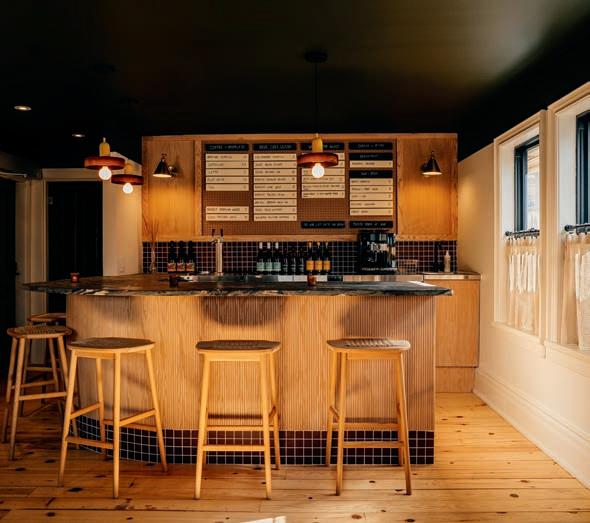
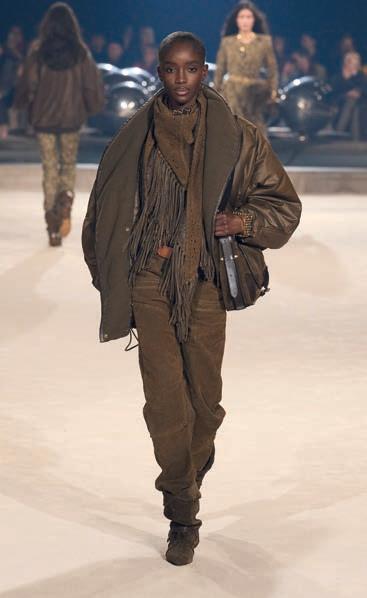


The fringes and free-flowing fabrics of the 1970s get a modern update.
By MONICA AINLEY
IN FASHION, WHAT GOES AROUND INEVITABLY COMES AROUND. This unwritten rule seems to apply to even the most unlikely of trends. Yet millennials will perhaps be surprised to see the almighty boho chic of their adolescence—a look favoured by virtually every celebrity of the early aughts—back quite so soon.
I, for one, have noticed a fair few Balenciaga City bags on the streets of Paris lately—except they’re slung nonchalantly over the shoulders of teens young enough to have inherited them from their moms. Of course, if the great ’90s revival of recent seasons is anything to go on, 20 years is more than enough time for a trend to leave us fully and then bounce back into the spotlight.
Thus, two decades after Sienna Miller, the Olsen twins, Mischa Barton and Nicole Richie (the latter two’s outfits masterminded by stylist and boho queen Rachel Zoe) showed the world how good voluminous dresses, dizzying patterns and extra-large sunglasses can look via the pages of US Weekly, boho is back for another moment in the sun. Hopefully, there won’t be quite as many jagged clavicles on display this time; the “Zoebots” look of the 2000s, with its seemingly obligatory size-0 frame, was not without its controversies. But, steadfast in her taste, Zoe herself can still be seen sporting billowing printed caftans and oversized sunglasses on her Instagram account today.
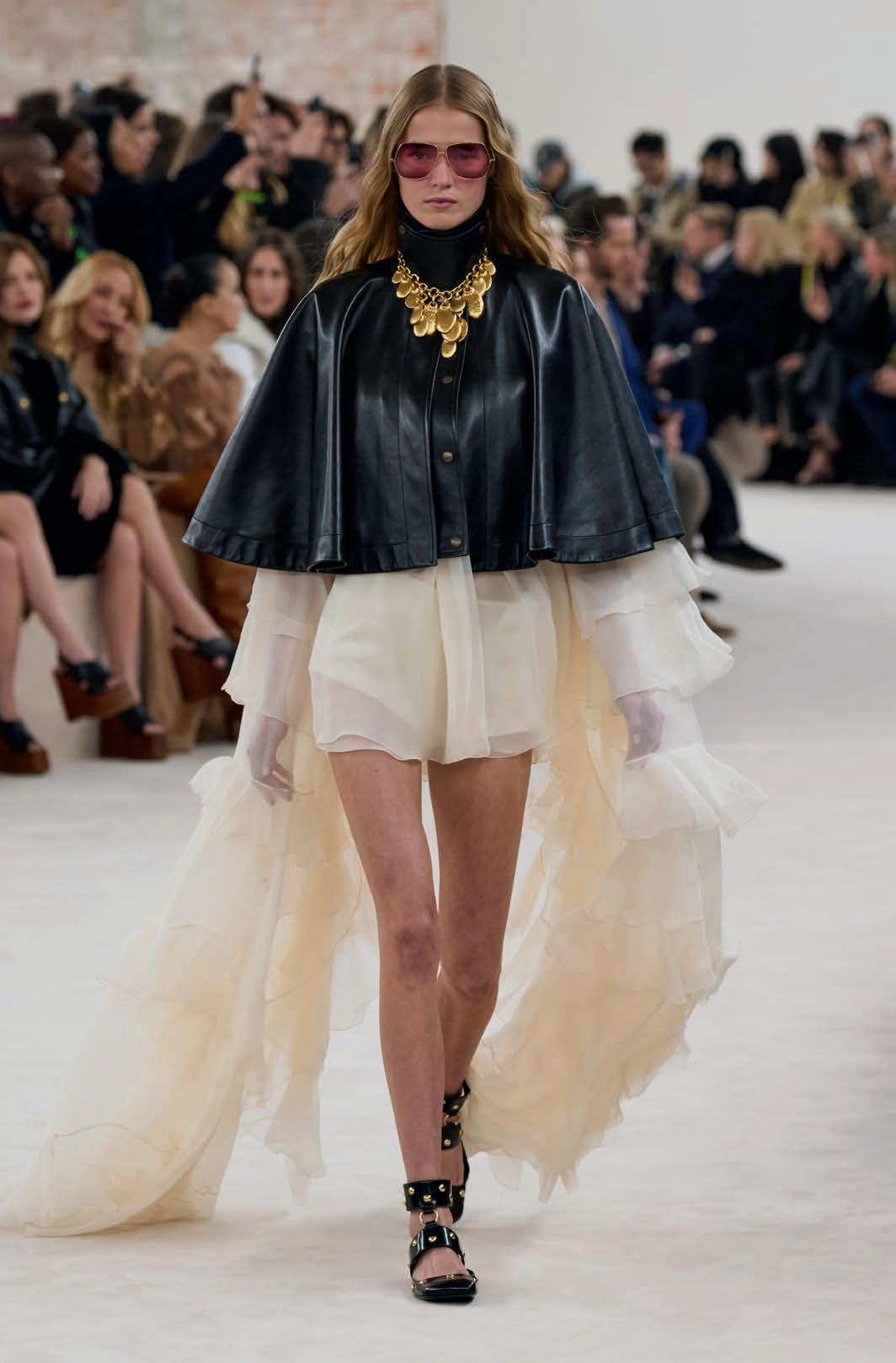
BOHEMIAN STYLE AS WE KNOW IT CAN BE TRACED BACK TO THE FREEDOMSEEKING 1970S. IT REFLECTED A COLLECTIVE CULTURAL YEARNING FOR LIBERTY AND SOFT MOVEMENT— IN CLOTHING AND IN LIFE.
It’s fair to say that part of the reason bohomania was particularly pervasive is that the trend coincided with the height of paparazzi-led celebrity culture. Who could forget Miller’s messy waves, rolled-down Ugg boots, shredded miniskirt and Western belt (boho and cowboy go hand in hand) at Glastonbury in 2004? Or Kate Moss in a gold Lurex minidress paired with bare legs and the muddiest of wellies at the festival in 2005? They were the outfits that launched a thousand copycats—yet in large part this aughts style was itself a reboot.
Bohemian style as we know it can be traced back to the freedom-seeking 1970s. It reflected a collective cultural yearning for liberty and soft movement—in clothing and in life—and celebrated the abandonment of conventional lifestyles and outdated rules around sexuality. The true origins of boho are harder to pinpoint, but a bohemian counterculture did arise in 19th-century France, born out of the French Revolution and the ensuing flourishing of the arts, which had been liberated from strictly aristocratic patronage. Around the same era, “bohemian” was also a disparaging label used to describe Romani people, believed to have come to France from Bohemia, an ancient medieval kingdom that now forms a large part of the Czech Republic.
Happily, the term would lose its pejorative subtext and come to describe a section of society that lives an unconventional, often nomadic arts-focused lifestyle, reflected both in dress sense and an openness of spirit. Thus, 20th-century qualities associated with la vie bohème were a lack of concern for money, structure and bourgeois codes—or, as a song from the hit Broadway musical Rent puts it: “We raise our glass, you bet your ass, to / La vie bohème / To loving tension, no pension / To more than one dimension / To starving for attention / Hating convention / Hating pretension.”
Today’s version of the look feels as natural and nonchalant as ever, with billowing, fluid fabrics, flowing fringes and prints inspired by European artisans—though it has perhaps a worldlier edge, juxtaposing feminine silhouettes with dark leather capes, fringed cowboy chaps and even thigh-high leather boots. It also proposes an artful alternative to gen Z’s beloved
relaxed-fit cargo pants and sweatshirts, maintaining the comfort factor while offering a little more mystery and sophistication.
The trend started slowly with a handful of embellished waistcoats and peasant blouses on a solid number of spring/ summer 2024 runways. But it was the debut fall/winter 2024/2025 collection from Chloé’s new creative director, Chemena Kamali, that solidified both boho’s return and Kamali’s legitimacy as creative director of the storied French house. The billowing silk dresses beloved by “Chloé girls” of old reappeared in a flutter of ruffles. Sheer fabrics were tucked into thigh-high leather boots, and floaty tops were grounded by tailored trousers and leather capes. The mood was classic Chloé—the kind of wearable femininity that made it a bestseller in decades past—especially the capes, which were reminiscent of the late Karl Lagerfeld’s 1970s stint at the fashion house.
If Chloé’s show was a celebrity-studded fashion “moment”— with Miller herself in the front row, once again in beachy waves and a leather jacket—Rabanne’s was a collegiate collage of clashing patterns and textures, proving that just about any two prints can work together with the right attitude. (These will be easy looks to imitate via thrift-store-flannel finds and embellished vintage coats.) True to form, Isabel Marant, who rarely strays from her travel-inspired version of earthy (as opposed to quiet) luxury, showed blanket coats, slouchy trousers and tassels for modern-day nomads. Meanwhile, New York designer Ulla Johnson offered super-voluminous dresses worthy of Anita Pallenberg at a Rolling Stones concert in 1977. Johnson showed off her talent for both colour and silhouettes, taking them in a romantic, carefree direction and making a solid case for autumnal ochres and saffron yellows.
The flowing fabrics of summer need not be abandoned as the air cools. On the street this fall, runway maximalism can be easily translated into a tempered version with an oversized floaty skirt, a pair of biker boots or simple sneakers, a relaxed-fit vintage tee, a sweater or checked shirt tied around the waist and a leather jacket. Miller, Pallenberg and the art-loving bohemians of yore would surely approve.
By ERICA NGAO
NO MATTER WHAT DISCIPLINE SHE’S WORKING IN , Golnar Ahmadian has a proven knack for bringing her creative visions to life. After moving from Tehran to Toronto, she turned her eye for design—honed by an education in architecture— toward building a handmade-jewellery line, Lo’bat. Its growth encouraged Ahmadian to continue expanding her repertoire into clothing and lifestyle. “I don’t like to restrict myself to only one field, one style or one category,” she says.
Golshaah began as an outlet for sharing her interior-design projects and eventually morphed into an experimental-knitwear capsule with pieces featuring embroidery that references Iranian history. “It was a very cultural project,” says Ahmadian. “I wanted to show my background and Iran but in a contemporary way.” Since then, she’s put out several collections while also collaborating with her partner, Majid Darabiha, on the home-objects and furniture side of the brand.
For Ahmadian, Golshaah’s DNA resides in her signature design features: cascading layers, dramatic volume and strong, structured silhouettes. The clothes, while striking on their own, take on a new life when worn thanks to delicately playful details like external shoulder pads and unexpected belt loops. With this, Ahmadian passes the creative power back to the wearer so they can make each piece their own.
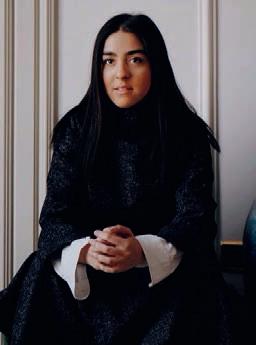
“I once got feedback that I should include little brochures with my clothes to show how many different ways you can style them,” she says with a smile.
“The important thing for me is that people feel confident when they wear a piece of mine. I like that the clothes can also be conversation starters. Fashion is a way to discover who you are. I love how people can have their own journey in the clothes that I make—and knowing that it’s probably going to be a totally different feeling than what I had in mind.”
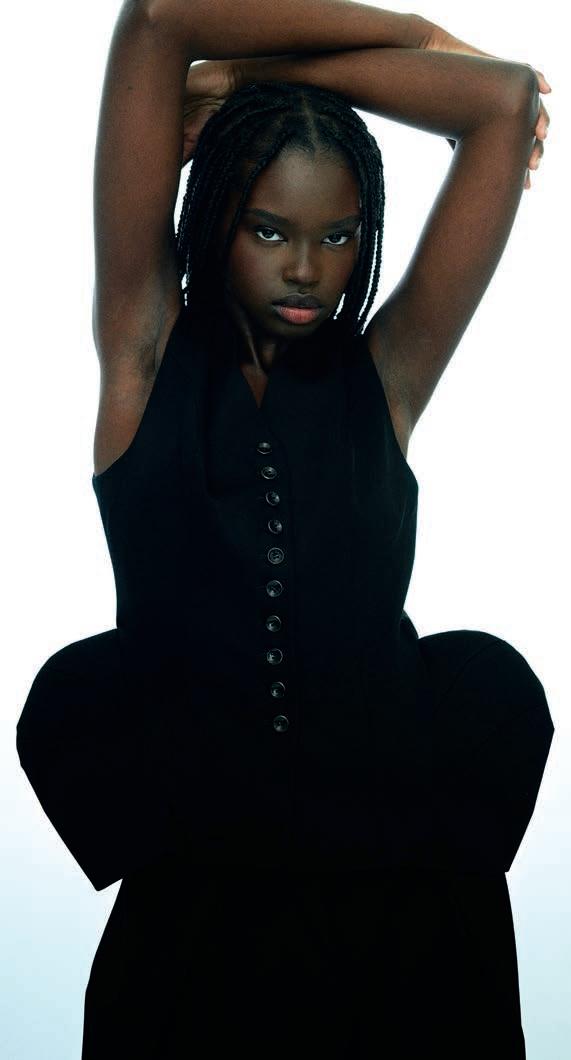
“An essential wardrobe is not just about a white shirt and simple pants that you can wear every day. To me, an essential piece is one that has a lot of details and a lot to say. It’s about how it inspires you to be creative in how you style it. With our pieces, there are so many different ways you can wear and style them. You can turn them around on your body, play around with the button closures or layer them over different pieces.”
INFINITE INSPIRATION
“Sometimes when I’m working on a furniture collection, I get inspiration for my clothing designs as well. Or when I’m working on a fashion collection, I feel like what I’m thinking about can also come out as a [piece of] furniture. The main [way I get] inspiration is by being out in the world all the time. I like to socialize with people and learn from what they’re going through. I have always felt like the core of all of these disciplines—architecture, fashion and jewellery—is design, and I’m privileged to have the chance to explore all of this.”

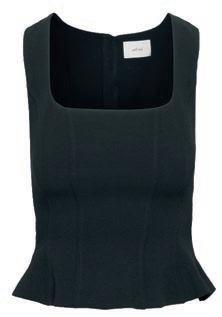
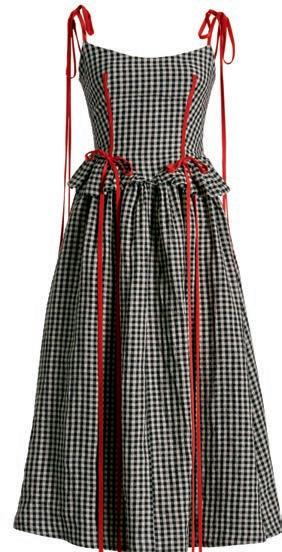
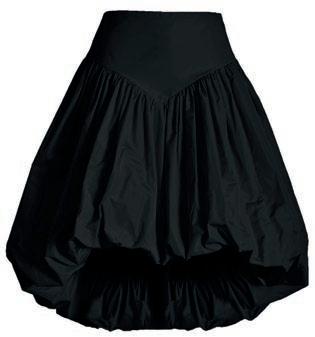
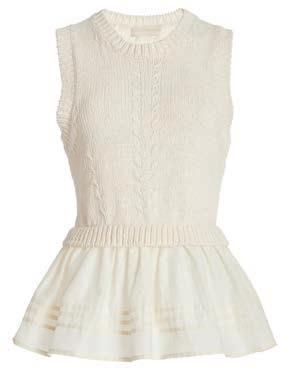

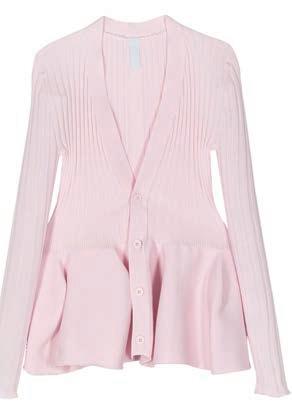

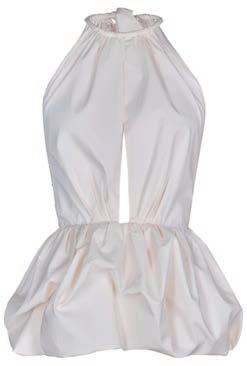


The rising Canadian filmmaker is set to take over your screens.
By PATRICIA KAROUNOS
EVEN IF YOU HAVEN’T REALIZED IT, you’ve seen the work of Ally Pankiw. The Canadian filmmaker worked as a story editor on Schitt’s Creek, has directed and produced music videos for the likes of Ariana Grande and Janelle Monáe, has worked on campaigns for brands such as Chanel and Loewe and has directed standout episodes of Mae Martin’s Netflix series Feel Good, Elle Fanning’s period dramedy The Great and British anthology series Black Mirror. Still, it took some time for her to figure out a key part of her filmmaking identity. “When I started getting chances to direct, I felt like I had to dress like [Lord of the Rings film series director] Peter Jackson,” says Pankiw, who splits her time between Toronto and L.A. “I was like, ‘I can’t actually be feminine on-set or I won’t be taken seriously.’ I would wear, like, work boots and polar fleece. And then the more I took myself seriously as a director and started gaining confidence and being like: ‘This is what I do. This is my job,’ [the more] I was able to lean into my femininity on-set. Now, I want to dress even more feminine than I might normally because I want to challenge people’s perception of what a director can look like.” That same boldness comes through onscreen in Pankiw’s debut feature film, I Used to Be Funny, which hit theatres to rave reviews earlier this summer and is available on demand now. Starring Rachel Sennott (Bottoms, Bodies Bodies Bodies), the movie follows a stand-up comedian who is struggling with PTSD and must face her trauma in order to help in the search for a missing teenage girl she used to nanny. It’s tense, compelling, deeply felt and a sure sign that this is only the beginning for Pankiw.
LONG JOURNEY “I started writing the script in 2013. It wasn’t shootable at that point—it was a draft. I really wanted to speak in a more authentic way to the experience of healing and recovery; I wanted to find a slightly more nuanced way to talk about those things. They’re often centred on, like, a very male, conventional narrative arc of ‘winning’ to heal—whether that be [through] vengeance, justice or retribution. That’s where the story would end. Maybe that’s beneficial to the healing process for some people, but it’s definitely not the end of many women’s recovery. I wanted to talk about the slog and day-to-day minutiae of recovery and how trauma bleeds out and has a ripple effect on so many different interpersonal relationships. It’s not some grand hero’s journey.”
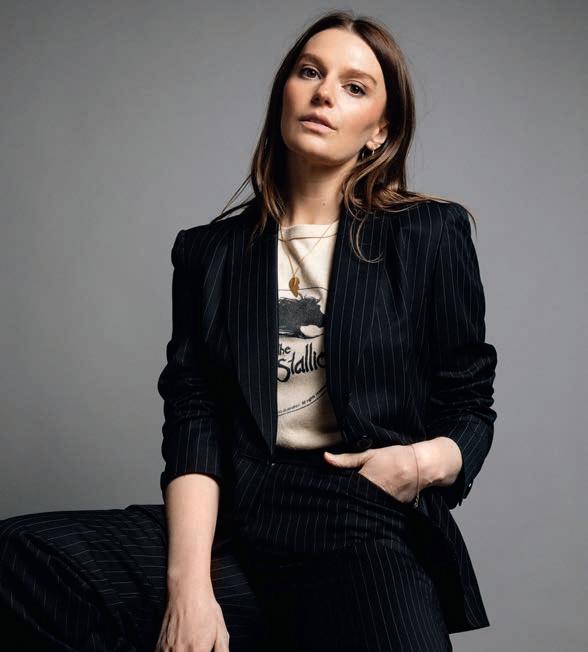
KEEPING IT REAL “If anything, [the script] kept getting more relevant. When I first started writing it, it was like a personal exploration of themes that have been part of my life. Then, after #MeToo, there was sort of an explosion of retribution storylines around this type of subject matter, so my want and need for something that handled [the topic] a bit more delicately—speaking about it the way my friends and I actually speak about these types of things— became even more important. The thing that was buried or not focused on a lot was the loss of humour and joy. If we don’t protect young women in society, we lose so much perspective, voice, comedy and artistic contribution. And that loss happens very quietly—we don’t even really notice it’s happening.”
READY OR NOT “I felt ready [to make a movie] in terms of knowing how to tell the story and knowing how to make it all happen, but I didn’t feel ready in terms of the amount of money and the shoot days [needed]. We had very few resources—we only had 18 days [to shoot], and we had a very small budget. We were sort of staring down the barrel. But you have to just go when you can go; you have to make something as soon as you can make it because you might not get another chance. That’s also part of the fun and craziness of filmmaking—sometimes you have to do it before you’re ready.”
ONSCREEN FASHION “The story that clothing can tell—what it can tell us about a character, a person, a history—is really exciting. I’ve always made fun of male directors who dress women like a manic pixie dream girl—say, in a babydoll dress—or the classic comedy girl in a tank top with an open checkered shirt overtop. There’s no specificity. For a really long time, fashion was an interest, not something you [associated] with a filmmaker. But why wouldn’t you care about how things are presented aesthetically or how [clothing] moves? That only makes you a more-tuned-in director. Caring about how young women actually want to present themselves makes for more authentic character building. I don’t think it’s silly—and I think you can tell when a director does it.”


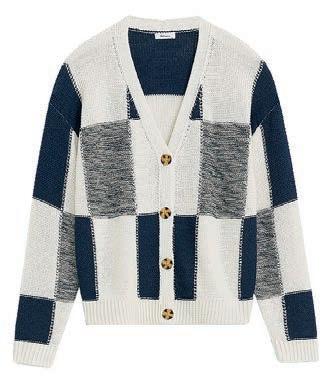

Breathe new life into a fall staple by layering plaids, checks and tartans in one look.

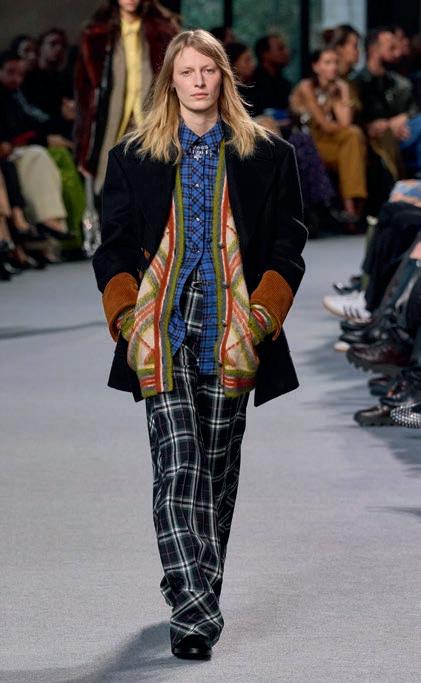
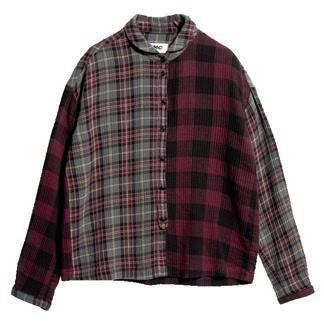
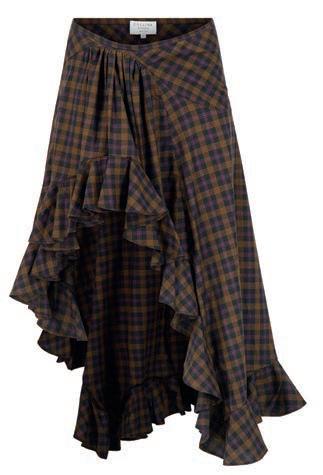
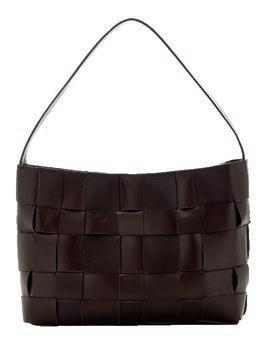




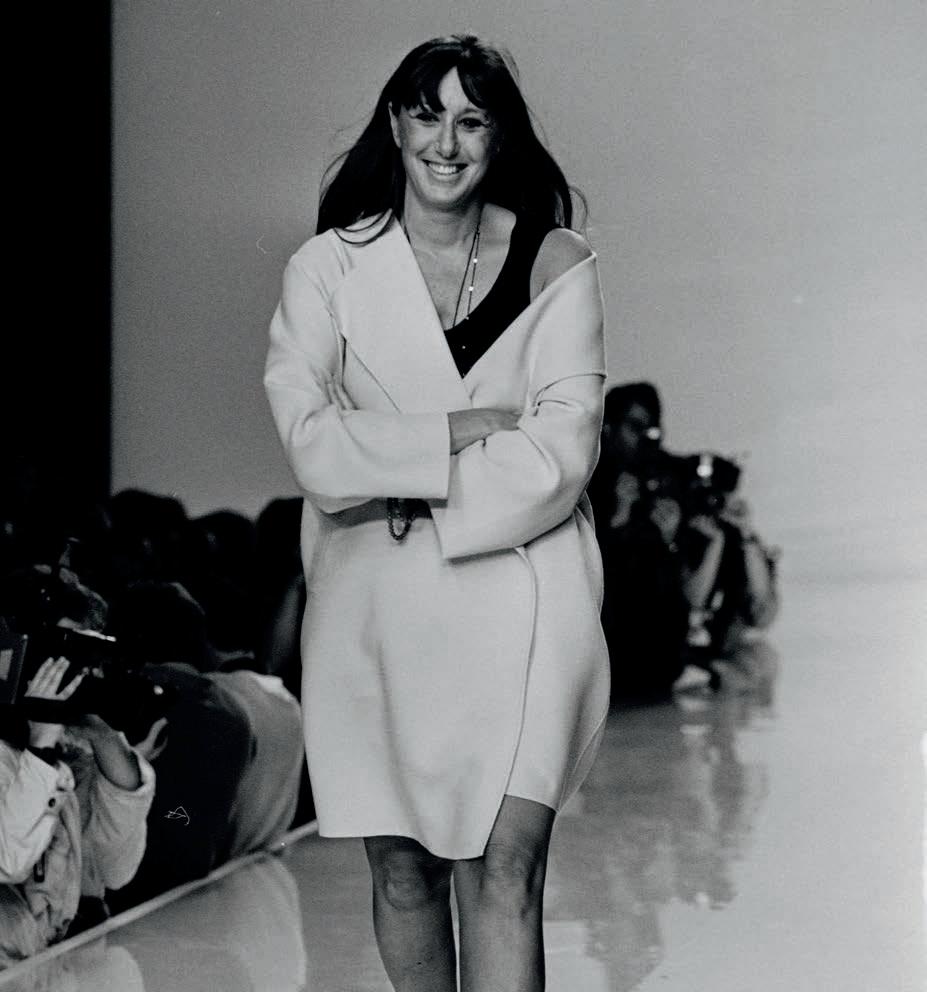
Haute vintage has never been hotter. In a new column, RANDI BERGMAN explores the designers experiencing a renaissance and the aesthetic markers that make their archives collectible.
FOR A GROWING NUMBER OF FASHION OBSESSIVES, a desire for archival designer pieces has eclipsed the seasonal pull of snapping up whatever just came down the runway. Shopping vintage has obvious perks: It’s better for the environment, it’s generally more affordable and it guarantees a certain level of inimitability. And with nostalgia levels at an all-time high, owning a piece of history—whether it’s a John Galliano newsprint dress plucked from an episode of Sex and the City or a signature ’90s Jean Paul Gaultier printed mesh top—is
akin to reliving a moment in time rather than just cosplaying it through reimagined takes.
It tracks, then, that the growing fetish for officewear—think skirtsuits, tailoring and the ubiquitous Hailey Bieber-inspired oversized-blazer-and-jeans combo—would lead us directly to a renewed obsession with Donna Karan, the original corporate baddie who changed the game for working women in the 1980s and ’90s with minimalist armour that helped them shatter glass ceilings and look fabulous while doing it.
Karan was born in Queens, New York, and studied at Parsons School of Design until she dropped out in 1967 to join Anne Klein, where she ascended to head designer after the eponymous founder’s passing in 1974. In 1985, she debuted her first Donna Karan New York collection, which was centred on the concept of “seven easy pieces”; it was a versatile capsule wardrobe comprising a bodysuit, a wrap-skirt, a tailored jacket, an LBD, a white shirt, a cashmere sweater and a leather jacket that would serve the day-to-night needs of those on a quest to have it all. Karan did her own test drives, often reflecting personally on her size-12 frame—a rare-for-the-era nod to size inclusivity. “So many women find assembling the right clothes bewildering today,” Karan told a reporter at the time. “They’ve discovered fast ways to put food on the table, but they do not know how to get their wardrobes together easily.” She served up a simplified formula, and it worked.
As Karan continued to grow an empire (she later launched her younger, more affordable DKNY diffusion line and a hugely successful collection of fragrances), she became even more focused on the female form, emphasizing it through sensual, flattering pieces that were often made up of sturdy stretch materials, such as elastane and viscose, that hugged curves like shapewear. A master of sexy power dressing, Karan became one of the titans of American fashion—and one of the only women in the industry leading a brand.
For Brooklyn-based designer reseller Marie Laboucarié, of Nina Gabbana Vintage, Karan’s pieces represent a pioneering, female-centric approach that is as relevant as ever. “What I like about Donna as a designer is that she’s a woman for women,” says Laboucarié. “She is all about comfort but still wants women to be elegant in their everyday life.” Laboucarié’s Donna Karan archive is being snapped up by a new generation of millennial working women who prefer its timeless practicality to the flashier archives of Roberto Cavalli and Versace. “With Donna, you know you’re going to be comfortable and it’s something you’re going to want to wear at the office and when you go out for dinner,” she says.
Karan stepped down from her role in 2015, but the “Donnassance” has continued beyond an appreciation for her originals. In February, Donna Karan New York announced a relaunch of the brand with a collection of ready-to-wear inspired by those pioneering seven easy pieces and a campaign starring the likes of Linda Evangelista, Cindy Crawford, Liya Kebede and Shalom Harlow. (The brand was acquired by American conglomerate G-III in 2016, and though Karan is not involved, she has given Donna Karan’s new home her blessing.) In an incredible twist of style circularity, some of the current team’s source material was found in Laboucarié’s archive, itself comprising pieces from Karan’s original design team. What’s old is new again, and, more importantly, what’s timeless is forever.
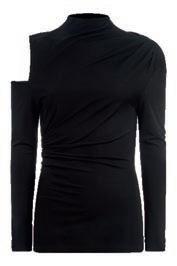
When Hillary Clinton wore a Donna Karan turtleneck dress with shoulder cut-outs to her first state dinner as First Lady in 1993, it caused an uproar. The press wasn’t used to politicians’ wives showing off their bodies, but Clinton wasn’t bothered, issuing this quote through her press secretary: “I love the way it feels. And when you feel good, you look good.” It’s a sentiment that still rings true.
MOCK NECK WITH COLD SHOULDER TOP ($130, DONNAKARAN.COM)

Karan’s OG bodysuit was originally inspired by her own yoga practice and is something she redesigned many times over the years. She blended stretchy materials with everything from luxe draping (pictured) to shirting styles that could be cleverly layered underneath blazers, trousers and the like.
1990S BODYSUIT ($253, NINAGABBANAVINTAGE.COM)

Sexy black dresses are not the exclusive domain of Karan, but her signatures—seductive cut-outs, a plunging neckline, bias cut and draping—make hers not only unique but also extremely flattering.
FALL 2010 GOWN ($4,018, 1STDIBS.COM)

A good suit is important to any career woman, but what is inherent in Karan’s is how it straddles the masculine and the feminine, with streamlined tailoring to showcase a woman’s natural curves. Padded shoulders and nipped-in waists are key signifiers and were famously present in her 1992 campaign that featured a model in a pinstriped doublebreasted blazer posing as the first woman American president.
BELTED BLAZER ($250, THEBAY.COM)

A new era of fashion is here—whether you like it or not.
By CAIA HAGEL
THE FALL/WINTER 2024/2025 FASHION SEASON had a normcore hum to it. There were a few thrilling shows: Dilara Findikoglu’s Femme Vortex collection memorably layered corsetry and athletic pieces; GCDS did horror with a hauntingly beautiful collection; Vetements introduced an extreme teddy-bear cape; Miu Miu served up nurse dresses in Klein Blue; and Andreas Kronthaler’s Vivienne Westwood takeover featured unforgettable pagan platform boots. But the no-longer-novel motifs of recent seasons—sheer dresses, big shoulders, block colours and office siren suits—were visible almost everywhere.
Does it seem like fashion is flatlining because everything after Margiela’s spring 2024 haute couture collection—with which the haunting beauty and emotional power of dressing for mood was reborn with a drama that made audience members cry—feels bland by comparison? Did our mainstream love of beige and quiet luxury drain fashion of its fabulousness? Or did prêt-à-porter mirror culture by slipping effortlessly into the opposite of couture exclusivity with a collective sameness that mimics the results of an algorithm?
Whichever way we look at it, the takeaway this season is that technology’s accelerationism has landed in our wardrobes. For better or for worse, algorithmic-driven normcore fashion is here in the form of gender-fluid, unpretentious, average-looking clothing that blends together the most popular trends in a way that signals belonging by not standing out.
Kyle Chayka, author of Filterworld: How Algorithms Flattened Culture, has been tracking the advance of algorithmic dominion over fashion and culture for a while. He first noticed “AirSpace”—a term he coined to classify the aesthetic indistinguishability of cafés, malls, airports and other public spaces across the planet—in 2016. According to Chayka, it reflects a globalism that has more to do with the universal use of apps than any geographical or cultural reality.
Today, AirSpace has given way to “Filterworld,” a new reality in which our cultural tastes are dictated by algorithms. In fashion, this means that machines are curating our clothing choices through algorithmic amplification of mainstream trends. Chayka notes that algorithms feed on fast fashion, which makes the changing room a perfect AirSpace. “Production schedules have met the trend cycles of social media,” he says. “And as the most ephemeral of the arts, fashion design can change with the speed of memes. Shipping times are [virtually] instantaneous now, so we can consume clothing at the same velocity and [with the same] fervour as [we do] content, which on TikTok changes every week.” If fashion choices are tied to identity and identity is being shaped by whatever widely held opinion an algorithm serves up, could individuality be giving way to conformity with the latest TikTok craze?
In the past, fashion editors articulated trends and dictated which styles would make us fashionable, but it’s a role that is increasingly being taken over by computer analytics. To some,
this outsourcing of style leadership to the masses through the harvesting and recycling of our data might seem more democratic. We judge things by how popular they are—by how many likes and shares they get. User behaviour directs the algorithms that produce the content we all consume and are influenced by. But do these data waves reflect how we personally feel and how we actually want to express ourselves?
“One of the most powerful things we can do on the internet is take the shape of whatever we need to be to distribute ourselves and accrue attention,” says Chayka. “It’s powerful to not have a fixed identity. But what meaning do we find after that?”
In a rare interview—and her first since launching her own greatly anticipated label—earlier this year, Phoebe Philo told The New York Times that her approach to dropping collections would defy strict show seasons. She would release “edits” on her own schedule, making each one part of an endless collection. “I don’t know why there has to be such a beginning and an end in our industry,” she said. “I don’t know why it can’t just be continuous.” At a time when we are navigating the transition from well-thought-out fashion curation to algorithm-prescribed style, her statement feels prophetic. By not adhering to the trend seasons and being both everlasting and nondescript, are her well-crafted classics echoing the algo? Has Philo rejoined the industry on the side of mass data with the promise of algorithmic chic?
“Taste is a fundamental part of the self,” says Chayka. “Developing and indulging taste means constructing a firmer sense of self.” This organic process gets diluted online, where the net average dictates a collective attitude that reduces all original thought and feeling to a digital normcore wave. The word “normcore” first appeared as a glimpse of the future when former trend-forecasting group K-Hole used it in its 2013 “Youth Mode” report to reference a fashion attitude that stands for “finding liberation in being nothing special.” Normcore is back in a deeper way now, with technology upgrades grooming us for the next phase of erased difference. There is something humbling in this—in how it transforms fashion from a marker of VIP status to a symbol of egalitarian togetherness.
“We don’t exist in an offline world anymore—there is nothing that isn’t touched by the internet,” says Chayka. “I’m very tempted to just embrace the flatness of algorithm intelligence. I also keep it in check by logging off and wearing a couture piece with totally functional horse-farm gear, [like] black leather boots from Ariat.” It’s a feeling of conflict many of us surely share, which is why the assured, iconic looks of Zendaya’s Dune: Part 2 and Challengers press tours may be what we remember most in recent fashion. If algorithmic chic is an inevitable by-product of our extremely online era, maybe the way to unite our URL and IRL selves is to do what Chayka does and never leave home in our normcore uniforms without a splash of uniqueness.

The latest TIFFANY & CO. Blue Book collection, Tiffany Céleste, takes inspiration from the skies above.
By JOANNA FOX
WAS IN
HILLS MANSION this past spring that the latest Tiffany & Co. Blue Book collection, Tiffany Céleste, was first presented to the public in all its sparkling brilliance. It’s one thing to see images of high jewellery online and in the pages of magazines, but to experience these pieces up close and be able to hold and touch them—and sometimes even try them on—is completely different and only makes one appreciate the beauty and craftsmanship all the more. This particular collection was inspired by the brand’s late legendary designer Jean Schlumberger and his fascination with the celestial universe and wonderfully designed by Nathalie Verdeille, Tiffany’s chief artistic officer, and her talented team.
Verdeille took a deep dive into the brand’s rich archives to adapt Schlumberger’s jewelled interpretations of the sun, moon, stars, distant galaxies and fantasy worlds, uniting the familiar with the whimsical while paying homage to his surreal and fantastical silhouettes and the Tiffany codes. “With Out of the Blue, we went into the depths of the sea and looked at aquatic life as seen through the eyes of Schlumberger,” she says of the first Blue Book collection she designed for the brand. “Now, we’ve gone in the opposite direction: into the sky with the stars. And [we’ve explored] not only what’s lunar or solar but also [things] on a mythological level, a spiritual level. It was really a voyage into space and all its dimensions.”
The collection launches in three phases, starting with this one, which will be followed by the next two in the fall. The first phase is divided into six distinct chapters: Wings, Ray of Light, Iconic Star, Constellation, Apollo and Arrow. The Wings theme symbolizes flight and fantasy; Ray of Light takes inspiration from archival Jean Schlumberger by Tiffany brooches that emulate the sun’s rays; Iconic Star is influenced by sketches in which Schlumberger explored the star silhouette as a symbol of the universe; and the Constellation chapter encompasses motifs that are defined by elements reminiscent of star patterns. The Apollo chapter reimagines the Jean Schlumberger by Tiffany Apollo brooch while showcasing quintessential Tiffany & Co. yellow and white diamonds, and Arrow is inspired by elements of the Jean Schlumberger by Tiffany Trophée de Vaillance brooch, which was crafted in 1941.
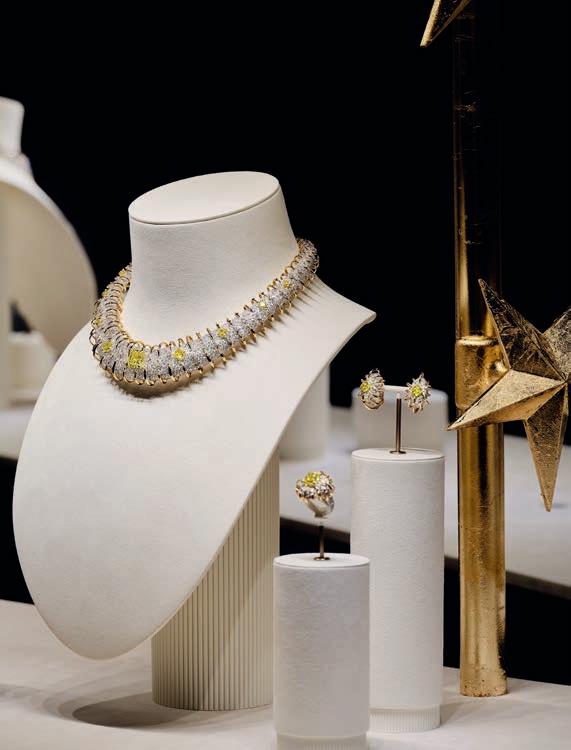
“Schlumberger was inspired most notably by the surrealist movement when he created these different themes,” explains Verdeille as she goes over the highlights of the collection. She points out specific features of the pieces, such as the use of yellow gold (a signature of Schlumberger’s), variations in symmetry that give them unexpected elements of interest and imbalance and their overall lightness, fluidity and movement. “Everything was considered with this collection—all the details, the gemstones, the materials used,” she says. “It’s incredibly well thought out.”
One challenge faced in creating this collection, says Verdeille, was the use of platinum; it’s much more dense in terms of weight compared to yellow gold, which made constructing pieces using both metals very complex. “It’s all such intricate work, but on the level of just working with these metals, [what we’ve done] is really innovative,” says Verdeille, who also included some modifiable pieces, such as a necklace that seamlessly turns into a tiara.
Verdeille also carefully considers how the pieces will look when worn: A necklace needs to sit just so around the neck and on the collarbones, earrings should accentuate the ear and rings are designed to float on the hand, always with a feeling of lightness and movement. “There’s an aspect of magic, [and it’s] married with technique,” she says with a smile. “I dream about jewellery.”
If the first phase of this collection is any indication of what’s to come, we can expect a fantastical jewellery reverie brought to life.
Over the past year, these EIGHT INCREDIBLE CANADIAN WOMEN have broken the glass ceiling, paving the way for those behind them.
By SADAF AHSAN
Quadruple threat Vivek Shraya is all the things: musician, writer, actor and artist. Last year, she debuted her Canadian Screen Award-winning CBC web series, How to Fail as a Popstar, which is based on her own adventures growing up in Canada and trying to make it big and become the world’s first trans, brown Madonna. Shraya is also the founder of the award-winning imprint VS. Books, which offers publishing opportunities to emerging BIPOC writers. Meanwhile, her last book, 2022’s People Change, was included on CBC Books’ list of 26 Canadian Books to Read for Pride Month.
“At the core, every medium of art allows me to not only know and love myself better but also make connections with others,” says Shraya. “I find being a human to be a lonely experience, and making art and sharing it helps lessen the loneliness.” Though she is clearly a prolific and passionate artist, it’s tough for Shraya to discuss the impact her work has had and is having on young brown queer people. She does say simply, “My hope is that my work represents possibility.” There’s no doubt.
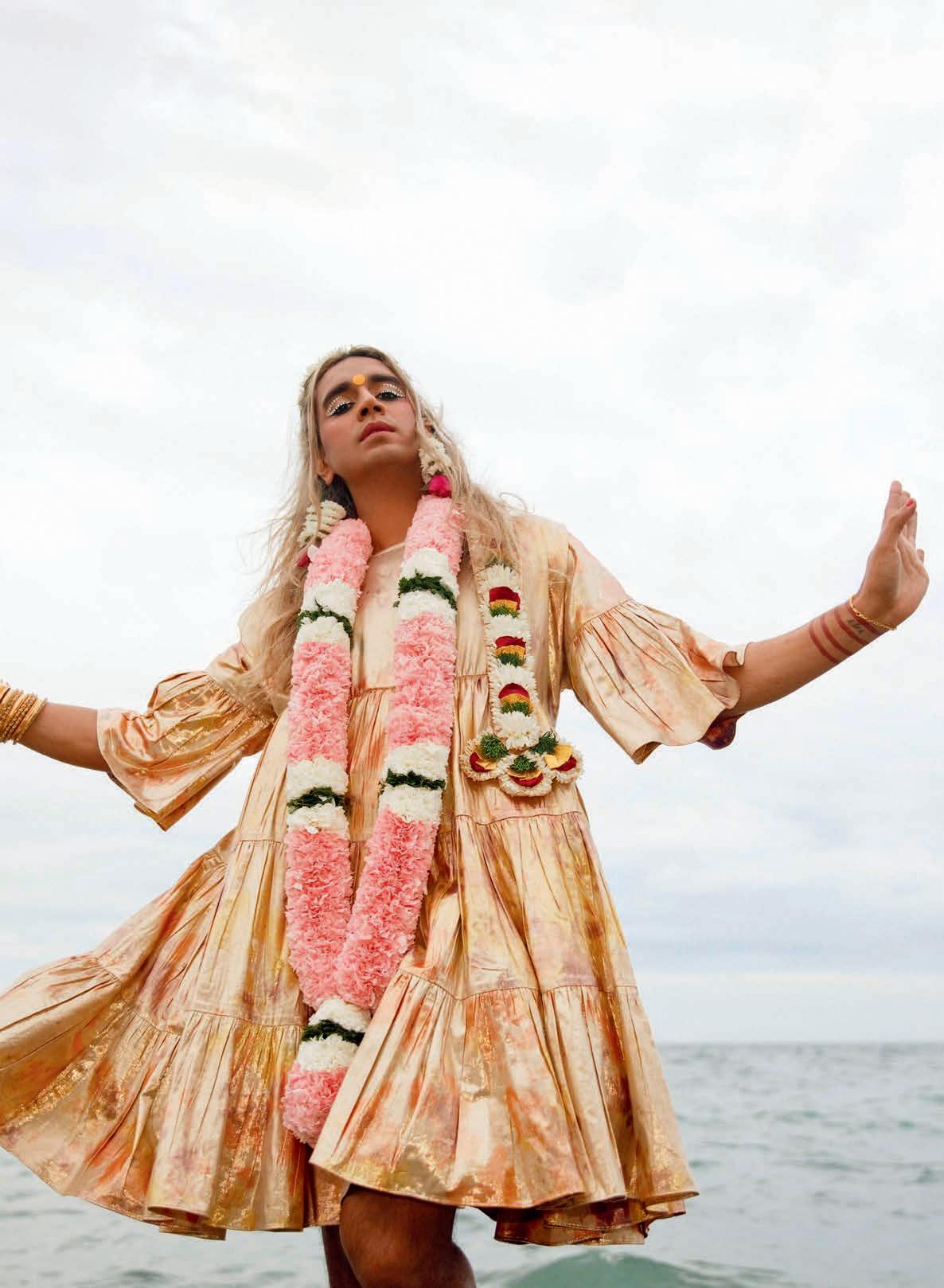

Few log as many overtime hours as Fae Johnstone, executive director of Wisdom2Action, an LGBTQIA2S+ consulting firm that facilitates the improvement of LGBTQIA2S+ inclusion for non-profits, government agencies and other organizations. The Ottawa native, who is also the executive director of the Society of Queer Momentum, has worked long and hard advocating for more rights and social support for the queer community, particularly amid resurgent homophobia, transphobia and misogyny. She has helped create spaces for joy and provided communities with the tools to take action themselves. “A more free, equal and socially just Canada is not only possible but also, in fact, a moral imperative,” says Johnstone. “None of us is free until all of us are free. No one should be made to live in fear, confronted with material inequality or denied their freedom simply because of who they are.”
Johnstone’s passion rarely wavers, even when she faces hate and slander (online and offline). “I refuse to cower and be silent, and I hope my visibility and outspokenness will give others the space to speak up and take action too,” she says. “I hope that my role in the public eye can be an example for other trans and queer people—that it can show we can change the world and rise to new heights in defiance of the boxes and limitations forced upon us. We can counter the divide-and-conquer strategy of our opposition by celebrating the world we are building together, being our true selves and organizing for a better future.”
No one walks the talk more than Ontario member of provincial parliament Sarah Jama. Since the conflict in Gaza began in October 2023, she has repeatedly called for a ceasefire and spoken in defence of the Palestinian people. After a kaffiyeh ban was introduced in the Ontario legislature in April, Jama continued to wear hers anyway—again and again, even after being removed. She was ultimately let go from the NDP caucus and has been the victim of hate mail and death threats. Still, now as an independent MPP, Jama remains in solidarity with Palestinians. “No matter where you are situated, you can take action against injustices,” she says. “Whether it’s by talking to friends or showing up at a community level to raise awareness—protesting the ongoing genocide in Gaza, knocking on doors to discuss housing rights, volunteering at a food bank or participating in a boycott—anyone can have a positive impact on important issues around the globe.”
Whether she’s taking on geopolitical issues or fighting for the rights of those living with disabilities, Jama has proven time and again that she is a voice for the marginalized—and she’s proud of it. The secret behind her resilience? “While fighting for change, we must realize that we are working within systems built [to be] resistant to these attempts,” she explains. “As a collective, all of our little victories will add up to create a more equitable and just world. Far too many people have no choice but to wake up every day and fight for survival. As long as anyone continues to fight for change, there will always be hope for a better world.”

A Pulitzer Prize- and Peabody Award-winning investigative journalist, Connie Walker has made it her mission to expose the violence faced by so many Indigenous communities and reveal the immense impact of intergenerational trauma stemming from Indian Residential Schools. Her work, which includes several podcasts investigating the stories of missing and murdered Indigenous people for CBC and now Gimlet Media, has given a platform to the voiceless and proven how essential new media is for marginalized journalists. “My biggest motivation is my family and my community,” says Walker, who’s from the Okanese First Nation in Saskatchewan. “I grew up on my reserve at a time when the media portrayal of Indigenous women and girls was full of stereotypes and misconceptions that were so harmful. At the time, I wondered how many Indigenous people worked in mainstream media and were allowed to tell [their] own stories. It motivated me to become a journalist; I wanted to help change harmful narratives about Indigenous people generally but also help provide insight into issues in my own community. I wanted to see myself and people like me in the media.”
There is tremendous heart in Walker’s work as well as grit and strength. It all fuels her pursuit of a better, brighter and more just future for Indigenous people. “All of the recognition of our work feels like proof that Indigenous people should be supported [in telling] our own stories,” says Walker. “It sounds like a no-brainer, but the truth is it’s been incredibly difficult to get to this point. For decades, survivors have fought to tell the truth about what they endured in residential schools and Indigenous families have struggled to get attention and support to help deal with the intergenerational trauma that continues to affect us all. I hope this recognition of my work helps create more space for other Indigenous journalists, storytellers and creators to tell [their] own stories in [their] own ways.”
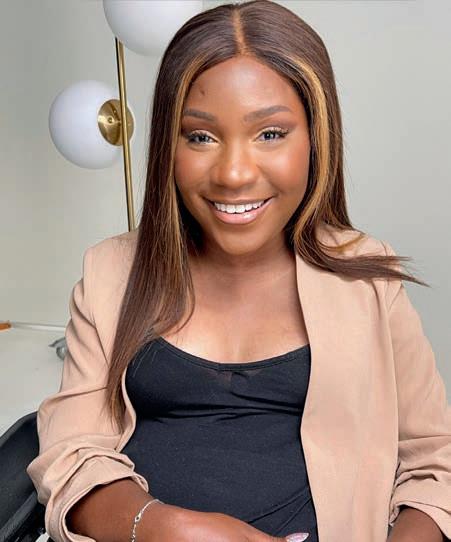
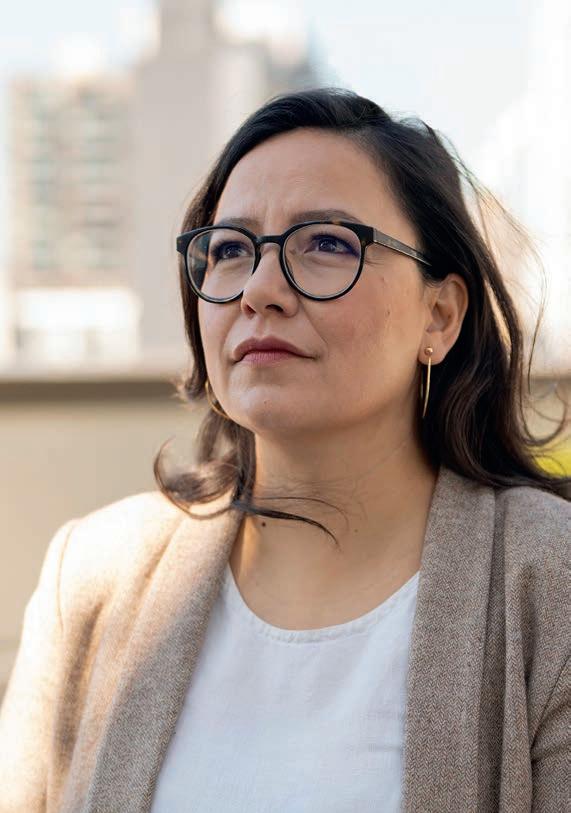
Using her platform to her advantage, Toronto’s Taylor Lindsay-Noel has been logging her accessibility experiences as a quadriplegic around the city on social media—particularly TikTok—in a bid for a more inclusive world. “What motivates me is the hope that I’ll bring awareness to an issue that truly affects everybody,” says Lindsay-Noel. “Advocating for accessibility is advocating for our future. It’s definitely not an easy job, but it’s necessary, and I’m happy to do it.”
A woman of many talents, Lindsay-Noel is a former Olympic hopeful who was paralyzed in a gymnastics accident at the age of 14. Shifting gears, she went on to study radio and television arts, creating a podcast called Tea Time With Tay while at university and later founding her own tea company. That company, Cup of Té, even went on to become one of Oprah’s Favorite Things. Ever the advocate, Lindsay-Noel donates a portion of each sale to mental-health causes. “My ultimate goal is to live in a world with fully inclusive spaces—a world where everybody, no matter their disability, can access every space they encounter as easily as an able-bodied person,” she says.

Set and shot in Canada and Pakistan, 2023 film The Queen of My Dreams is a queer coming-of-age love story told from the brown perspective, and it was written and directed by Fawzia Mirza, who grew up in Sydney, N.S. It felt like a first for many reasons: its portrayal of brown queerness and growing up Muslim and the fact that it’s such a progressive Pakistani film. “As a queer Muslim South Asian artist, [I know that] the personal and the cultural are always intertwined,” says Mirza. “I can’t tell you a story of who I am without telling you a story of where I come from. When we are given the opportunity and the space [to share] our own narratives—to share our truths without them being filtered through the lens of the dominant culture—that is authenticity.”
The Queen of My Dreams is Mirza’s feature debut, but she’s working away on a number of projects for both film and television. She knows the industry is watching as more South Asian talents begin to carve out their own space, but she’s keen to right a few wrongs. “The industry glorifies our trauma,” says Mirza. “But we know that violence; we don’t need to put it onscreen. I want audiences to see not just our struggles but stories that centre our hope, love, beauty, resilience and liberation. That, to me, is revolutionary representation. I began writing out of necessity, because I didn’t see myself represented. Creating art helped save my life and reminded me that I’m not alone, and sharing that art has shown me the impact I can have. As our community rises, we will change the harmful narratives that others have perpetuated about us.”
A professor of forest ecology at the University of British Columbia and the author of 2021’s Finding the Mother Tree: Discovering the Wisdom of the Forest, Suzanne Simard should be a household name. She was recently chosen as one of Time magazine’s 100 Most Influential People for her work studying plant communication and intelligence. “Receiving this commendation is a profound honour, validating the efforts of my team to stand up for the forests and all who depend on them,” says Simard, whose work has even influenced the likes of James Cameron. (Hello, Avatar.) “This recognition fuels my motivation to continue striving for change, knowing our work makes a difference and inspires others.”
Simard, who grew up in B.C.’s Monashee Mountains, has published over 200 peer-reviewed articles and presented at conferences around the world, sharing her research on the relationships between trees and how they can teach us to heal forests, particularly amid climate change. In other words, her work couldn’t be more urgent or profound. “If they aren’t already, I hope people start paying attention to conserving biodiversity, combatting climate change and ensuring the health of our planet,” says Simard. “Forests are vital for our survival, and their well-being directly impacts our own.”
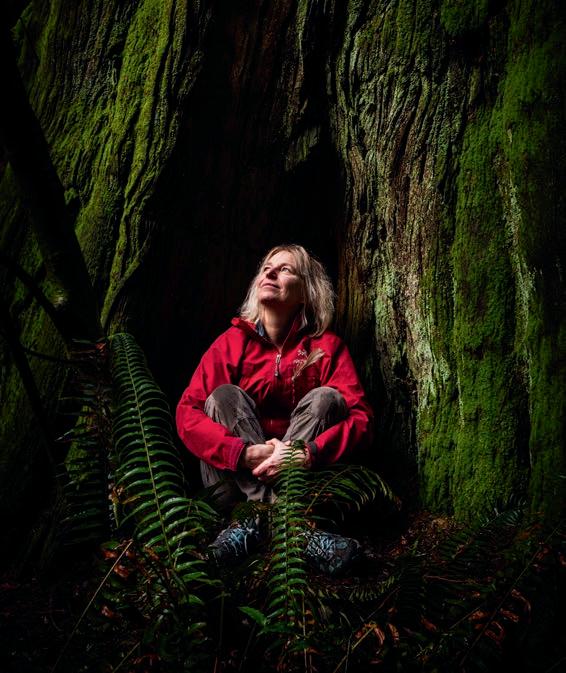
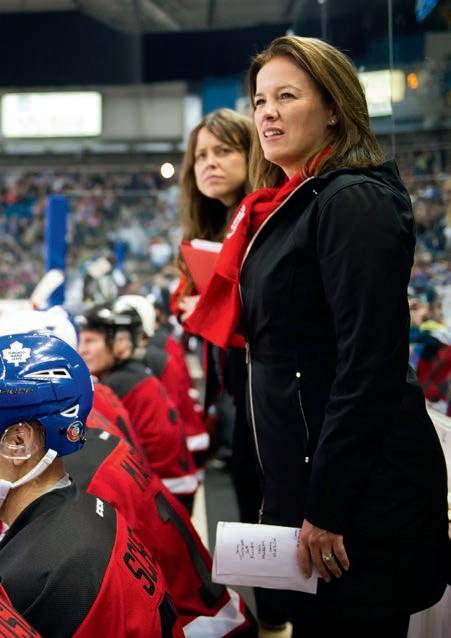
After just its first season, the Professional Women’s Hockey League (PWHL) has already made quite a splash, earning record-breaking television ratings and attendance records. One of the many women behind the league is former hockey player and broadcaster Cassie Campbell-Pascall, who serves as an adviser to the PWHL’s board. “My goal with the PWHL is to work as one team and play whatever role is needed to bring women’s hockey to the next level,” she says. “This first season has exceeded my expectations, but I want to continue to help in any way needed to make the league even better in year two.”
Born in Richmond Hill, Ont., Campbell-Pascall was the captain of the Canadian women’s ice-hockey team during the early 2000s, leading them to gold at the 2002 Winter Olympics and again at the 2006 games. After retiring from hockey that year, the legendary athlete joined Hockey Night in Canada (HNIC ) as a reporter, becoming the first woman to do colour commentary on an HNIC broadcast. Later, she joined Sportsnet and ESPN, also inspiring more women to enter sports journalism. “One of the things that makes me most proud of my broadcasting career is that now so many former women’s hockey players are entering the broadcast world, and whether they cover the NHL or the PWHL, they do an amazing job,” she says. “I’m proud that my broadcasting career has lasted almost two decades and even prouder that more and more women are getting into covering hockey.”

Women are blazing their way into the male-dominated world of firefighting one burn at a time.
By CAITLIN STALL-PAQUET
ON THE MORNING OF JUNE 25, 2023, Montreal woke up to greyish-orange skies— reminiscent of those in Blade Runner—and the worst air quality in the world. Forest fires in Canada had begun in March and had been increasing in intensity in Northern Quebec since the beginning of June (an unnerving start to what ended up being the hottest summer on record for the province), and winds had pushed the smoke to Montreal, New York and even as far as Portugal. As climate change worsens extreme events like these wildfires, the need for more people to learn to fight flames has never been greater. We should have all hands on deck to integrate new (and sometimes very old) methods of preventing and fighting blazes, and we also need fresh faces—women, Indigenous people and racialized folks—joining the white, male-dominated force. Current tactics focus mainly on fire suppression, and they need to be shaken up with different perspectives and approaches.
“We’re at a point where our past management [methods] are interacting with climate change,” says Lenya QuinnDavidson, a fire adviser and the director of the University of California’s Fire Network. “There’s been population growth and so many problems that are beyond what the current system can handle. I think it’s very clear that we need new ideas and innovation.” She is also the lead for co-operative burning for the women’s branch of the Prescribed Fire Training Exchange (TREX), an organization that was created in California in 2016 and is focused on providing hands-on live-fire training and fire-ecology learning to people of all genders. The issue is top of mind for the state, which has seen a 320 percent increase in burned area since 1996. Women still make up less than 5 percent of firefighting forces in California, a field rife with sexism, harassment and prejudice.
WTREX works closely with locals who are knowledgeable about the land, including Indigenous people who practised prescribed burning—intentionally setting a controlled fire to maintain an area of land—long before colonization. This tradition keeps deadwood and brush from building up and becoming fuel for future wildfires. The majority of current firefighting practices, which focus on suppression of active fires rather than supporting prescribed burning, are born out of a colonial approach and disregard the important role that planned burns play in keeping the spread of wildfires in check. At WTREX events, participants with varying experience levels learn the ropes of prescribed burning. The more advanced among them take on jobs like being the “burn boss,” who tells everyone what to do and keeps them safe. On the flip side, newcomers learn skills like how to use a driptorch—a fuel-operated tool used to light fires during a prescribed burn—or build a fire line, which is the place where crews and equipment actively fight fire. Contrary to what its name suggests (since the “W” stands for “women”), WTREX is open to everyone, including men. “I think being immersed in hearing from women and under-represented people is pretty intense for folks who walk through the world with so much privilege,” says Quinn-Davidson.
A 2023 report by the Canadian Association of Fire Chiefs shows that of Canada’s 125,628 firefighter positions (both paid and volunteer), 11 percent are occupied by women, while 12 percent are vacant. With the right support, these empty roles could be filled with a greater diversity of people who can rethink how we approach fires that are as varied as the landscapes they burn. One of the people adamant about changing the status quo is Michelle Vandevord, of the Muskoday First Nation in Saskatchewan, who is the executive director for Saskatchewan First Nation Emergency Management and the director of the National Indigenous Fire Safety Council (NIFSC).
Vandevord started fighting fire on her reserve; its volunteer fire department came about to address the area’s specific
needs, which were born of isolation and low funding, and it reaches out to community schools to talk about safety. Every spring, the organization performs cultural burning to protect the reserve’s land; it’s a carefully considered process that’s planned long before anybody lights a match. Vandevord, who’s the first woman to direct the NIFSC, knows about the need for diversity in firefighting first-hand, having faced plenty of racism and sexism. “You always feel you have to do extra [and] you have to perform better, and that has never changed in 25 years,” she says.
Public bias against women in this field creates environments in which there is little room for mistakes in the learning process. In May of 2023, WTREX hosted a prescribed burning event in Banff, Alta., in partnership with Parks Canada. Winds shifted suddenly, causing the fire to jump across a nearby highway and spread, burning an additional 21 hectares. “Of course, it was a big deal and a learning experience,” says Quinn-Davidson, who was not on-site for the event. “Participants who were there got to see that transition from prescribed fire to ‘Okay, now we’re managing this as an incident.’” Though the fire was under control within the day, conservative news outlets, like Alberta’s The Counter Signal, snatched up the opportunity to print stories with a heavy subtext of “this is what happens when you let women control fire,” even though such incidents aren’t uncommon.
Outreach and education are key in this field, and for Vandevord, that starts with helping girls and young women see value in what they can bring to the job beyond body strength. “I was named medic right away, because a girl should be doing the caring medical stuff, right?” Vandevord says about her start in firefighting. “But I loved it. I got to go right into the car after vehicle accidents. I’d be talking to the person and calming them.” Last June, she taught firefighting to 35 Indigenous young women and non-binary people during an event in Prince Albert, Sask., via the fire-services-focused Camp Molly. They learned the ins and outs of the job, from vehicle extrication to communication to how to use hoses.
“The door at the fire hall should be open for everybody,” says Vandevord. “It’s been hard enough for females to break through that glass ceiling. It’s been done, and everybody should be welcome now.”
For Quinn-Davidson, the proof is in the pudding (or the putting out). She’s hosted dozens of events during which women run chainsaws, fell trees and lead operations. Something that has often kept Vandevord’s head up amid scrutiny and prejudice is the fact that she’s an example for her three daughters. “I’ll be damned if I ever let them feel like they can’t do whatever they want in life,” she says. “They have to see me picking up a hose and putting out a fire. For 25 years, they’ve seen me in my community trying to [create change] so that every girl across this country knows they have a place in the fire service.”

How fashion empowers three Canadian women living with PARKINSON’S to experience life to the fullest.
MORE THAN 100,000 PEOPLE IN CANADA are living with Parkinson’s, and about 30 more are diagnosed with it every day, according to Parkinson Canada. Yet not many people really know what it’s like to experience the incurable lifelong condition, which is a neurodegenerative disease that affects movement and can cause involuntary tremors, shakes and trouble with balance. You might assume that such a life-altering diagnosis would be earth-shattering, leading to feelings of isolation and resentment and creating difficulty navigating the world. And while, for some, that may be true, every journey with Parkinson’s is different. In fact, for some people living with the condition, the challenges they face can inspire them to live their life with renewed boldness, confidence, resilience, strength and purpose.
Of course, fashion plays a large role in this. Anyone who thinks about their sense of style knows the power that clothing can hold—how the outfit you put on in the morning can shape how you feel about yourself and how others look at you. That’s why we caught up with three Canadian women—who are often under-represented in conversations about the condition—living with Parkinson’s to talk about their approach to fashion and finding confidence. As they tell it, fashion empowers them to live boldly without hiding, to counter stigma and misconceptions about Parkinson’s and to push forward to pursue the lives they want without holding back.

When Toronto’s Sharon Chakkalackal was diagnosed with young-onset Parkinson’s at 38, a lot changed in her life— though not in the way you might assume. “Over time, I have developed a friendlier relationship with my body/mind,” the now 41-year-old says. “I used to feel that my body was a foreign entity—a distant cousin I gradually got to know. Now, I feel much more connected to myself by prioritizing movement, a slower-paced lifestyle, rest/sleep and community.” Since her diagnosis, Chakkalackal, who previously worked as a senior policy adviser for the provincial government, has a renewed perspective on life, understanding that the desire to live a full, happy life can only come from within herself.
To do just that, Chakkalackal has sought out and helped create nourishing, lively communities centred around dance, volunteering, art and the people in her life, which is why she has a more utilitarian—yet still joyful—approach to fashion. “My day-to-day [clothing] tends to be neutral and functional—usually comfortable stuff that doesn’t impede my movement,” she says. “I tend to be inspired by nature, and my fashion aligns with that. When I’m going out on the weekend or seeing friends, I try to pick outfits that highlight my body.” She loves pops of colour—they make her stand out in the sea of neutral hues often found on the streets of Toronto—and opts for pieces that make living with Parkinson’s more manageable. Chunky shoes, Blundstones and sneakers look good and help with her balance, while looser, flowy clothes without many zippers or buttons are easier to put on without her getting frustrated or struggling with her fine motor skills. She also loves getting more dressed up for occasions and finds that statement pieces, like a leather jacket or unique coat, feel really special to wear. “As I’ve gotten older, [I’ve found] that when I’m the most comfortable in my skin is when I feel the most comfortable in my own skin—my sense of beauty comes through in the way I move and talk,” she says. “If you know yourself, you feel beautiful. This body of mine is a gift, and the fact that I get to take care of it every day, in big or small ways, is the best way to honour myself.”
“I wish every day that I didn’t have Parkinson’s, but it’s no longer the enemy. I’m at peace with it,” says 55-year-old Sarah Macrae Blakeley, who was diagnosed in 2019. It’s been a long, challenging road for the Toronto-based occupational therapist to reach that mindset—from denial to navigating the pandemic, deciding when to tell her children about her diagnosis, facing unrelated health issues and reflecting on her own ideas about Parkinson’s. “I feel like any stigma that I’ve experienced has been self-imposed,” she says. “My perception of what someone with Parkinson’s looked like was a hunched-over elderly man who shuffled when he walked. But it’s not that. I’ve tried hard since my diagnosis to portray a different image of someone with Parkinson’s and to disrupt the common misconception.”
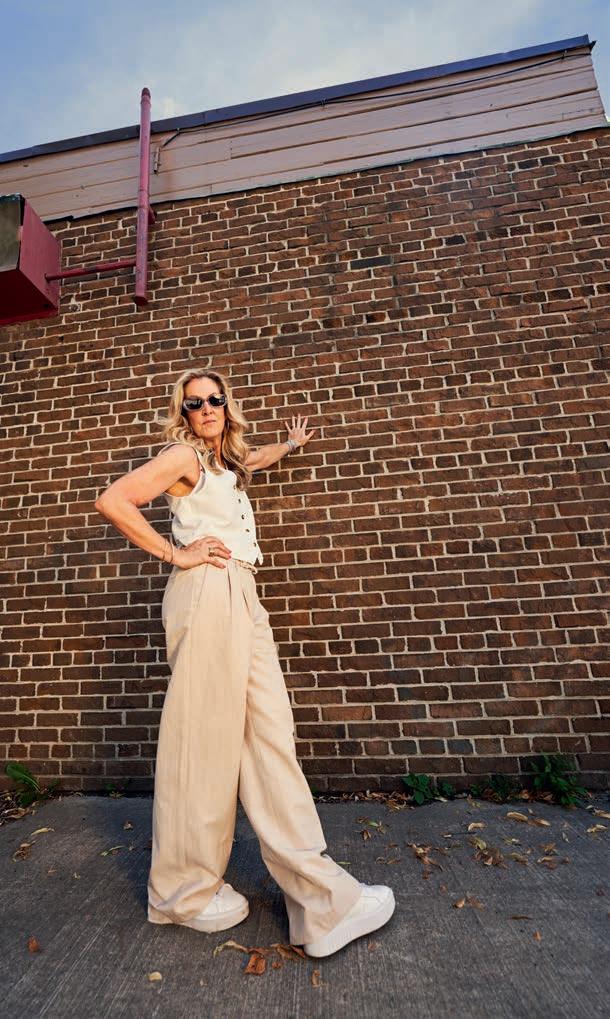
For Macrae Blakeley, that means practising what her husband calls “quiet resistance”—trying to embrace what only she can control. She continues to stay active (she runs, skis, cycles and works full-time, like she always has), focuses on the present and has fun with fashion. Macrae Blakeley describes her sense of style as “sporty” and “funky” (her kids call it “funkified”), and she’s drawn to quality staple pieces—think denim jackets and every silhouette of jeans imaginable—that put her personality at the forefront. “I’m pretty active, and I like to work out, so I tend to dress more casually and comfortably and try to ‘zhuzh’ up my athletic attire,” she says. “I’ve always looked after myself, but since being diagnosed with Parkinson’s, I’ve definitely taken it up a notch. I still want to look nice, young and fit. They say ‘Look good, feel good,’ and it’s true. Feeling good about what I’m wearing and projecting confidence is more important to me now.” It’s a style ethos that can apply to anyone, whether they’re living with Parkinson’s or not. “If you walk out the door feeling dishevelled or frumpy, that’s what you will project to the world,” Macrae Blakeley says. “You don’t need to have the body of a runway model or wear designer clothing to project confidence. I believe that putting a little extra effort into your ‘exterior’ can have a major impact on your ‘interior.’”

Torontonian Martha Johnson carries herself like she belongs onstage, which she does. As a founding member, songwriter and lead singer for the effortlessly cool Canadian art-pop band Martha and the Muffins—known for its international ’80s hit “Echo Beach”—she easily commands attention with her edgy voice, red curls and vintage aesthetic. There’s this aura about Johnson that nothing can stop her from going after what she wants, which has always been true, especially after she was diagnosed with Parkinson’s in 2000. “I didn’t want things to change—I had to get used to the idea of having Parkinson’s while the effort of concealing my growing symptoms took too much of my energy,” says a now 73-year-old Johnson, noting that it took her three years before she was ready to share her diagnosis with others. By 2013, Johnson sadly realized she could no longer perform live—her “concentration and singing were not up to [her] standards, which increased [her] anxiety”—but she hasn’t slowed down in other ways. Over the past 20-plus years, she has formed a strong and supportive group within the Parkinson’s community, has taken up boxing and continues to write songs, including a track dedicated to Parkinson’s awareness called “Slow Emotion” with local guitarist Fabio Dwyer.
And through it all, she maintains the confident rock-star vibes she’s always had—in her view, confidence comes from within, and she uses fashion as an accessory for that attitude. When she gets dressed, she wants to define herself as an artist, not a victim of Parkinson’s. “My mother instilled in me a sense of always looking smart and together—Parkinson’s has not changed that,” Johnson says. “My personal style has usually revolved around a black-and-white aesthetic, often leaning toward vintage pieces—colour is an accent. I always wear a vintage silver pendant that my partner, Mark Gane, gave me, which I use to hold my medications. With balance and gait issues, I have to consider safety first when it comes to footwear—I’ve never gravitated toward high heels anyway, so there was no sacrifice there.” One of her go-to pieces is a “pair of boots that rock” because they provide a sense of security and always remind her of an evergreen piece of wisdom from her boxing coach: “Stand proud, look up, the ground will always be there.”
TO LEARN MORE, HEAD TO FINDYOURSWAGGER.CA.

Samanta Krishnapillai built an activist media platform from scratch with the On Canada Project.
By EMILY TAMFO
IF THERE’S ONE THING TO BE LEARNED from Succession, it’s that running a news-media company is no small feat. Starting one is a David-and-Goliath battle for anyone who wants to take on the challenge; just thinking about the giants of today’s media industry (and the old boys’ clubs that run it) is enough to dissuade most from even trying. But in the spring of 2020, none of that mattered to then graduate student Samanta Krishnapillai. It was the beginning and most uncertain point of the COVID-19 pandemic, and every headline about our communal health and related policies seemed more confusing than the last. So, on June 1, 2020, armed with a bachelor’s degree in health sciences, a knack for Instagram and 100 volunteers, the Torontonian launched the On Canada Project (OCP), an independent media platform “for anyone who wants to know better and do better but doesn’t know how.”
A quick glance at the OCP’s Instagram feed—where you can find all its content—will show you that it’s not your typical news outlet. For starters, all OCP content is opinion-based and uses topics covered on social media and other news sites
to educate and initiate community dialogue about the issues most relevant to the site’s audience. For example, this past March, one of the OCP’s popular posts read, “Joe Biden, you have betrayed your Irish ancestors, just like you’ve betrayed humanity.” It was part of a content series exploring the history of Irish support of Palestine. “We’re not a journalistic entity, and I’m not trying to be a journalist,” says Krishnapillai, who edits and curates the Instagram feed in collaboration with her team of volunteers and contract staff. “I’m trying to be your informed bestie in your group chat of life, unpacking issues and adding context around the news. I think both are incredibly important.”
The OCP’s role as “informed bestie” helps fill the news-cycle gap that was created by Bill C-18, which inadvertently resulted in nearly all Canadian news media being restricted from posting on Facebook and Instagram. (The 2023 bill, also known as the Online News Act, requires large tech corporations, like Google and Facebook/IG parent company Meta, to compensate Canadian news outlets if they want to share Canadian
news on their platforms.) Because of its unique approach, the OCP was not impacted by the restrictions, and the educational media platform has since grown to nearly 200,000 followers and counting. It has covered topics like the Israeli-Palestinian conflict, Indigenous activism and period privilege with an unabashed voice for justice and all in keeping with its mission to be “kind (not polite)” and “unapologetic when it comes to human rights.”
Krishnapillai took an unconventional path to founding the grassroots media outlet. She was completing her master’s degree in health-information sciences at the University of Western Ontario when Canadians were first instructed to shelter in place, and she couldn’t help but think about the challenges that families like hers would face in the coming months. “When I was younger, we shared a rat-infested Toronto apartment,” she says. “My parents, my sister and I were in one room, in the next room were my grandparents and in the next room were my aunt and her family. My family [members are] all refugees from Sri Lanka. I [thought], ‘Man, if someone had told us to isolate in our bedrooms, what would we have done?’ I knew that story existed somewhere in the city, so I [felt] like this [was] a small piece of the puzzle that I [could] unpack.”
She started by reaching out to media contacts in her network to offer her voice and her expertise in navigating healthcare systems, but when she realized that no outlet would give her the freedom to write authentically from her perspective, Krishnapillai decided to do it alone. As the OCP’s audience grew, so did the range of topics—some of which landed well and some of which did not. It took time, but Krishnapillai and her team workshopped the tone of the platform to be able to effectively cover more social issues, like anti-Black racism and police brutality, whether they intersected with health care or not. The times when her platform didn’t get it quite right—posts on “the economy of slavery” in 2020, for instance—made her think introspectively about how to be a better ally in this new space. “I’m grateful that I had [those] moments when I did,” she says, “because I think they made me a better writer and a better person.”
thinking has enabled her to leverage what she calls “neurodivergent magic” to develop a distinct voice that resonates with many people who are craving safe, compassionate online spaces. “I had someone reach out to me and tell me that [something] we posted wasn’t very inclusive to people on the spectrum because it was satire,” she says. “I didn’t realize that sometimes when you’re on the spectrum, satire doesn’t land the same way. It was so helpful to know.” As the OCP’s audience empowers the team with knowledge like this, Krishnapillai hopes to continue to learn how to “do better” and create content with empathy top of mind.
Krishnapillai also believes that it’s critical to be hyperaware of the biases that dictate what we see and don’t see, especially as the landscape of news media evolves. For example, in February 2024, Meta rolled out its political-content policy, which suppresses political content in user algorithms unless people manually select otherwise in their settings. “I think [this policy] is wildly fascinating because if the personal is political, that means every topic is political,” says Krishnapillai. “And fighting against an algorithm that’s always going to put [celebrity content ahead of the OCP’s] has made me realize how much we need more community spaces. We need a diversity of content. Our social media is increasingly facing censorship, and if [one platform sets] that standard, you can anticipate that every other space is going to do [the same].”

As a newly public figure, she has already experienced the consequences of publicly voicing her opinions on contentious subjects, but she’s committed to championing the issues that resonate with her audience for the greater good. “I got doxxed when we posted about Palestine. [The OCP] lost contracts, we were removed as speakers and all this horrible stuff happened, and I wouldn’t change any of that. Don’t get me wrong—I cried so much. But I also think it’s important for more of us to reconnect with our humanity in a certain way.”
In the years since the OCP launched, Krishnapillai has been on a learning journey, discovering more about herself and the community she’s fostered while also working on ways to become more inclusive as an entrepreneur and a curator of an online space. At the age of 31, not long after she decided to take on the OCP full-time, Krishnapillai discovered that she is neurodivergent—a diagnosis that explains many of the obstacles she faced in academic and social settings throughout her childhood. She now recognizes that her unique way of
Ultimately, the OCP is Krishnapillai’s effort to “shift Canada’s culture of apathy toward a culture of care and community”—one in which people who want to do better have the resources, knowledge and safe spaces to do so. It is through the restoration of communities—like the group chat of your informed besties—that Krishnapillai believes that Canadians can equip themselves with the knowledge to ensure that global and domestic human-rights violations never go unchecked. “It’s always scary for one person to speak up or do something,” says the founder and activist, “but if you’re able to stand and show up in a community, it’s a force.”

FALL/WINTER 2024/2025
Creative and bright, colourful and textured—the back-to-school beauty looks seen on this season’s runways are anything but ordinary.
By JOANIE PIETRACUPA
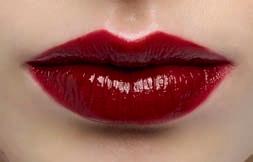
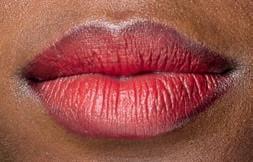






As seen at Christian Siriano, Jason Wu, Rokh and Kobi Halperin—in the form of an eyeshadow veil, a cloud of highlighter, layers of glittery mascara and a gold foil, respectively—the new season’s magical metallic gold is applied in small touches for a celestial effect worthy of a fairy tale.


Applied with precision using a small brush, in the shape of a heart or with a delicately blurred contour, carmine red will be on everyone’s lips this fall. We especially love it punched up in a satin finish for the perfect statement pout.



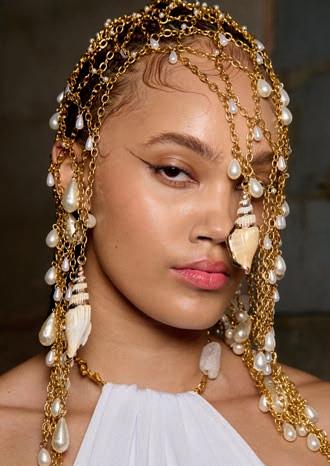

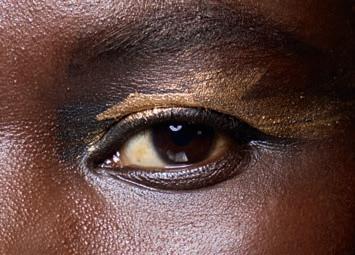
Thank Hailey Bieber for repopularizing the blush trend, which has been hitting hard for a few seasons now. The fall/winter version is both ultrafeminine and eye-catching: A bold pink flush is applied in the centre of the cheek for a look that reads “extreme polar vortex.”

1.

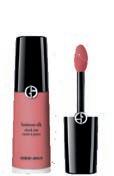
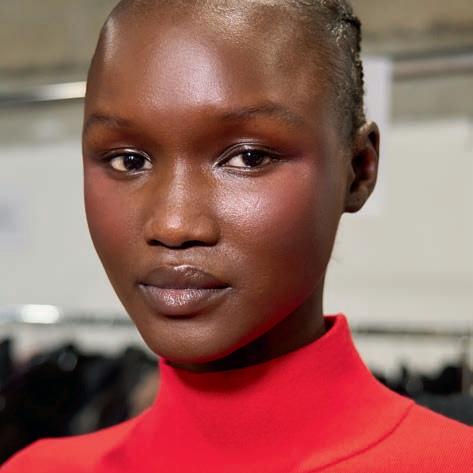


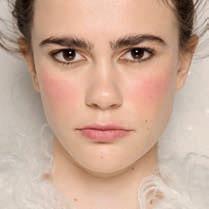
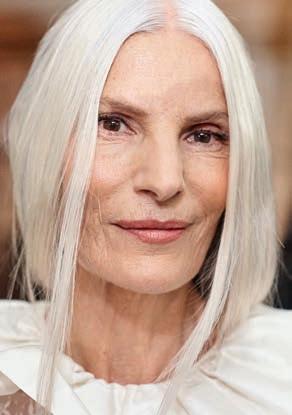

The star of almost all the catwalks was smooth, uniform, radiant skin. To replicate the models’ bright, natural complexions, you’ll need to look for all-inone superstar products that combine skincare and makeup for that healthy-glow effect.





OUT: 100 percent matte powdered and repowdered or plaster-effect skin. IN: A super-radiant complexion strategically highlighted with a glossy or shimmering highlighter.





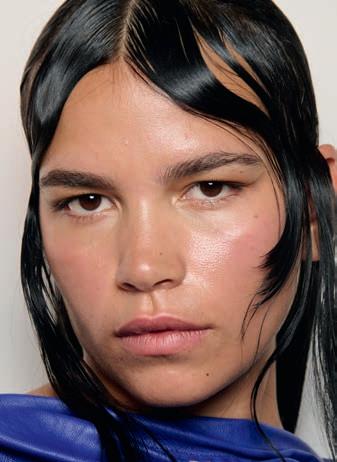
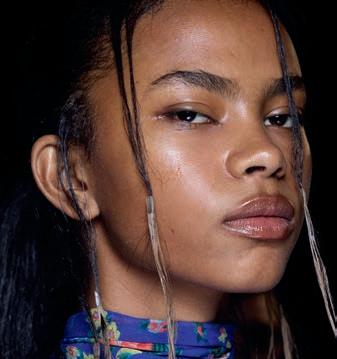
It’s THE manicure trend of the season: ultra-long and tapered nails painted a shiny grey or a translucent or opaque silvery pink. Shine bright, baby!
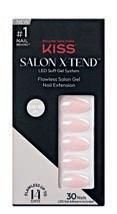


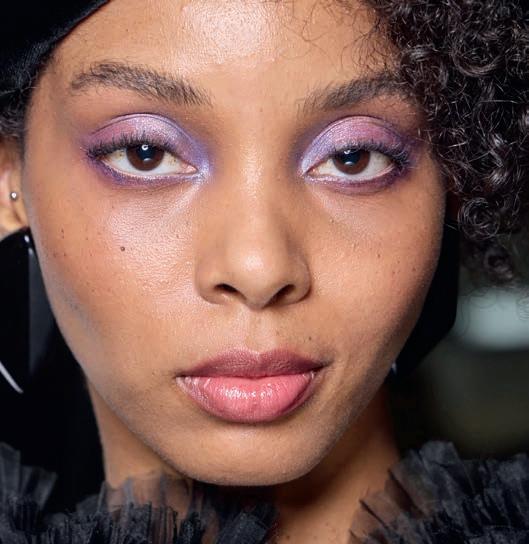
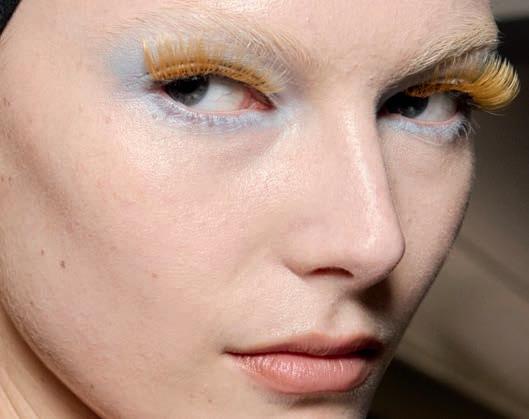

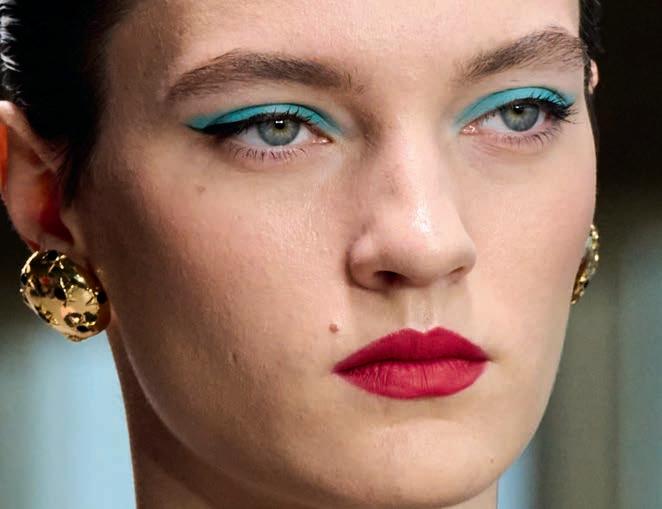

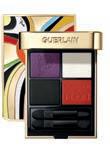
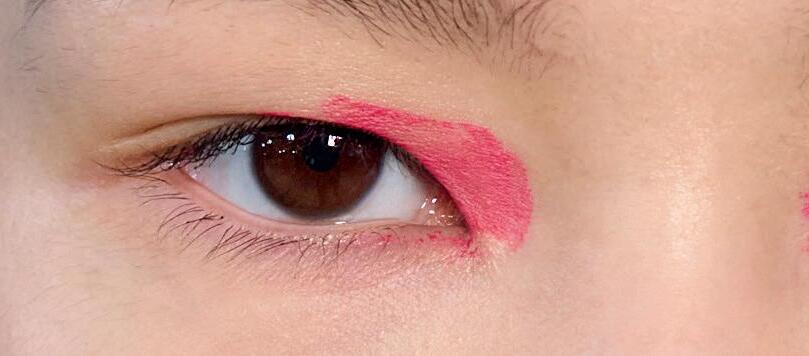
If spring saw the birth of the rock-stargirlfriend trend—a half-goth, half-glam look inspired by the grunge style—this fall will once again see women parading through the streets with their eyes outlined in thick black or brown lines. The inspiration? The smoky makeup seen at Tom Ford, Marine Serre, Mugler and Roberto Cavalli.



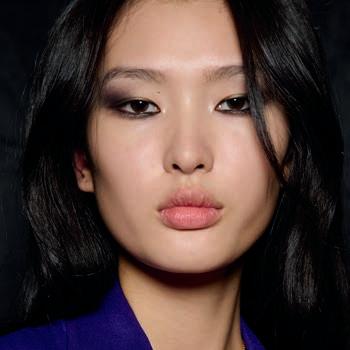


Let it shine! Crystals multiplied on the faces, eyelashes, hair and even teeth of the models in this season’s biggest shows. Combined with a peachy complexion, these rhinestone skin jewels promise to draw some serious attention.
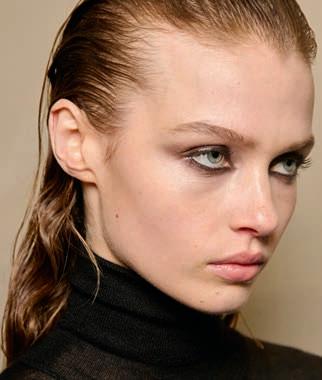

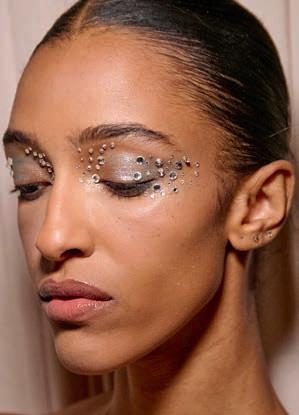






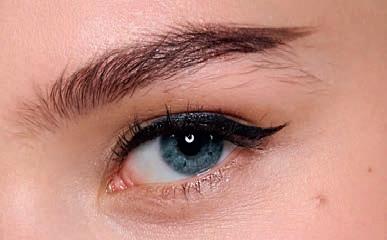
Full, straight eyebrows—also known as “boy brows”—are making a comeback. Well styled and disciplined, these arches have character, are suitable for all face shapes and frame the eyes wonderfully. What more could you ask for?



Far from disappearing, lipliner is actually on display this fall, asserting itself on pouts, including cubist and surrealist ones. Layered, asymmetrical, irregular, just in the centre of the mouth or even beyond the corners of the lips: All pencil strokes are good.


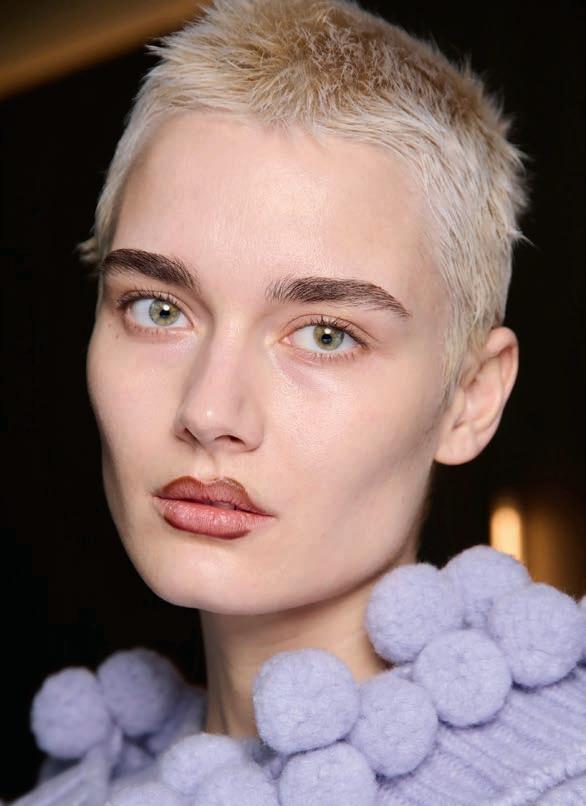
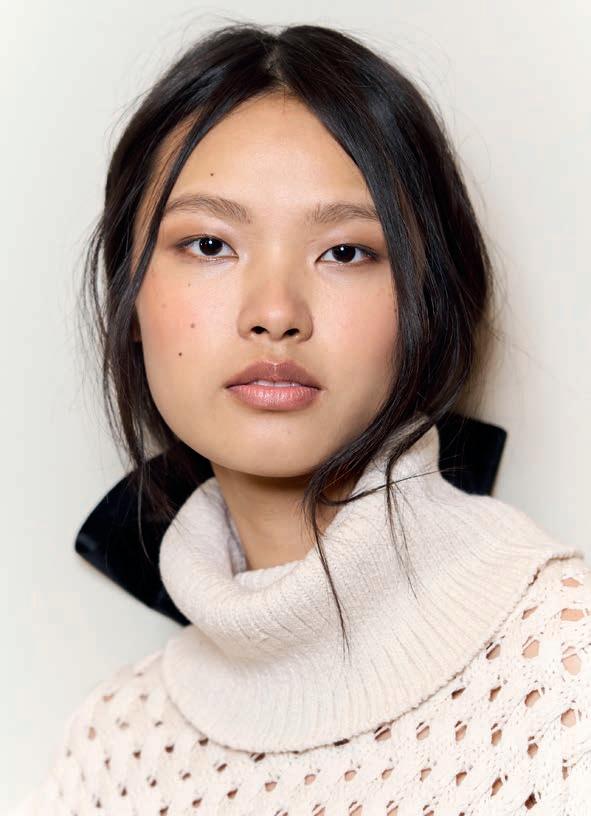

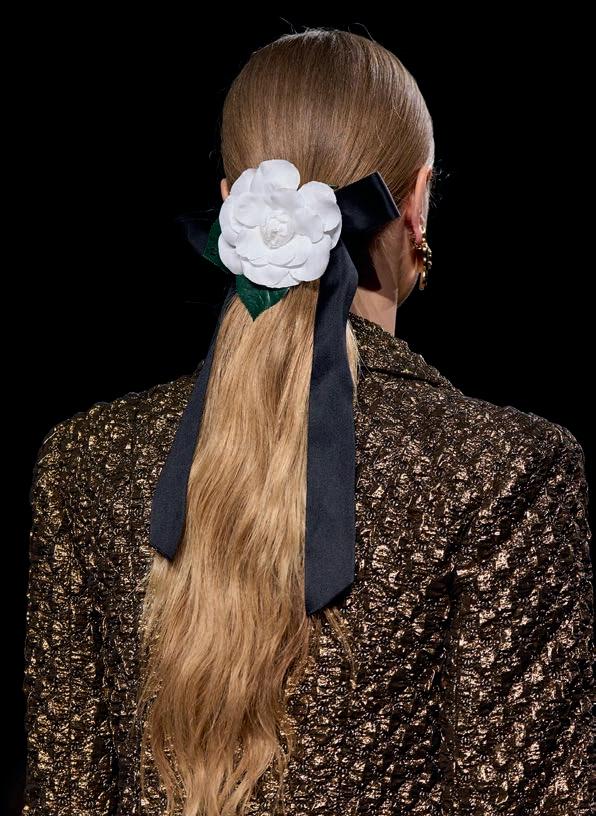
Created with fabric ribbons or by cleverly tying hair in celestial high mini-buns, bows will be on everyone’s head this fall. Attached to the base of a bun or ponytail, they immediately impart a chic and distinguished look à la Penelope Featherington. Thanks for the inspiration, Bridgerton!


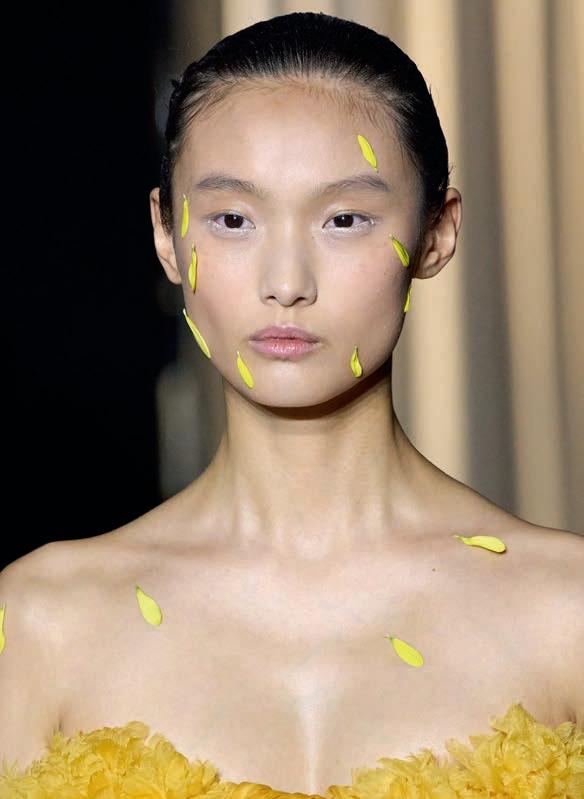


The prize for the prettiest example of a fall/winter beauty trend goes to...Giambattista Valli and his soft flower petals as freckles, which were perfectly matched to the dresses of the models.
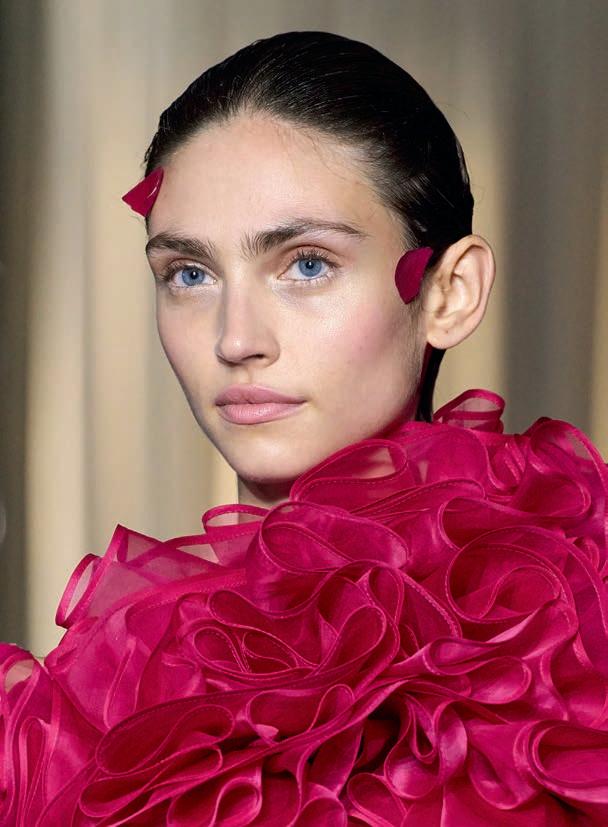

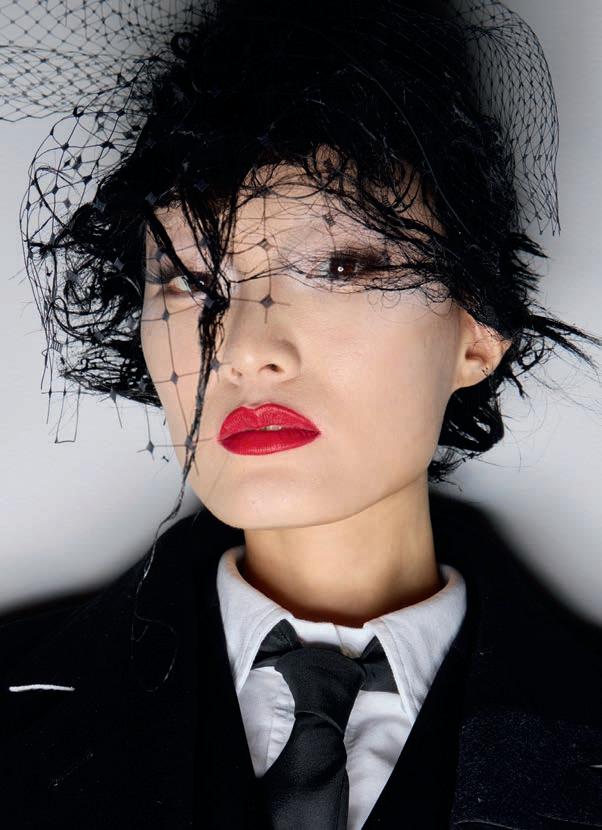
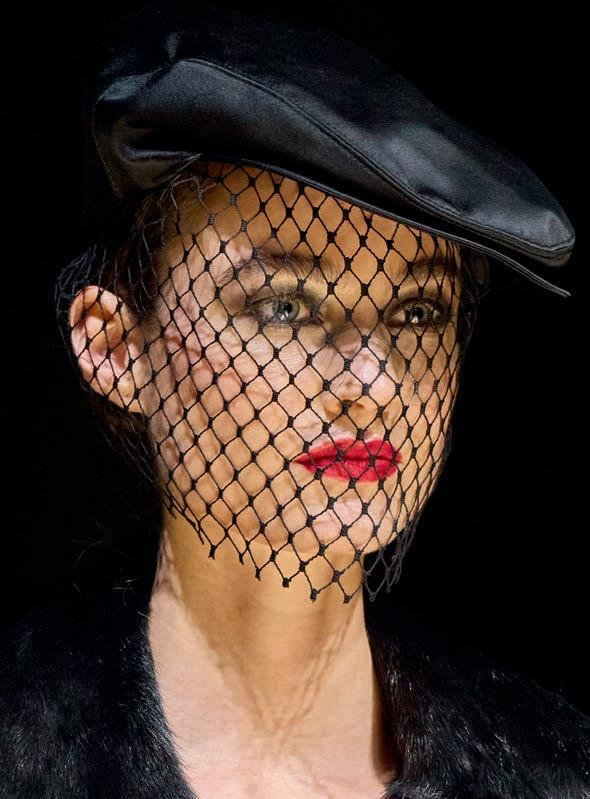
If the Dolce & Gabbana, Bora Aksu, Di Petsa and Thom Browne shows—as well as Kylie Jenner at the most recent Schiaparelli show in Paris—are anything to go by, a veil that matches your outfit is the hair accessory of the moment.
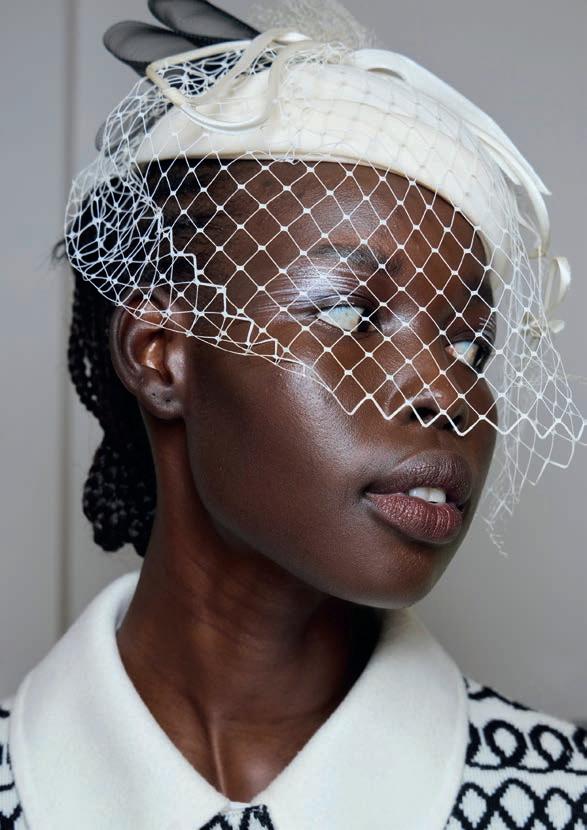

Soothing on skin and also a comforting scent in fragrance, milk is having a moment in beauty.
WHILE WORKING on beauty campaigns in France, makeup artist Violette Serrat kept seeing models arrive on-set with damaged skin. “It was very stressful, so I was trying to find a skincare product that would soothe and immediately repair the skin to prepare it for makeup,” she says. It inspired her to create BoumBoum Milk, which ended up being the bestselling skincare product in her beauty line, Violette_FR. “I realized we needed something liquid that really feeds the skin,” she says. “I wanted to develop a product that would make your skin stronger the more you use it without creating an addiction to it.” The end result was a three-in-one mist that acts as a toner, serum and moisturizer.
Milk is associated with our basic life needs—it’s what we all survive on as babies—and it’s been showing up lately in skincare. That association was part of ILIA Beauty founder Sasha Plavsic’s inspiration when she created The Base Face Milk, a facial essence and liquid moisturizer that launched earlier this year. “Milk brings to mind nourishment for me,” says Plavsic. “And there is also something soothing and nostalgic about the concept [of using it in beauty]; I grew up in the ’80s and ’90s with ‘Got Milk?’ campaigns.” The original idea for the product came from Plavsic’s travels to Seoul, where the Korean beauty industry is “years ahead of the Western world’s” and light, cushiony textures remain hugely popular. “I wanted to make a base that could be worn in the morning or the evening,” she says. “The intention was to soothe, prep and nourish with just a hint of light moisture, so a liquid was perfect.” This category of product—a fluid you press into the skin to improve its health and texture—is definitely having a moment. In addition to the ones offered by Violette_FR and ILIA Beauty, there’s Hailey Bieber’s Rhode Glazing Milk—which sold out when it launched
By LESA HANNAH
last summer—as well as Farmacy Honey Milk and Byoma Hydrating Milky Toner. The rise in this kind of product is a response to consumers over-exfoliating, believes Simon Tooley, president of Etiket, a Montreal-based beauty retailer that just recently opened a boutique and spa in Toronto. Tooley recalls many brands having a milk cleanser about a decade ago, but they slowly fell out of favour and were replaced by gels and anything that would deeply clean the skin to remove sunscreen, makeup and pollution. Ingredients used in overabundance, like retinols and chemical acids, have also caused a surge in compromised skin barriers and therefore sensitivities. “But now it’s starting to come back to that idea of soothing,” says Tooley. Beauty is also having a bit of a food obsession of late (Bieber’s Glazing Milk was created in part because she wanted to make her skin look like a “glazed doughnut”), and that means that when it comes to fragrance, milk has a place as a creamy and sweet scent. Perfume is already exploding due to TikTok, and foodie scents are expected to dominate this year’s fragrance offerings, according to consumer-trend-tracking company Spate. One that has already sold out at Etiket is Giardini di Toscana’s Bianco Latte, a milky-vanilla scent that went viral. “All gourmands are trending right now,” says Tooley. “And I think what’s happening is that everyone’s like, ‘How do I create something that’s different and doesn’t smell sickly sweet?’” For example, vanilla as a scent can be extreme, but the perfumes that have notes of it and are standing out right now present it in a more refined way. “These are sophisticated,” says Tooley, citing a fragrance called Escapade Gourmande as an example. “Vanilla is something that when used correctly [makes] us sniff our wrist again,” he says. “I’ll often say to the perfumer, ‘What is that?’ And they’ll go, ‘Oh, well, there’s a vanilla note in there, and that’s what’s drawing you back.’”
Fragrance brand Commodity’s Milk was a hit right out of the gate when it was released in 2021 and now accounts for 70 percent of the perfumery’s business, says founder Vicken Arslanian. Developed to be a juxtaposition of hot and cold—with warm marshmallow balancing cool milk—Milk is successful, Arslanian believes, because it’s a gourmand scent that doesn’t “claw at you.” “I think that’s the tricky part: how to make something that is warm and comforting yet doesn’t make you want to wash it off an hour or two later,” he says. With Milk, the addition of toasted sesame gives it a distinct unique scent.
As Plavsic notes, there’s also a nostalgic element at play with milk. “Remember, we grew up on milk—things like [the old milk ads] and having milk with cereal,” says Arslanian. “So we have this childhood connection.” And the soothing aspect—whether on our skin or our mind—that milk seems to deliver can’t be overstated. “Not to get too philosophical,” says Tooley, “but I think we want to feel warm and safe and good, what with all that’s going on in this crazy world.”




For far too long, perimenopause and menopause have been overlooked, misdiagnosed or dismissed, leaving women to suffer in silence. But things are finally improving.
By LESA HANNAH

AROUND THE AGE OF 36, Naomi Watts was having trouble getting pregnant, so she sought the advice of a doctor. “That’s when I learned that I was probably close to menopause, given that my hormone levels were lower than they should have been for what are considered ‘fertile times,’” the Australian actor says over email. “I nearly fell out of my seat when he told me.” Up until this point, Watts’ own knowledge on the subject had been “almost nothing” outside of the fact that her mother had entered menopause at 45. “I didn’t know that she had a multitude of symptoms in the lead-up to it, and I didn’t know that her symptoms went on for years and years,” she says. “I certainly never thought that it was something I would have to worry about in my 30s.”
Watts’ insufficient knowledge is a familiar tale thanks to the lack of information about and medical support for this transition in a woman’s life. For decades, perimenopause (the stage that starts as early as your mid-30s and is typically marked by irregular periods due to fluctuating hormones) and menopause (the stage that is reached once it’s been 12 months since your last period and marks the end of your ability to reproduce) have been misunderstood, misdiagnosed or dismissed by doctors. (Halle Berry recently shared that her doctor told her she had herpes when she complained of painful sex but it was just dryness due to declining estrogen.)
that one of the most significant reasons for this is inadequate understanding around its pathology—how the condition presents itself through symptoms. This can be attributed to how it’s taught in medical school—often given less attention than obstetrics and other aspects of gynecology—as well as the sexist belief that women tend to complain and somaticize their symptoms. Haver, who studied medicine in the ’90s, recalls how upper-level doctors would colloquially refer to a certain type of patient as a “ww,” which stood for “whiny woman”—one who was complaining of issues like weight gain, poor sleep and brain fog. “I’m embarrassed to say it, but I have to be honest—I was one of those doctors,” she says. “I mean, I was trying to be compassionate, but I had no training in the pathophysiology of estrogen deprivation outside of hot flashes and osteoporosis. The executive-functioning disorders and gastrointestinal changes? None of that.”
And that’s just the tip of the iceberg when it comes to symptoms of declining estrogen. Beyond being a hormone related to sexual and reproductive development, it affects so much more, like the heart, cognitive function, bone integrity and blood-sugar balance. That’s why symptoms of its decrease can be so broad and include anxiety, tinnitus, body odour,
vertigo, incontinence and arthritis in addition to the usual, more commonly known hot flashes and night sweats. The result has been that generations of women have had to suffer in silence, been brushed aside or been given the wrong treatment. When Dr. Iliana Lega and Dr. Michelle Jacobson, menopause specialists at Toronto’s Women’s College Hospital, noticed “gaps” in the care their patients had received—whether they weren’t listened to or their symptoms were “not treated in an evidence- and guideline-based way”—they published a review in the Canadian Medical Association Journal last year. “There’s a real lack in the medical curriculum, which has led to sort of a discomfort in practitioners out there [because they’re] not able to treat menopause in a way that’s evidence-based and that they’re confident about,” says Jacobson. “So we decided that a review in a journal that has good reach, like CMAJ, made a lot of sense because it really gets that message out there.” They would often see patients with standard menopausal symptoms who had been put on antidepressants or sleeping pills. “And this happens all the time,” says Jacobson.
While every woman is different when it comes to how perimenopause is experienced, the same can be said about who should consider getting hormone replacement therapy, the most common treatment. In the best candidates, the benefits—alleviating symptoms and therefore improving quality of life—outweigh the risks. As for when to start taking it, Haver believes that should be as early as possible. “The minute you start having symptoms,” she says when asked. “We know when the maximum benefits start to wane, and that’s 10 years after the last menstrual period.” Jacobson agrees. “Women who are younger or within 10 years of their final period have a window of opportunity where hormones can have a positive impact on their cardiovascular outcomes, on their bones and certainly on their symptoms,” she says.
There are different forms of hormone replacement, including oral and topical, but Haver prefers transdermal patches. “I love having options, but I usually go to a patch first for cost, ease and tolerance,” she says. As for how long you need to be on it, this tends to be based on a variety of factors, but on average it’s about five to seven years. “What we usually do is start somebody on therapy and follow them closely until they are stable and feeling well,” says Jacobson. “After a couple of years, we’ll bring them back to see if we can take them off it or find a lower dose that still controls their symptoms.”
There’s no doubt that we’re now seeing an increase in awareness, discussion and support. After Watts’ experience, she was baffled that there wasn’t more information available “given that half the population is going to go into menopause at some point or another,” she says. It drove her to create Stripes, a beauty and wellness brand, in 2022. “In menopause and perimenopause, hydration issues occur from scalp to vagina. I wanted to create a line that really targets those symptoms and makes women feel less afraid and less ashamed.”
Beyond being more informed and advocating for ourselves, we may have other options for managing perimenopause and menopause in the future. Haver imagines that one day we’ll have wearable monitors that track our hormonal fluctuations.
“And then you’d go see your menopause-educated provider to start talking about a plan,” she says. She’s also aware of technology being developed that would preserve the life of
ovaries so that menopause can be delayed. “If we can extend the shelf life of the ovary, maybe you get your period every six months or something,” she says. “And that way, it just slows the whole thing down. That’s something we could work toward.”
In the meantime, arming ourselves with knowledge and talking about the subject is already making a massive difference. Watts says that on multiple occasions, she’s been stopped on the street by women with tears in their eyes to talk about Stripes. “At first, I think, ‘Oh, God, I haven’t got my lipstick on and I’m going to have to do a selfie or recite the movies on my resumé,’” she says. Instead they tell her how grateful they are to her for opening the door to this conversation or giving them permission to talk freely about it. “Those kinds of interactions mean the world to me.”
In addition to replacing hormones, there are other things you can do to help yourself through this phase.
You can get the anti-inflammatory benefits that used to be provided by estrogen by filling your body with foods that fight inflammation (fatty fish, leafy green vegetables, almonds and walnuts) and support muscle growth and cognition. In addition to healthy fats, antioxidant-rich fruits and vegetables and fibre, we need protein. Haver says that most menopausal women aren’t getting enough of it and should aim to get 1.3 to 1.6 grams per kilogram of ideal body weight every day. If you’re vegan or vegetarian, you’ll have to work harder to ensure you’re getting complete proteins and may need to top up with shakes and supplements. “You just want to make sure that whatever supplement you get, you have a complete amino-acid profile,” she adds.
EXERCISE
“You need cardio to keep that heart strong,” says Haver. “And you need resistance training to keep your muscles strong. If you’re just doing cardio, you are going to lose muscle mass, which is what determines your basal metabolic rate and your resistance to insulin.” Maintaining your muscle mass takes focus and work. “You can’t just go walking three times a week with your dog.” She suggests finding creative ways to push your muscles, which will build strong bones. A weighted vest is a good way to stimulate that muscle and bone while going about your daily activities.
VITAMINS
Aim to get at least 25 grams of fibre a day; you could even take a supplement to get to 35 grams. “That has been shown to help multiple things—like insulin resistance and visceral-fat deposition—[by] feeding the gut microbiome, which decreases your blood sugar,” says Haver. “So that’s a huge thing.” Other good supplements to take include omega-3 fatty acids, vitamin D (4,000 IU a day) with vitamin K, creatine and a collagen peptide with Fortibone for bone strength.
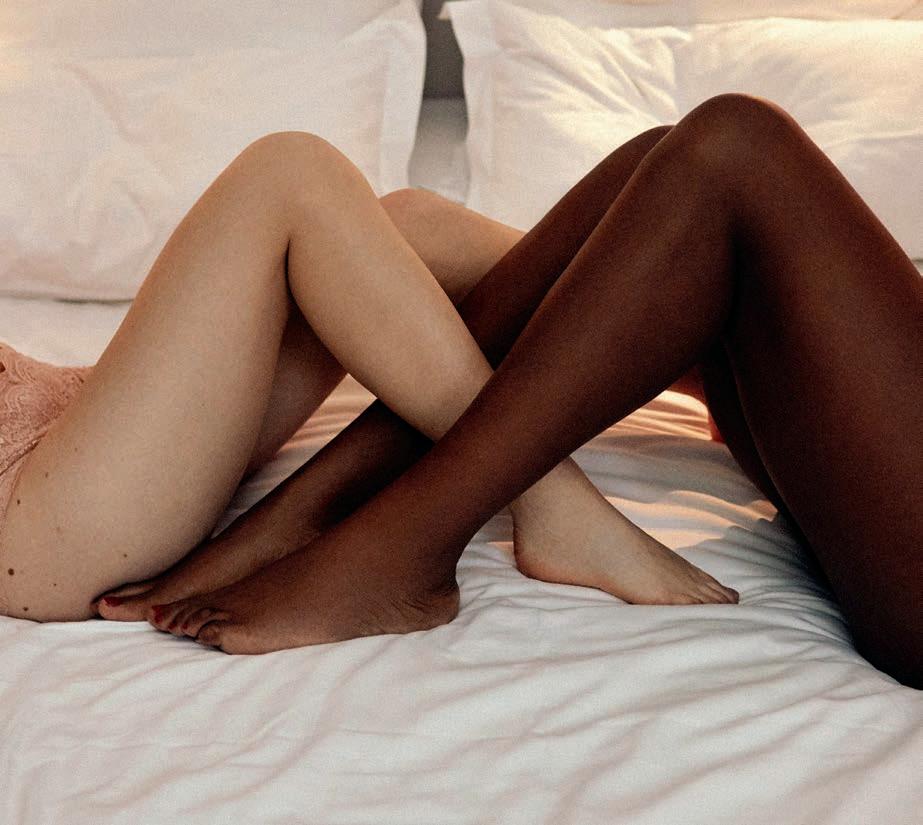
The sex-toy market is more diverse and inclusive than ever. Here are some of the new trends and products that will help heat things up.
By ELISABETH MASSICOLLI
IT’S OFFICIAL: The mercury is rising in Canada. According to the Canada Sex Map 2023 report by sexual-wellness company Lovehoney, Canadians bought enough sexy handcuffs and restraints in one year to lock up the entire population of Baie-Saint-Paul, Que., and the length of all the sex toys sold in the country if they were put end to end would reach four times the height of Toronto’s CN Tower. These impressive statistics are due in part to the democratization of adult toys, the prevailing discourse about the importance of female pleasure and the fact that it is now possible to get hold of vibrators, anal plugs and dildos more easily and discreetly than ever before. But another reason is that what’s on offer is much more diverse than it used to be.
In the past, the famous rabbit vibrators and silicone Fleshlight male masturbators
populated the dark aisles of adult stores, but now there are toys of all kinds to please (ahem) everyone. “Today, the focus is on designing toys that [align with] users’ real-world preferences and behaviours,” says Amy Johnson, founder and owner of Montreal-based online store Nox Shop. “For a long time, the market was saturated with products that didn’t quite match the way many people pleasure themselves or their partners. The industry’s shift toward inclusivity and an understanding of diverse sexual experiences is not only refreshing but also empowering for people who are looking for products that actually enhance their pleasure.”
For example, there are toys specially designed for women who like to masturbate on their stomach, rubbing their genitals against something (such as a pillow). “This method, which has often
been neglected, is now recognized and taken into account, [which has led to] toys that are specially designed for this purpose,” says Johnson. “This change is incredibly rewarding for people who previously felt that their preferred way of sexually fulfilling themselves was not common or recognized.” There are also toys that are adapted for trans people and their unique needs as well as gender-neutral toys, which can be used in multiple ways and by everyone.
Another strong trend is toys made specifically for use by couples. “As people become more open to using toys with their partners, I expect to see an increase in the development of these types of objects,” says Johnson, who also notes that customers are moving away from ultra-discreet toys and instead choosing bold, unique items that capture attention. After all, why hide your pleasure?







For Fendi, a major move into fragrance meant looking inward.
By ADRIENNE GAFFNEY
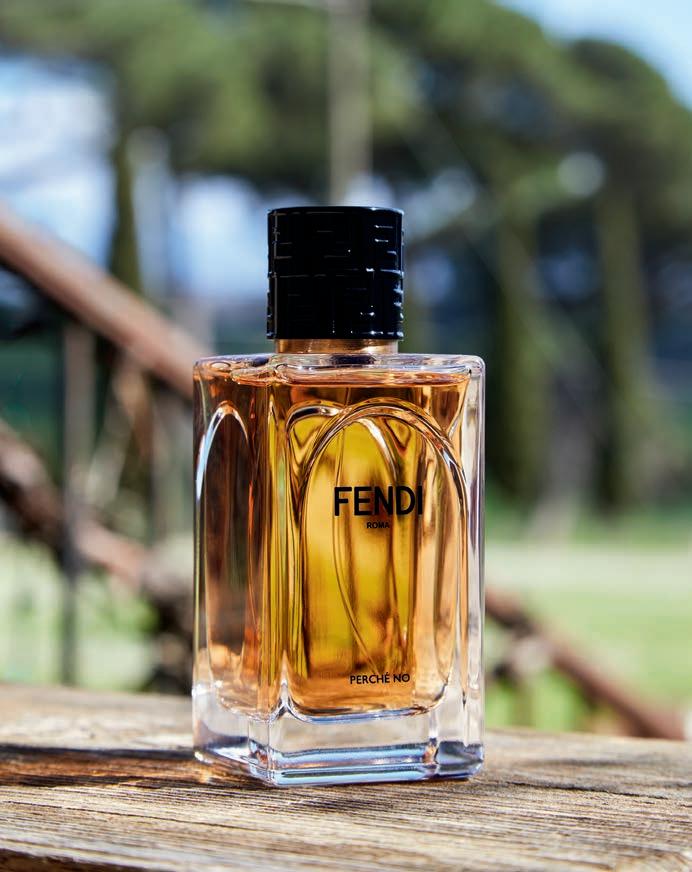

AS WITH MOST OF FENDI’S endeavours, its approach to fragrance has family at its centre. Silvia Venturini Fendi, a member of the family’s third generation and the artistic director of accessories, menswear and children for the company, is with her daughters, Delfina Delettrez Fendi and Leonetta Luciano Fendi, at I Casali del Pino, a bucolic family property just outside of Rome, when the final result of a long-in-the-works project—Fendi’s first major fragrance launch in years—is presented to her. She sniffs approvingly. The line includes seven perfumes, each conceived with a loved one in mind. Casa Grande, a leather scent with hints of cherry and incense, is an ode to Adele Fendi, who co-founded the company as a fur and leather-goods store in 1925 with her husband, Edoardo; La Baguette, which smells like bread with sugar and butter, was inspired by Delfina’s six-year-old twin sons. When the bottles are lined up together, they form a colour gradient, each relating to the ones next to it.
“It’s a good way to start a new chapter,” says Silvia, before reconsidering a bit. “Not only a new chapter, I would say—a new century. This is the beginning of a celebration of our 100-year history.” Now they are adding a new dimension to the story. “There’s nothing that reminds you more of a person than a fragrance. I think fragrance has a very, very big impact on the history of a person. We started, of course, thinking about my grandparents, so [the idea] to dedicate one fragrance to my grandmother, Adele, came quite naturally. Then we started thinking about the Fendi sisters, and so it was kind of natural for me to talk about my mother, [Anna], one of the mythical
Fendi sisters. Then [Fendi artistic director of couture and womenswear] Kim [Jones], with his story. And one for myself, one dedicated to my children and also one thinking about the future to come. We thought that it would be nice to dedicate one to the smallest [members] of the house.”
Perché No, Silvia’s scent, is a blend of pink peppercorn and sandalwood and is meant to evoke the feeling of home— namely, I Casali del Pino, which has been a family retreat since 2004. “They said to me, ‘Let’s be inspired by your best moment,’” she says. “My best moments are definitely in this place. It’s where I meet with my family and my sister for the weekend. We are a very, very big family, so for the weekend, we all reunite here.” The 175-hectare property, which is run by Silvia’s sister, Ilaria, is home to an organic farm, a small hotel, a restaurant and family quarters. “There’s so much to do,” she adds. “You think, ‘God, it’s boring in the countryside.’ No; it’s an incredible adventure every time. You wake up with the sun. I have memories of nights around the fire, talking—no television—and picnics at the river. I think the best thing you can give to your children when thinking about their future is a place like this.”
Leonetta and Delfina had their first driving lessons on a tractor here years ago, and now Delfina’s three children come for the weekends. Roman ruins can still be found on the land, and legend has it that there’s a spot where Charlemagne once stopped on the way to Rome for his coronation. “The minute I walk through those gates and through this tunnel of trees, I feel recharged,” says Delfina, who joined Fendi in 2020 as artistic
“They said to me, ‘Let’s be inspired by your best moment.’ My best moments are definitely in this place.”

director for jewellery and also has her own jewellery line, Delfina Delettrez. “This place has a double soul to me. There is always an adventure because the land is infinite and full of discoveries. I can lie down on a hill and feel the relativeness of time and just enjoy peace. But at the same time, I can take my small car and be in the middle of a forest with wild animals while still being so close to Rome. I mean, it’s quite absurd and unique.” She remembers when the family bought the property 20 years ago. “We [would] cook with fire. It was very primordial because there was nothing. We would all sit in the church and just stay there, sitting on the ground and playing games.” The process of creating the Sempre Mio fragrance involved Delfina taking a deep look at her family’s past to create something truly unique.
“I waited 36 years to wear perfume because I never felt connected to any existing scent,” she says, sitting outside as family members, long-time Fendi staff members and the occasional dog pass by. She thought about her family roots in Morocco and how they represented something both foreign and familiar—something that a mix of the sweetness of orange blossoms and the spicy scent of cedarwood could bring to life. Renowned perfumer Quentin Bisch, who created four of the scents in the line, worked closely with Delfina and travelled to Morocco several times.
“[Delfina] had given me some clear images of the textures and colours she wanted to be interpreted in the perfume,” he says. “One was the colour of very reddish earth, like ochre red. The landscapes, the mountains—you could see the texture of the earth. You could see the texture of the stones and the barks of wood. You could imagine the Atlas Mountains. It was super important to be able to get the idea that she had in her mind and to try to interpret it [while being] true to myself as well.”
Creating a series of fragrances that feel intertwined without being duplicative or overpowering one another was a tricky balance to find. “You start with one that you develop more than the others; then you start other ones,” Bisch says. “But at the end, [all the] perfumes were adjusted in regard to one another.” Delfina feels her sister when she smells Ciao Amore. “Leonetta—it’s her,” she says. “She smiles with all her senses. She is like a breeze of beautiful fresh air.” The scent is meant to evoke Ponza, the Italian island where the family has a home and where Leonetta says she “feels the most free and at ease.” The scent’s name is a phrase that falls out of her mouth frequently. “I’m very much a people person,” she says. “Even if I meet someone once but I like and click with the person, it’s going to be ‘Ciao, amore’ the next time.” The fragrance combines orange blossoms with fig leaves and tonka beans, and it’s also a tie to her family. Leonetta recently returned to Rome after years spent living in the U.K. and Belgium, where she studied and worked for the European Parliament. Since September, she’s been working on Fendi’s sustainability efforts and has fallen back into the family fold. “I always wanted to leave—I was always thinking that I [was] like the black sheep of the family,” she jokes. “I wanted to go abroad and have different experiences, but actually it’s been beautiful to come back. I feel like it’s my comfort zone, but it also gives me the possibility to try new things and really do what I feel like.”
Each of the Fendis seems to gain so much by being beside one another, and with the fragrances, there’s been a true joy in creating something new that was built upon so many of their shared memories. For Delfina, this was a long time coming. “It’s really entering into the Fendi world with all of your senses, finally.”

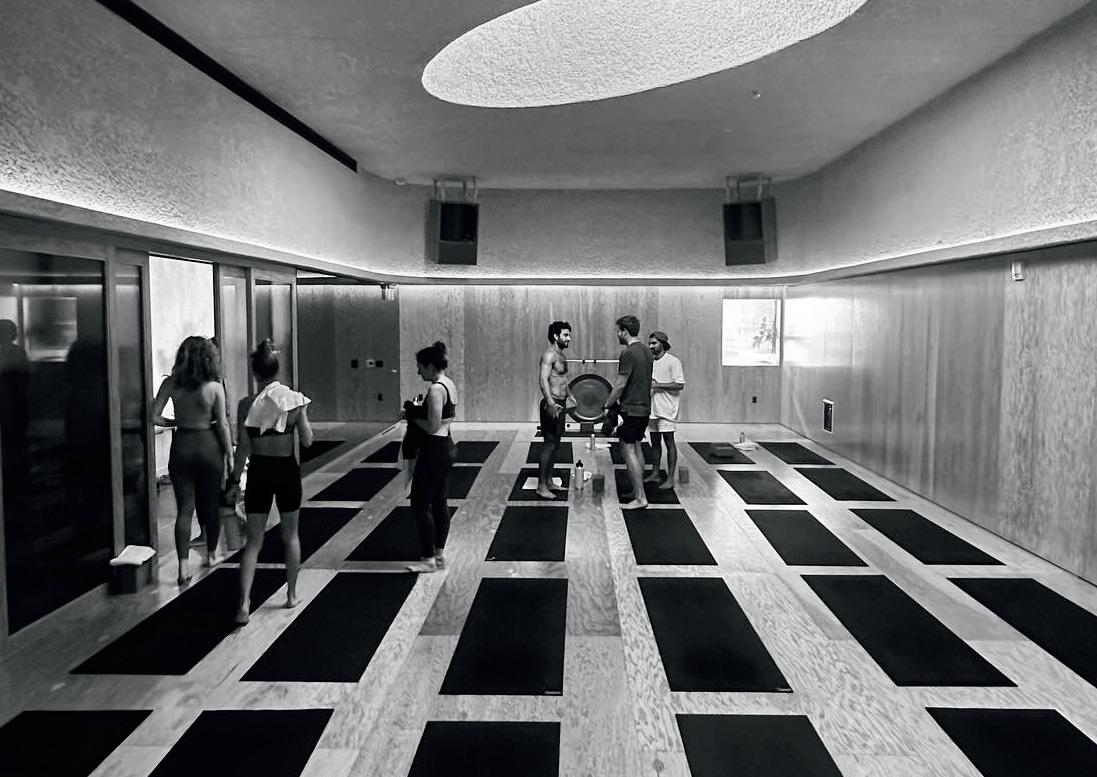
Fitness and wellness spaces are filling a growing need for community, connection and a sense of belonging.
By VAL DESJARDINS
IN LOS ANGELES, with the city’s pervasive culture of movement and fitness, it’s common for people to have work meetings while on a hike or socialize with friends in a spin class. This exercise community’s purpose goes beyond the realm of physical health: It’s rooted in a desire for connection and belonging. While this has always been central to L.A.’s outdoor lifestyle, it’s a trend that has begun to spread to other cities around the world as fitness and wellness permeate popular culture and become part of the everyday norm.
In major hubs like Toronto, Vancouver, New York and Los Angeles, studios and gyms are embracing their role as “third places.” This concept, which was first introduced in 1989 by sociologist Ray Oldenburg in his book The Great Good Place, refers to a space between our home and our workplace that bears markers of familiarity and belonging. This can be a fitness studio, coffee shop, library, community centre or park—anything that can be affectionately described as a “happy place.” Third places are geared toward bringing people from diverse backgrounds together, often uniting them through a shared activity.
Beyond society’s current focus on health and longevity, the idea of the fitness space as a third place has been reinforced by a conscious shift away from alcohol. The two-drinks-per-week recommendation in Canada’s latest alcohol-consumption guidelines has pushed many to reconsider their social activities and the habits that come with them. Pilates classes, group circuits and shared workout sessions have become the de facto hangout for many in lieu of after-work cinq-à-sept or dinner and drinks.
The popularity of fitness meetups has also increased in part due to a higher number of people working remotely on a regular basis. Because while this flexibility has many benefits, it strips us of organic opportunities to connect with others in the office environment. A quick chat with the boss over morning coffee, lunch with a team member, asking a colleague for their opinion—these tiny interactions unconsciously feed our sense of belonging. The loss of these moments has given rise to a need for connection and growth in other settings, making third places more important than ever.
During my latest trip to L.A., as I tested out the programming at several studios, I couldn’t help but notice that many of the third places here share certain hallmarks. They’re often diverse and welcoming, having moved away from the exclusionary practices previously associated with certain fitness modalities. They’ve developed a culture that is centred on joy and energy and leans into the cathartic quality of movement practices. And while some still embrace both competition and goal-setting, they’ve generally moved away from isolating individualized practices. The trainers and teachers are focused on creating programs that embrace holistic approaches that encompass both the body and the mind. Most of these studios have also moved away from a traditional membership structure. They’ve committed to welcoming people who, like me, might be joining a friend or looking to explore a particular fitness community while travelling. Beyond offering flexibility, this also means that these spaces have committed to providing an experience that will keep people coming back.
Much like our homes, the spaces and communities we choose to inhabit are reflections of our desires and aspirations. As a leader in the Canadian health and fitness industry, I believe that we have a responsibility to never lose sight of that and to foster experiences that make individuals feel seen, included and challenged to grow.
NEW YORK
RISE NATION All the classes at Rise Nation are done on a VersaClimber climbing machine. The movement pattern that’s proprietary to this equipment engages all the major muscle groups, making it an ideal lowimpact full-body workout. RISE-NATION.COM
MIAMI
ANATOMY FITNESS Workouts at Anatomy Fitness are a combination of elements from both sports performance and functional training. Co-founded by retired Canadian football player Marc Megna, this studio focuses on the science of strength and conditioning as well as creating an intimate wellness community that welcomes people of all fitness goals and profiles. ANATOMYFITNESS.COM
YOGA JOINT One of the workouts Yoga Joint offers in-studio is a vinyasa-inspired hot flow class that’s designed to cater to all levels. It includes several foundational movements that can be dialed up to reach a desired intensity and align with individual goals.
YOGAJOINT.COM
LOS ANGELES
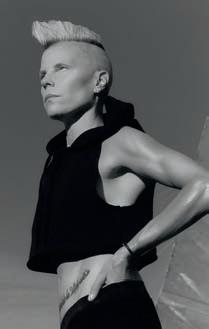
I’m the owner of my own space, The Studio, in Montreal, and I’ve seen it become the third place for so many of my community members for all the same reasons. While the quality of the programming and training is what originally drew them in, their attachment is rooted in the ease and comfort they feel here. They have conversations with other classgoers about their children, careers and spouses. They also understand that regardless of their level of experience, they’ll always be treated with the same respect and dedication as everyone else.
THE CLASS The Class can best be described as a movement practice that combines strength, cardio and guided meditation. Mindfulness techniques are folded into the coaching, creating a cathartic workout focused on releasing energy and emotion. THECLASS.COM
OPEN Open blends elements of mindfulness, breath work and functional strength training to create an allencompassing holistic fitness experience. O-P-E-N.COM
CAMP Camp combines various modalities on one “campus,” offering yoga, group circuit sessions and mat-based sculpt classes. The combination of different practices under one roof allows for the cross-pollination of different communities and encourages Campers to try new workouts. WELOVECAMP.COM
While the ever-growing world of scents now offers an option for every mood or occasion, in what way do these coveted—and often widely produced—fragrances fit into the realm of sustainability?
By CYNTHIA QUELLET
IN PARIS EARLIER THIS YEAR at The Carrousel du Louvre, the luxury division of the L’Oréal Group brought together all of its brands (including YSL Beauty, Lancôme, Prada and Valentino) for the first time for an immersive event celebrating the art and science of perfumery. The French company wanted to showcase the olfactory odyssey of scent creation—from the initial selection of the ingredients to the final design of the bottle—and all of the innovation, emotion and eco-responsibility that goes into it.
“At the beginning of the creation process of a great perfume, there is always an encounter and exceptional affinity with a great ingredient—its technical performance but above all its emotional power,” says Karine Lebret, international director of fragrance science and fragrance design at the L’Oréal Group. In short, the foundation of any fragrance? The star ingredient. But there’s a whole process—from sourcing to harvesting— that makes using that ingredient possible, and it’s all done with the collaboration of local producers. Marie-Pia Schlumberger, director of sustainable development for the L’Oréal Luxe branch, recalls the commitments made by the group in terms of sourcing as part of its L’Oréal for the Future sustainability program.
“By 2030, 95 percent of the ingredients in our formulations will be bio-based [and made using] circular processes, and 100 percent of these ingredients will be traceable and sustainably sourced—compared to 92 percent today,” she says. Offering the best quality while reducing the impact on the environment is a clear and ambitious mandate that involves innovation and, in particular, green sciences. “It’s the set of sciences that make it possible to take the best of nature without diminishing it by [ensuring that] cultivation, extraction and processing have a minimal impact,” explains Schlumberger.
The Osmobloom is a concrete example of this. Born from the exclusive partnership between the L’Oréal Group and Cosmo International Fragrances (a global company that specializes in scent and cosmetics), it’s a machine that enables a slow, waterless and energy-efficient extraction process that’s capable
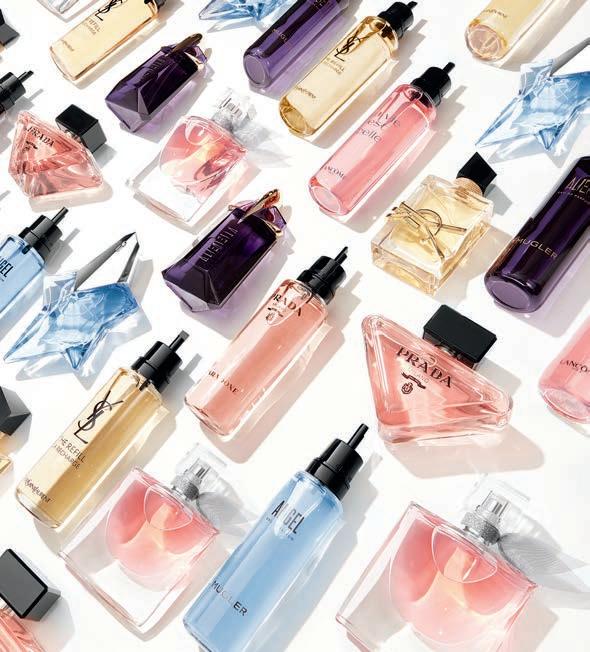
of capturing the exact smell of an ingredient while preserving its integrity. The scent molecules—the same ones that hit your nose when you smell a flower—are collected via the circulation of air. Extracted over a 24-hour period, the molecules are then trapped in a bio-sourced liquid. After the brand’s successful first trial with tuberose—which is used in the composition of Private Talk, a new haute couture fragrance by Valentino—it’s easy to imagine this new extraction process being used with other types of raw materials. “Such a sustainable way of extracting is a real revolution,” says Schlumberger.
A timeless object of both pleasure and desire, a bottle of perfume is now more than ever associated with a curated sense of olfactory style. “At L’Oréal Luxe, we combine luxury and desirability,” says Schlumberger. “Consumers don’t want to throw away their bottles. They have a special relationship with them—an experience, a memory. It’s part of their daily routine.” Take Angel by Mugler, an iconic perfume launched in 1992 and a pioneer of a bold new concept: the refillable perfume bottle. “Across the world, a Mugler bottle is filled every 17 seconds,” says Schlumberger. It’s a feature that L’Oréal aims to deploy on a larger scale in order to transform it into a real consumer habit. “The revolution has only just begun,” she adds. “Today, as part of our L’Oréal for the Future, our bestsellers and our biggest recent launches are refillable.”
In Canada, about 15 fragrances are part of this program, including Armani’s My Way and Paradoxe by Prada. Another bonus is that a 50-millilitre bottle of the latter scent along with a 100-millilitre refill allow you to use 40 percent less material than you would if you bought three new 50-millilitre bottles. While at-home refill formats are the most commonly purchased, it’s the newer, in-store perfume-fountain refill services (carried out by a beauty consultant) that the L’Oréal Group wants to expand. Currently offered exclusively at Sephora in France, they should be gradually extended around the world and adapted according to the bestselling fragrances in each country.
Nécessaire’s latest gel-oil cleanser is packed with Epsom salts and soothing minerals to leave skin silky and smooth, while its warm sandalwood scent makes lathering up all the more blissful.
NÉCESSAIRE THE BODY WASH IN SANTAL ($32, THEDETOXMARKET.CA)
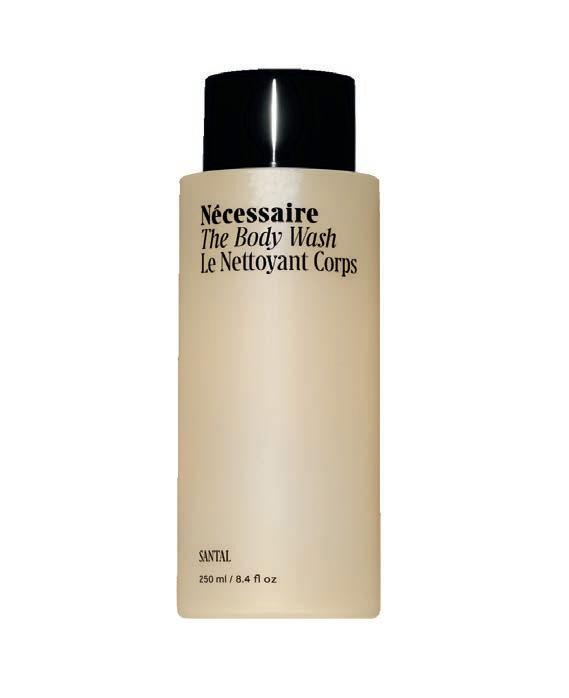
Made in Canada using ingredients sourced from women-led co-operatives in Africa, this sandalwood- and amber-scented scrub includes raw cane sugar and hydrating plant butters to moisturize from head to toe. OBAKKI ORGANIC SUGAR SCRUB IN SENSUAL ($55, HOLTRENFREW.COM)
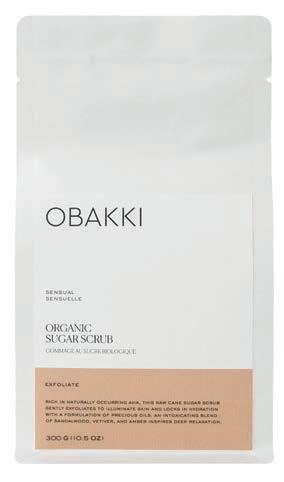

An evening of relaxation requires a beautiful candle, so light up Diptyque’s classic Narguilé—which blends warm tobacco and delicate honey notes—to ease into comfort mode.
DIPTYQUE NARGUILÉ CLASSIC CANDLE ($100, SSENSE.COM)
As the FALL SEASON starts to shift into high gear, taking time for yourself becomes a necessity. Turn your shower routine into an indulgent ritual and melt away the day.
By MELISSA FEJTEK
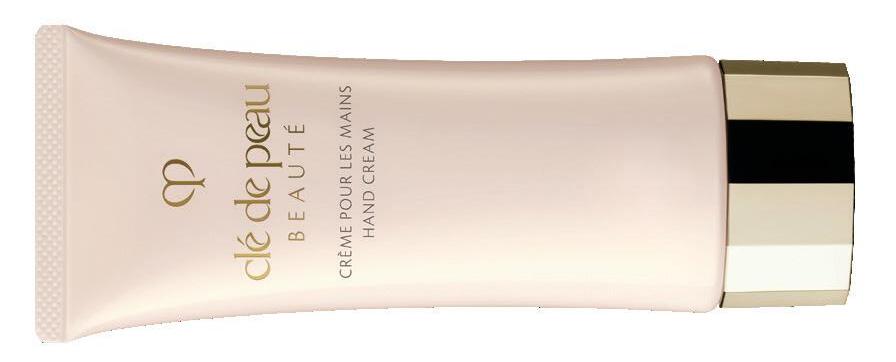
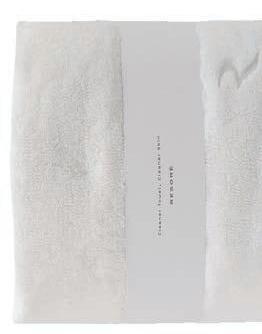
Resorè’s ultra-absorbent, incredibly plush bath towel is made with eco-friendly fibres and antimicrobial technology that maintain its freshly laundered feel even after several uses.
RESORÈ BODY TOWEL ($138, RESORE.COM)

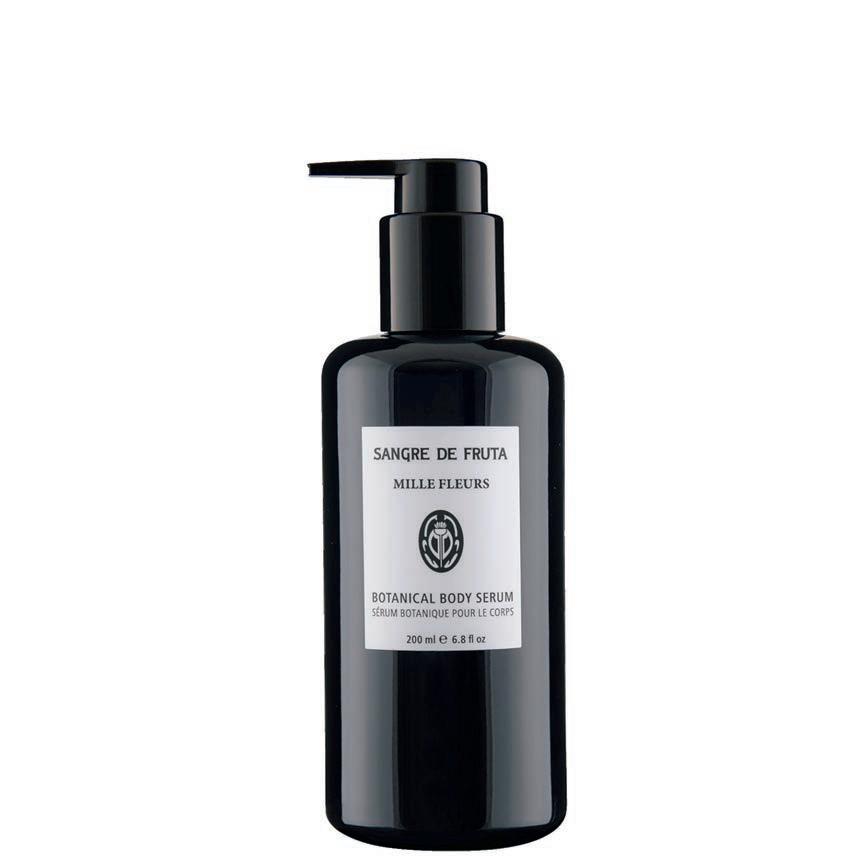
Three minutes is all you need to reap the benefits of this light-therapy device—which emits red and blue light to stimulate collagen, treat signs of sun damage and destroy acne-causing bacteria—in the comfort of your own home. DR. DENNIS GROSS SKINCARE DRX SPECTRALITE FACEWARE PRO ($615, SEPHORA.CA)

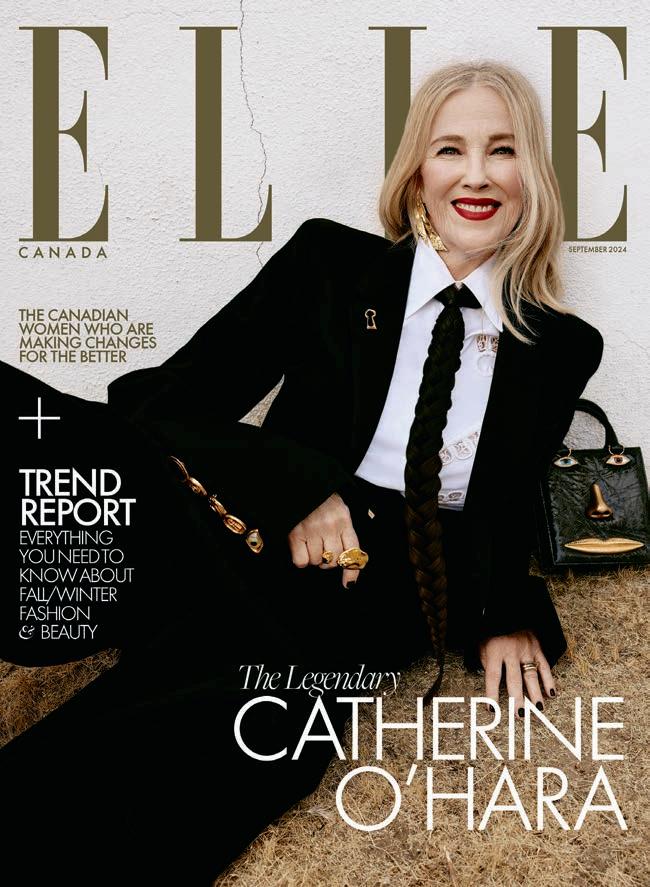


The new season has arrived and with it so many ways to express your mood, reflect your attitude and make your sartorial mark.
By JOANNA FOX
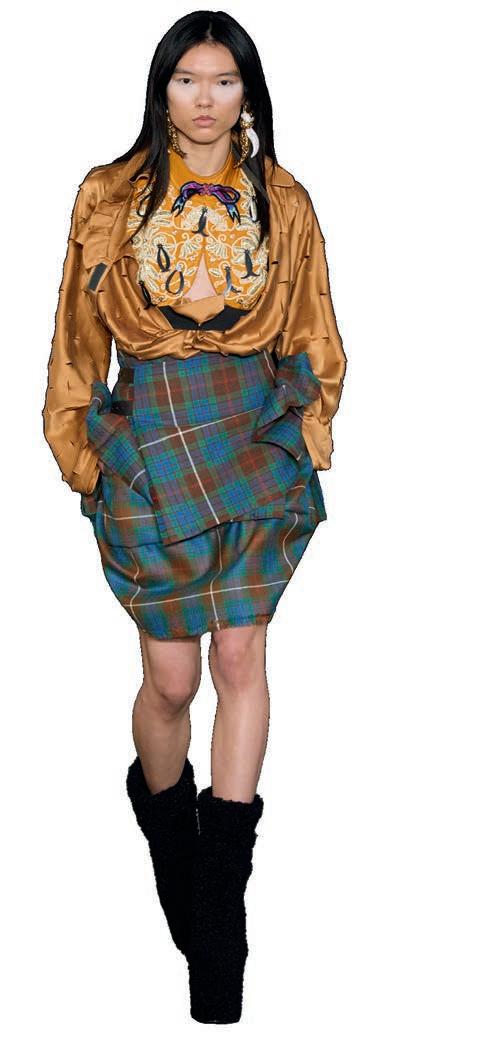

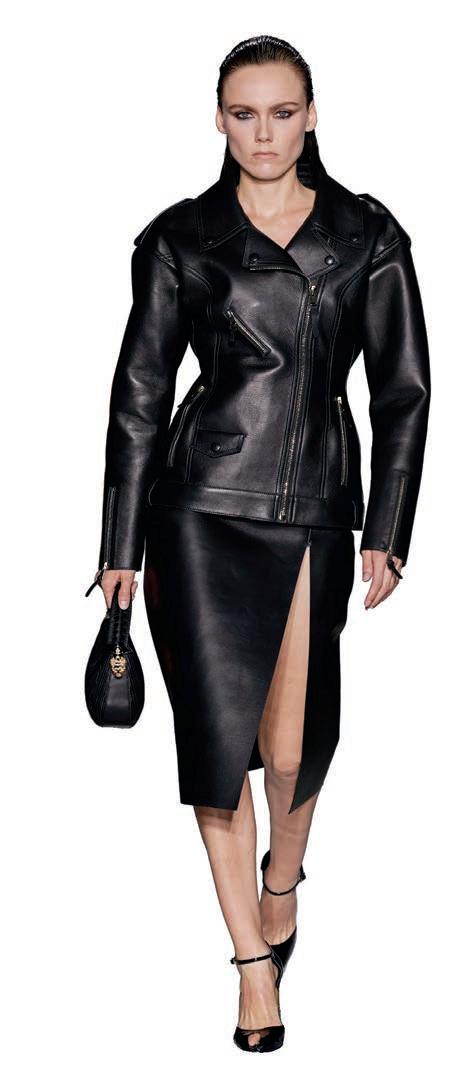
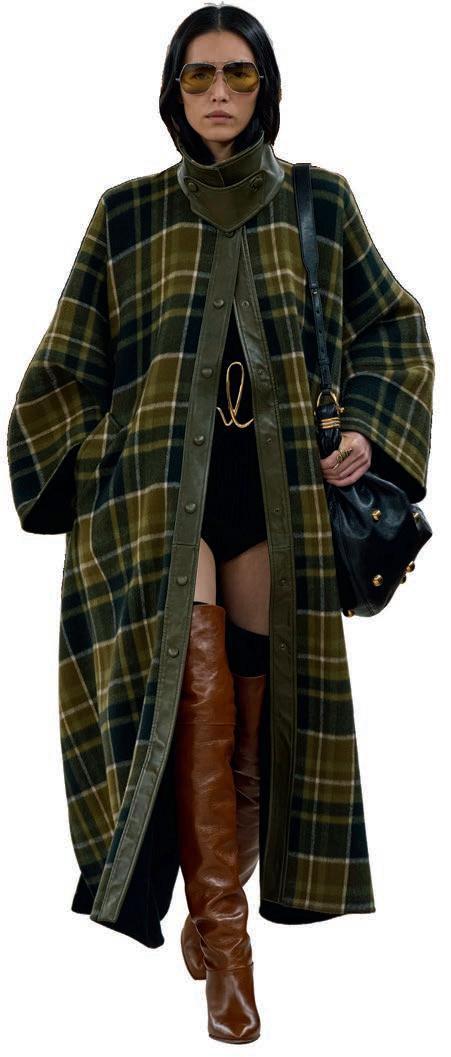



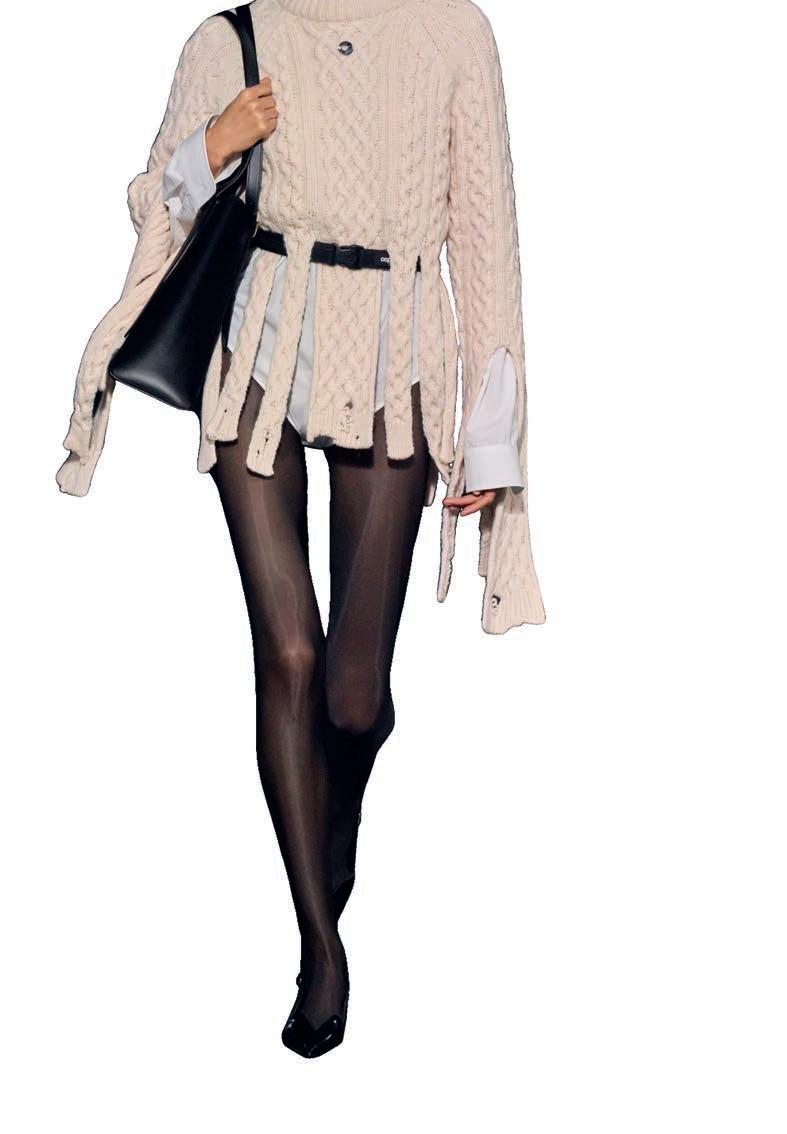
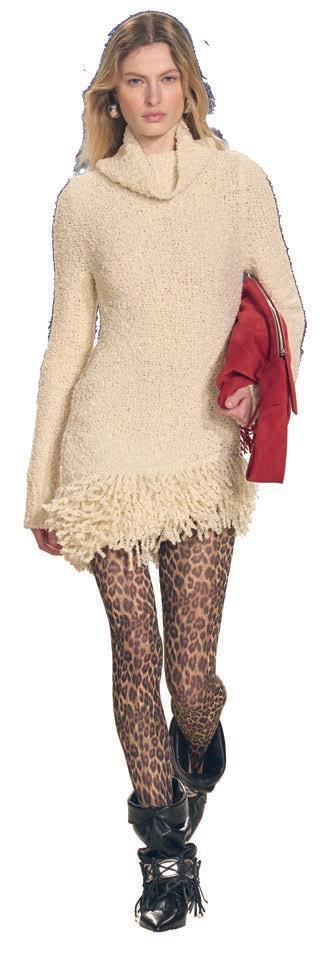
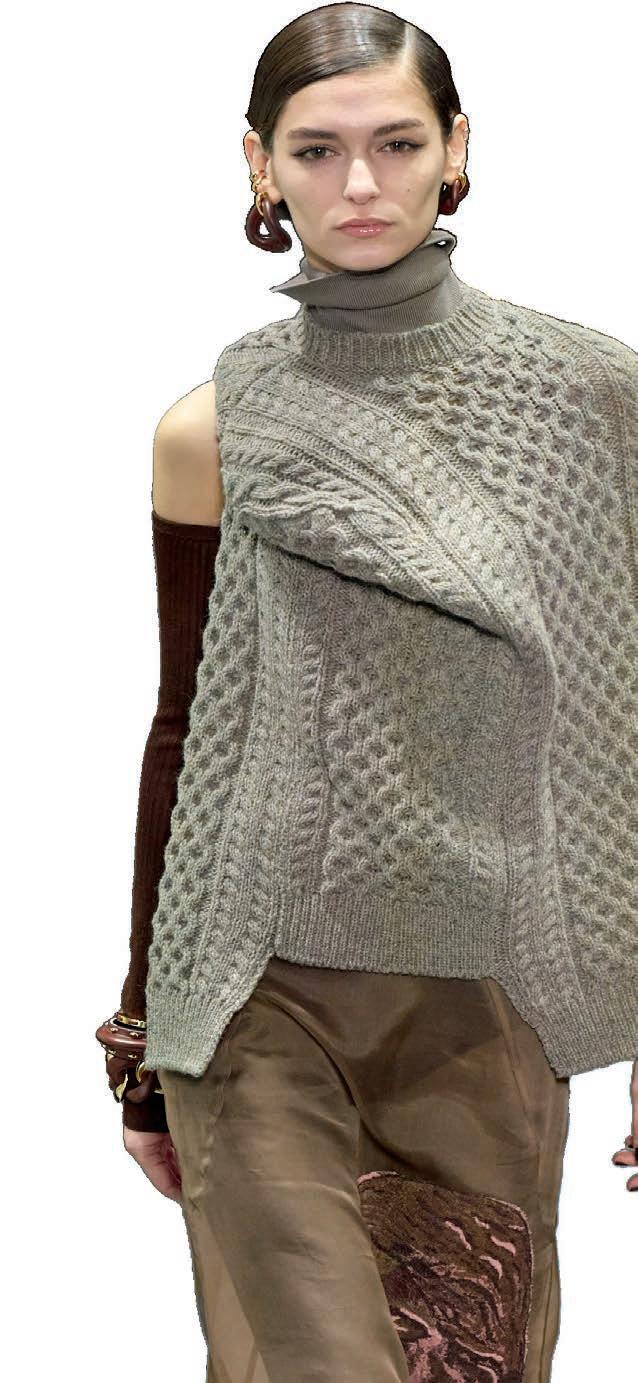





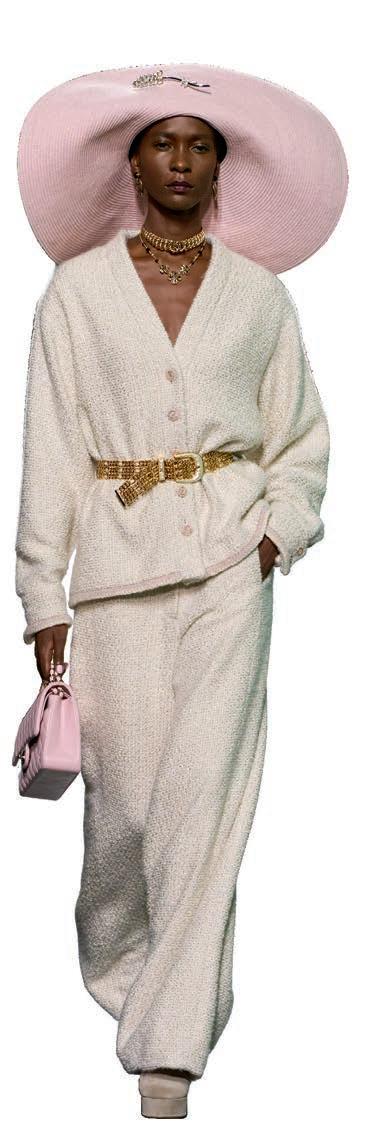
SWEATERS, SCARVES AND SNOODS WERE TAKEN TO NEW WOOLLEN HEIGHTS WITH OVERBLOWN PROPORTIONS, JUMBO SILHOUETTES AND SUPERSIZED KNITS, KEEPING MODELS SNUG ON THE RUNWAYS AT ALEXANDER MCQUEEN, J.W.ANDERSON AND STELLA MCCARTNEY.
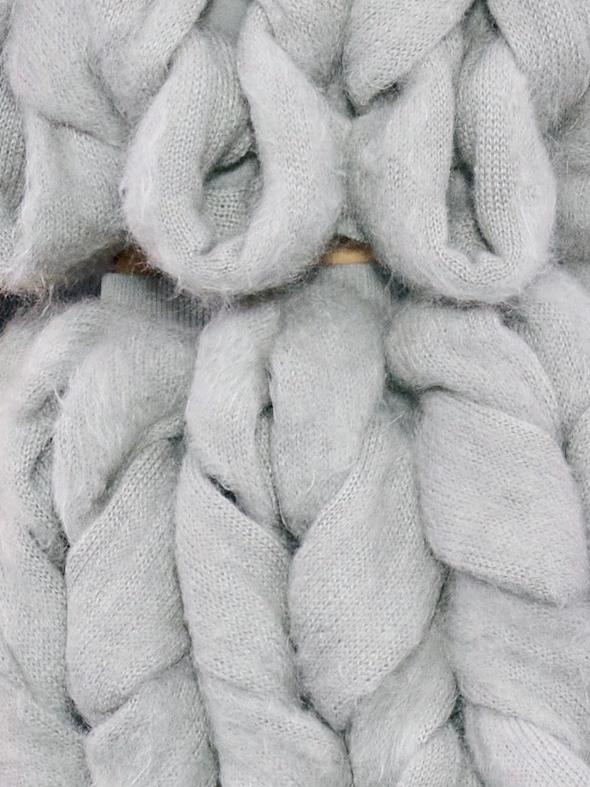

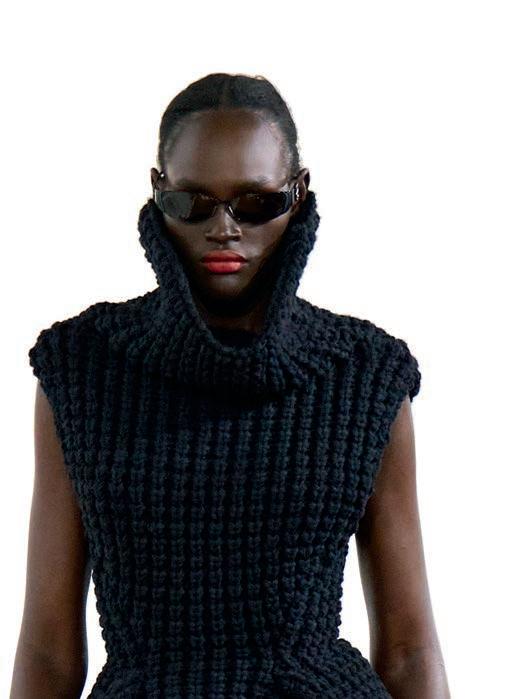
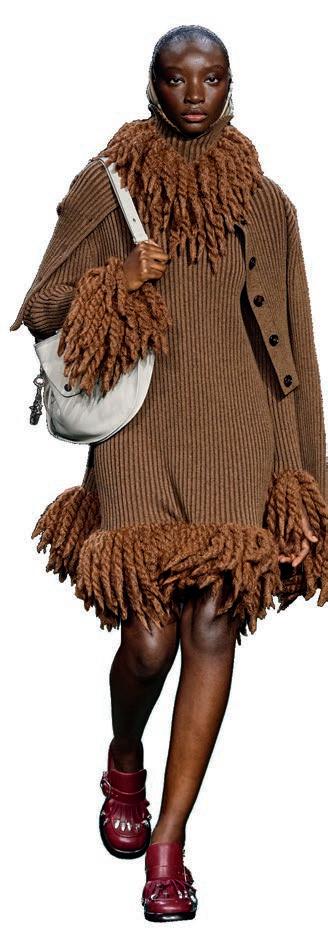








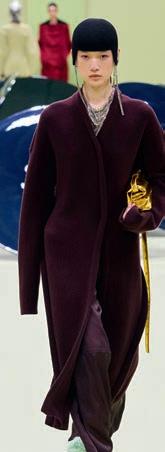
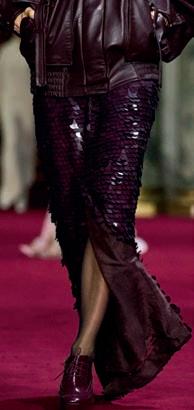
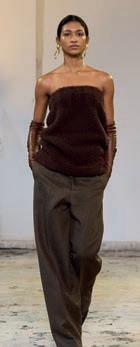
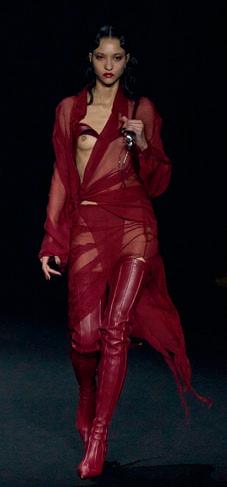
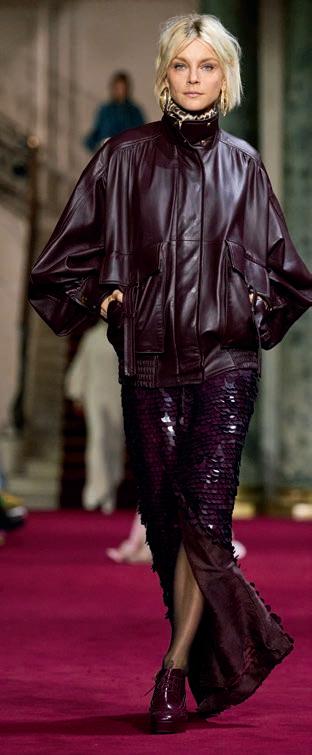
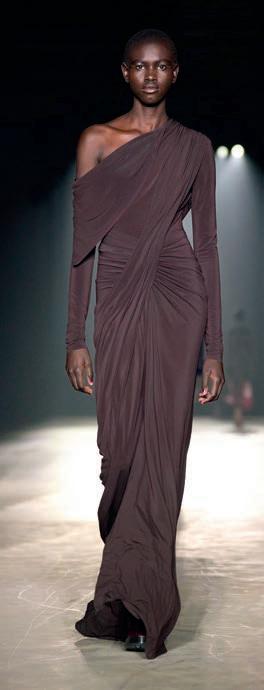




SUMMER’S HERMÈS-INDUCED BURGUNDY PALETTE HAS MORPHED INTO SUMPTUOUS TONES OF BERRY, COFFEE AND CHESTNUT FOR A SLIGHTLY DARKER AND MORE DECADENT VERSION OF THIS RICH-HUED COLOUR TREND, AS SEEN AT LOEWE, FERRAGAMO AND ERDEM.
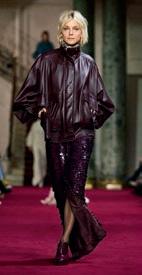




CHLOÉ’S CAPE MEETS WAXED JACKET WITH A GOLD NECKLACE WORN ON TOP MAKES A COMPELLING CASE FOR DAYWEAR DRAMA. VARIATIONS ON THE FLUTTERING SUPERHERO STYLE WERE ALSO SEEN ON THE TOD’S, SACAI, CAROLINA HERRERA AND DIOR RUNWAYS.



A SHARPLY TAILORED SUIT (EXTRA POINTS FOR SHOULDER PADS) COMMANDS RESPECT.
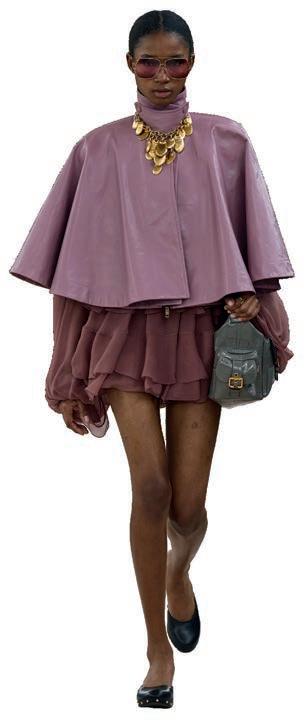
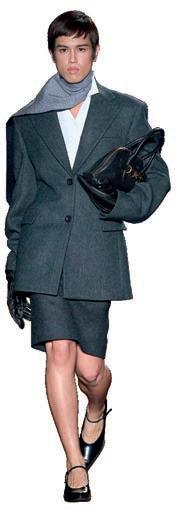
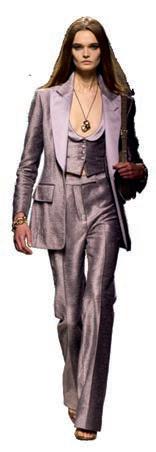


THE NAKED DRESS ISN’T GOING ANYWHERE THIS FALL—MORE THAN 30 LOOKS IN ANTHONY VACCARELLO’S SENSUAL SAINT LAURENT SHOW FREED THE NIPPLE. BUT IF YOU’RE NOT READY TO BARE IT ALL JUST YET, OPT FOR MATCHING UNDERWEAR BENEATH WINTER’S TISSUE-FINE TRANSPARENT DRESSES, AS SHOWN AT NINA RICCI, GUCCI AND TOM FORD.

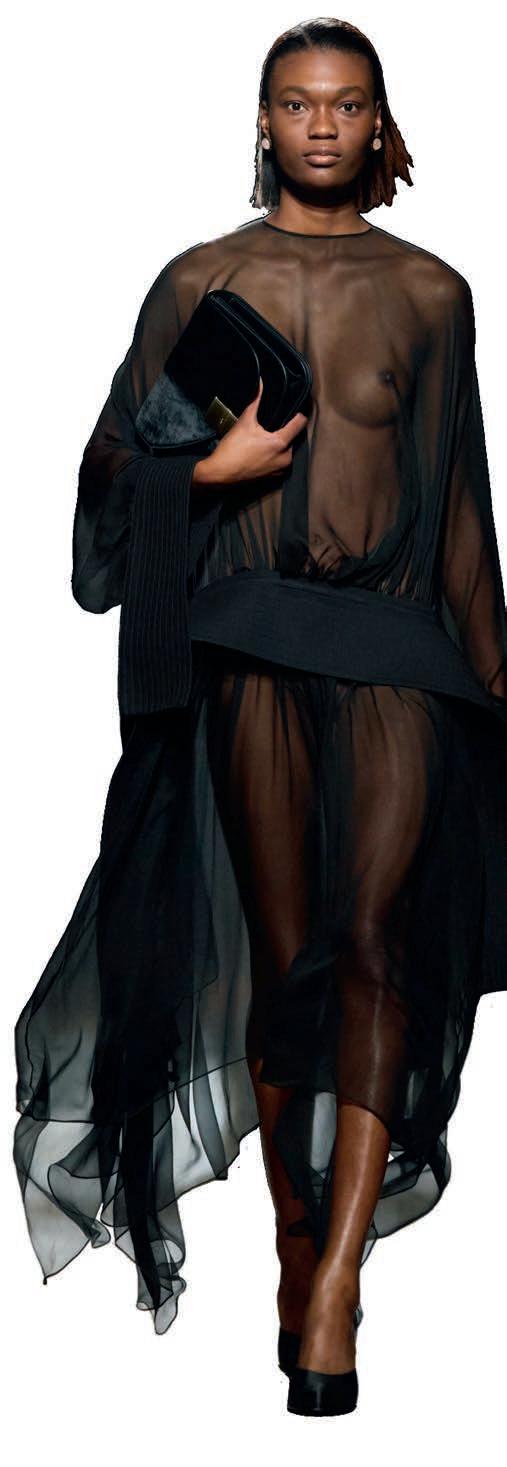
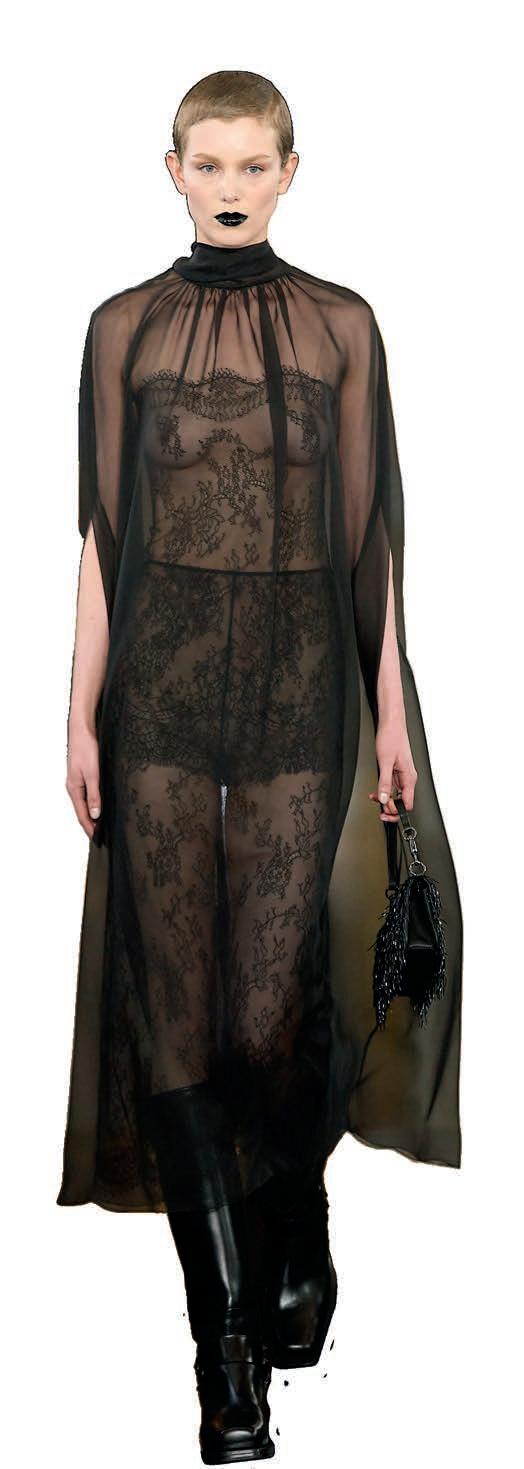




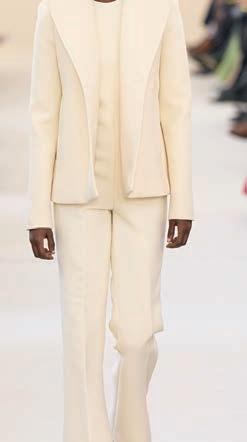







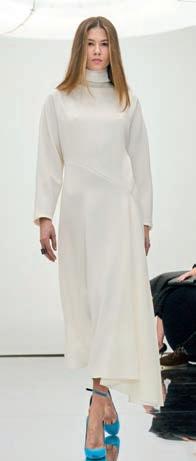
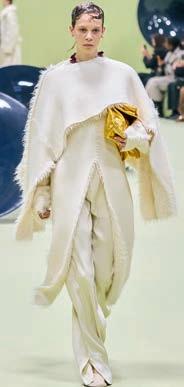

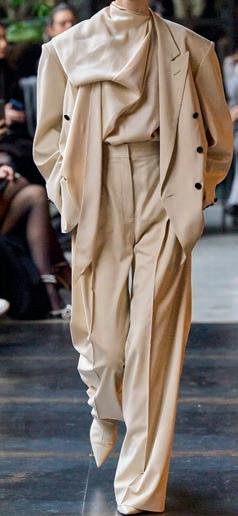



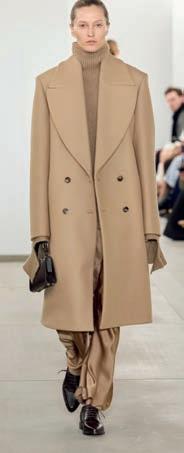


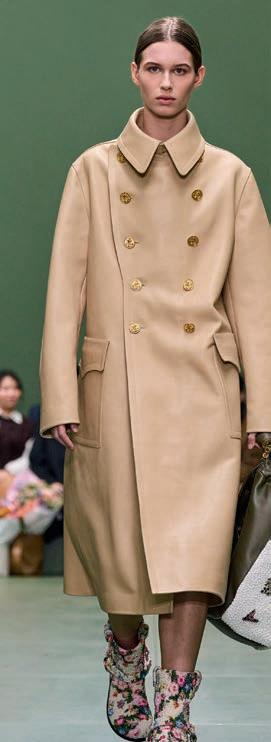
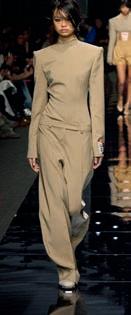
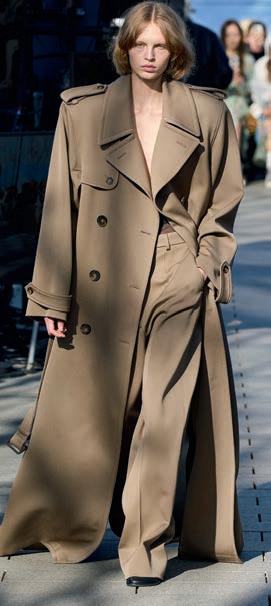

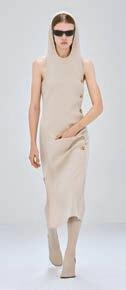
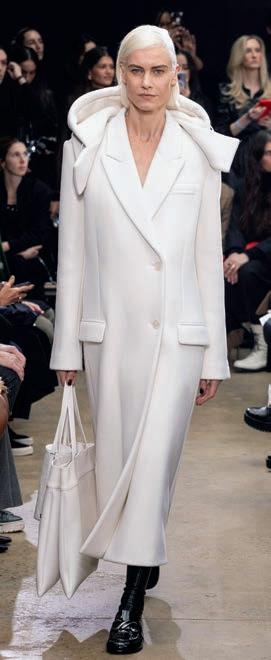
DESIGNERS EMBRACED THIS YEAR’S COOLER SEASONS WITH A SOFTER STATE OF MIND, WHICH WAS REFLECTED IN A PALETTE OF GENTLE NEUTRALS THAT RANGED FROM WHIPPED CREAM AT BOTTEGA VENETA TO BEIGEY BLUSH AT VICTORIA BECKHAM TO DOVE GREY AT JIL SANDER.
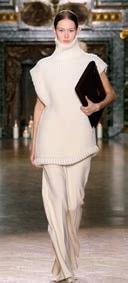
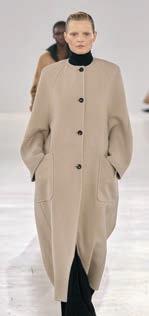
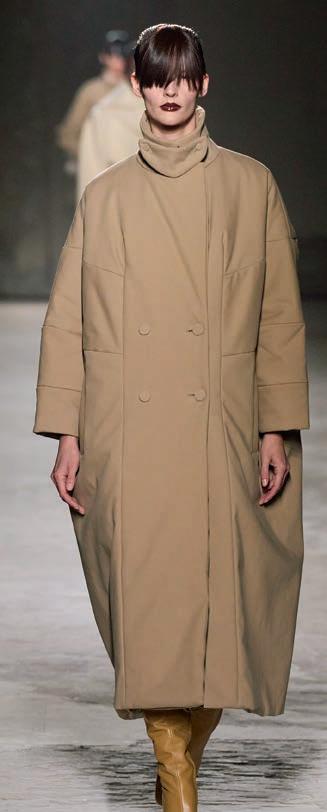
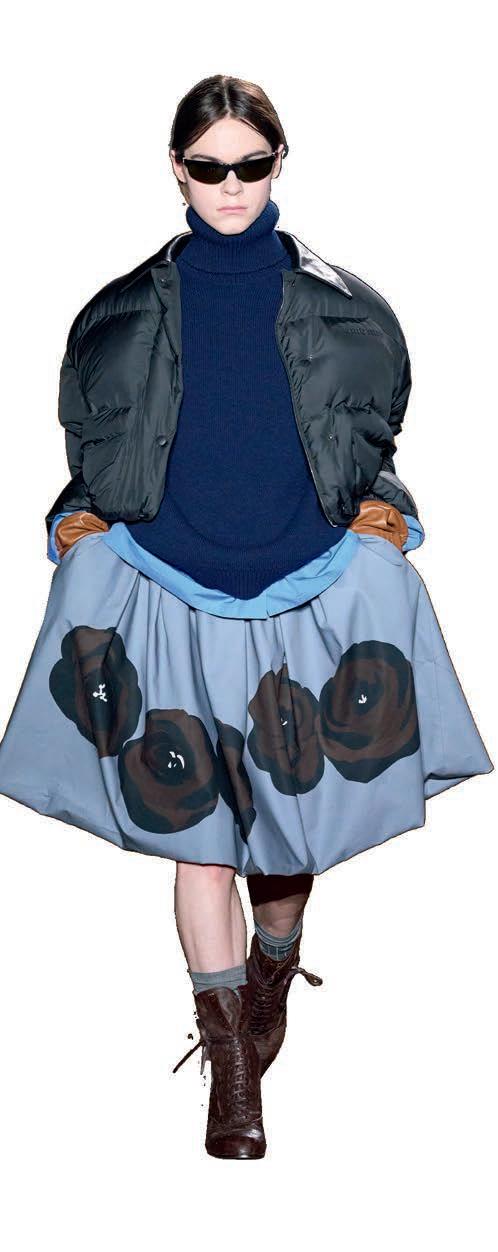
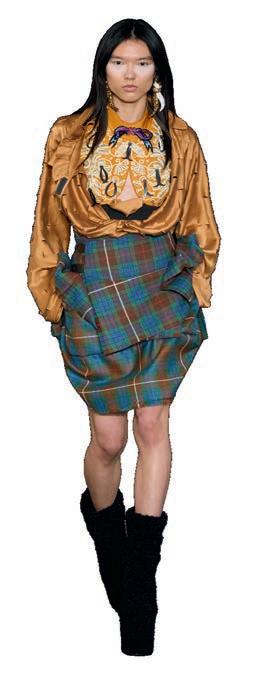
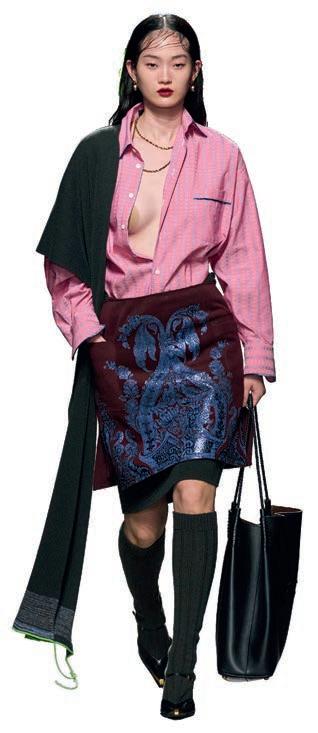
A BIT OF THIS AT MIU MIU, A BIT OF THAT AT ETRO AND MORE IS MORE AT RABANNE: DESIGNERS EMBRACED SARTORIAL MIXED MESSAGES AND DRESSED MODELS ACCORDING TO INSTINCT, NOT RULES. THINK SNAZZY TIGHTS AND CLOMPY SHOES, BUSINESS-AS-USUAL BLAZERS WITH READYTO-PARTY SLEEVES AND ECLECTIC SKIRTS IN HEAD-TURNING SHAPES.


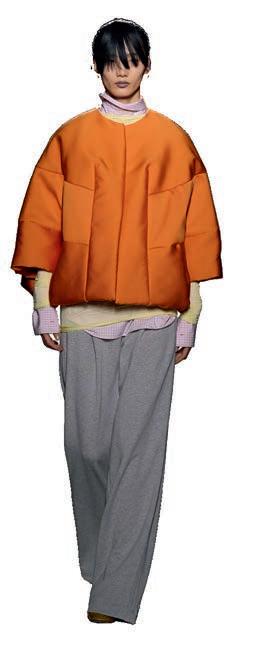

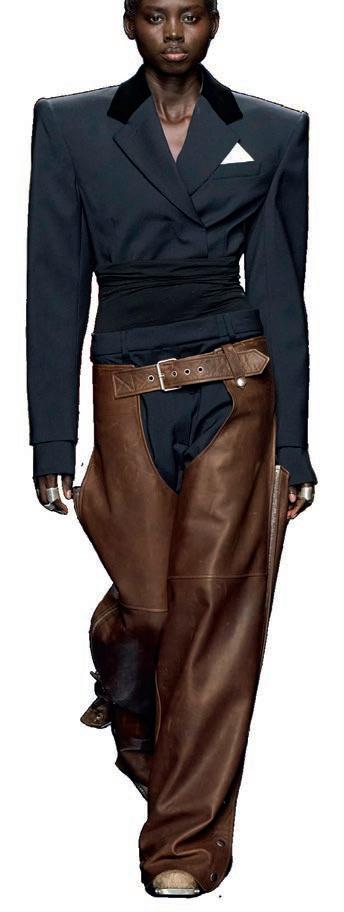

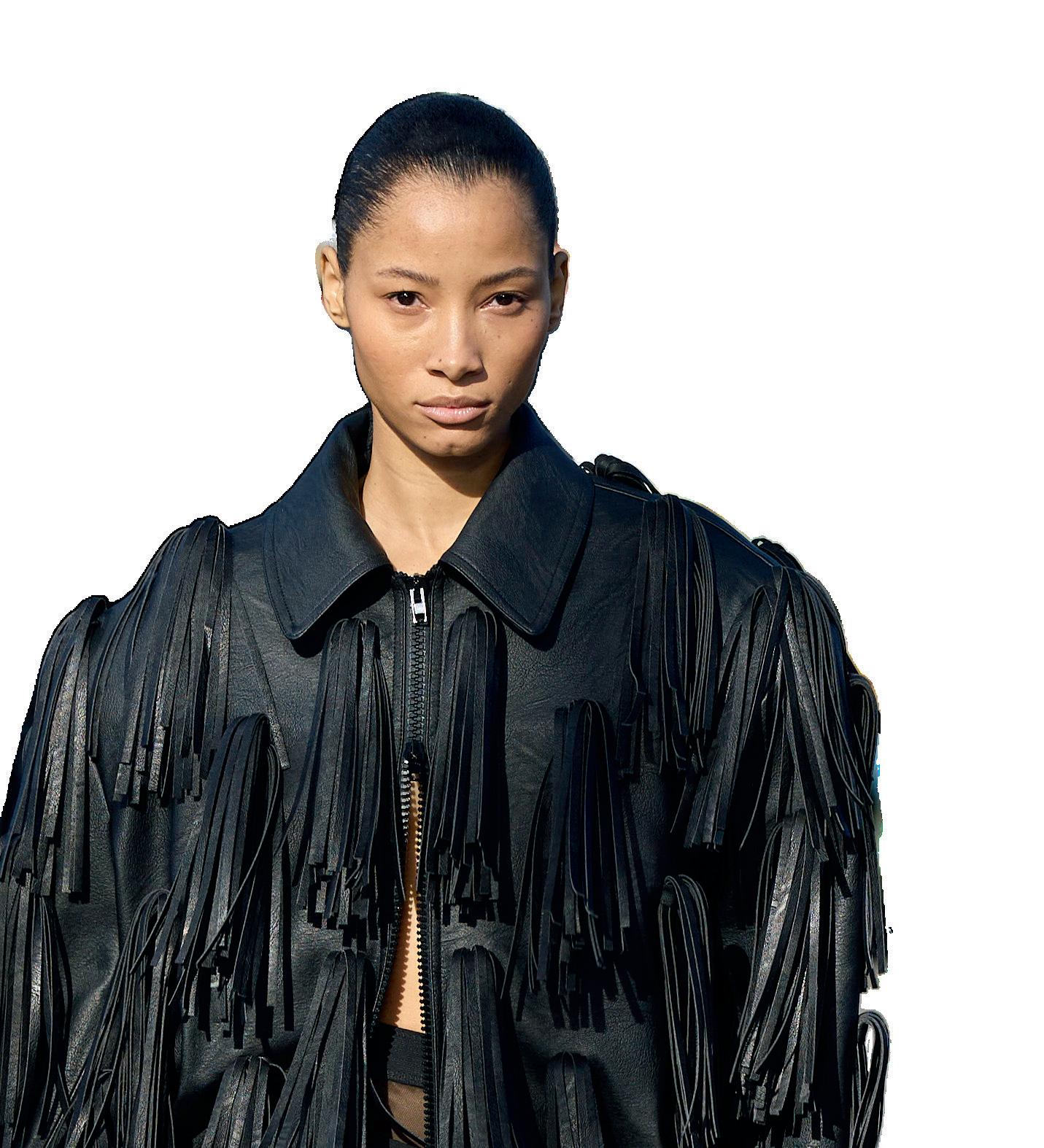





CALL IT THE COWBOY CARTER EFFECT:
IT’S TIME TO SADDLE UP AND EMBRACE YOUR RODEO ERA. TAKE INSPO FROM BLANKET PONCHOS AT LEONARD, WESTERN BOOTS AT VERSACE AND EVEN CHAPS (YES, REALLY!) AT STELLA MCCARTNEY. A FRINGED AND/OR STUDDED JACKET IS YOUR EASIEST ENTRY POINT.
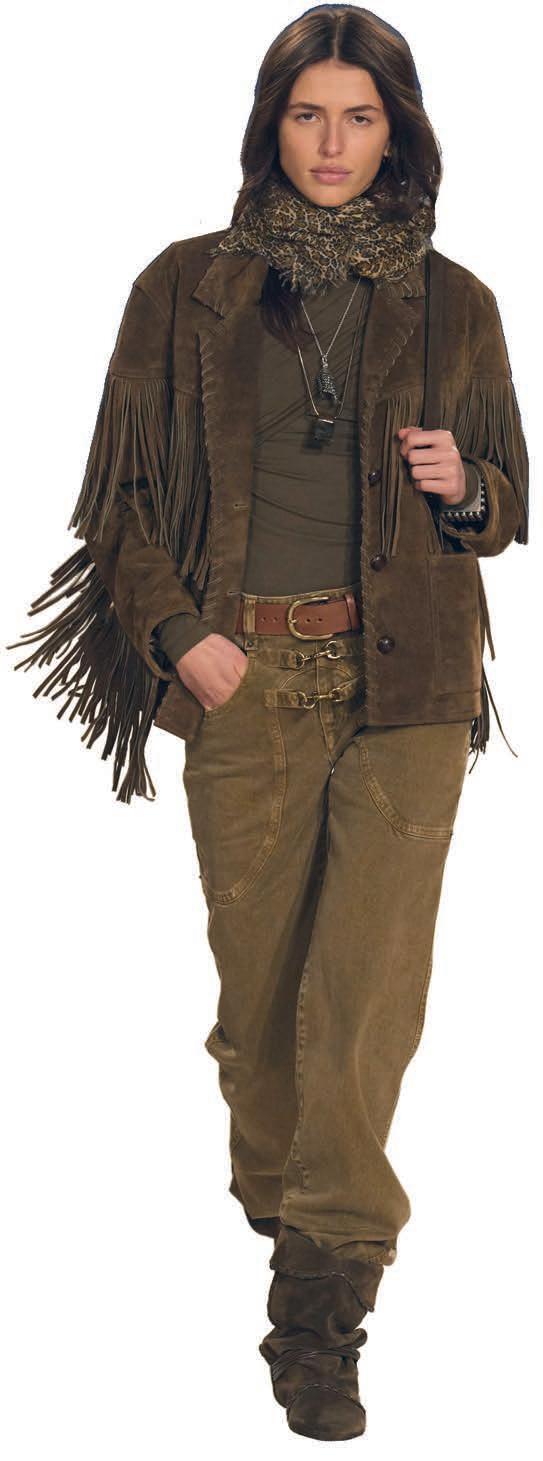
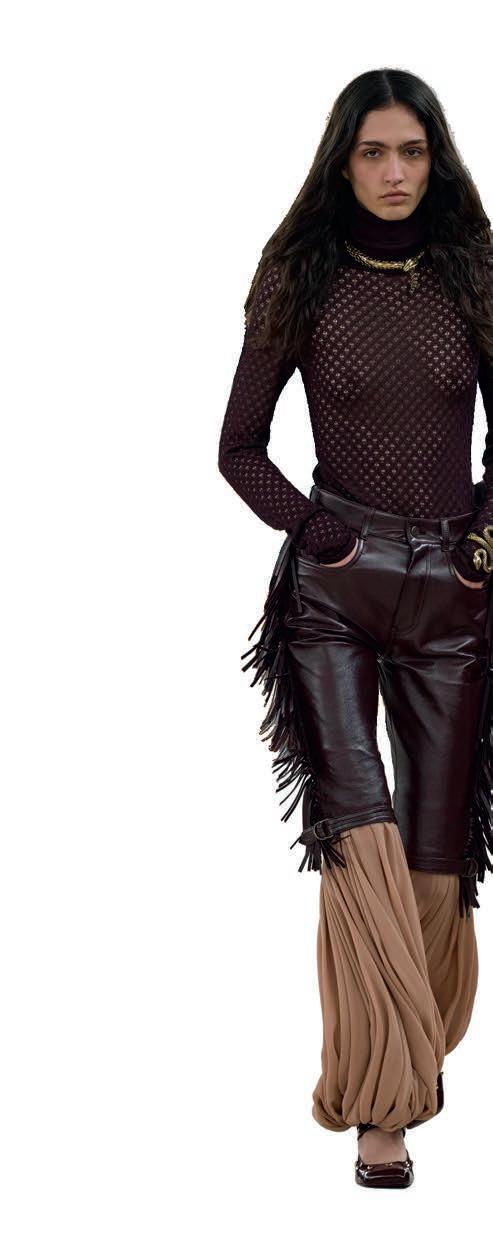

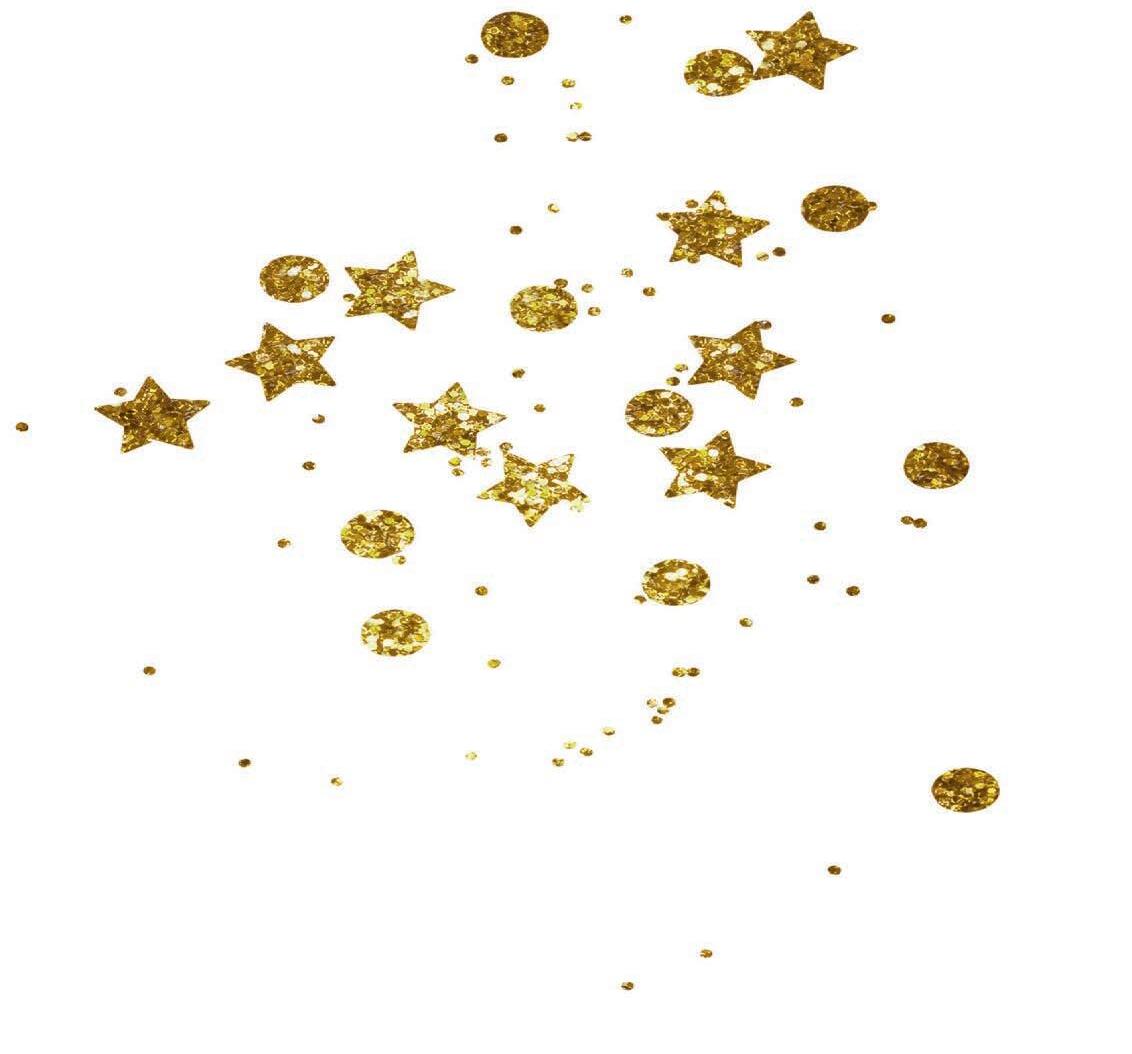
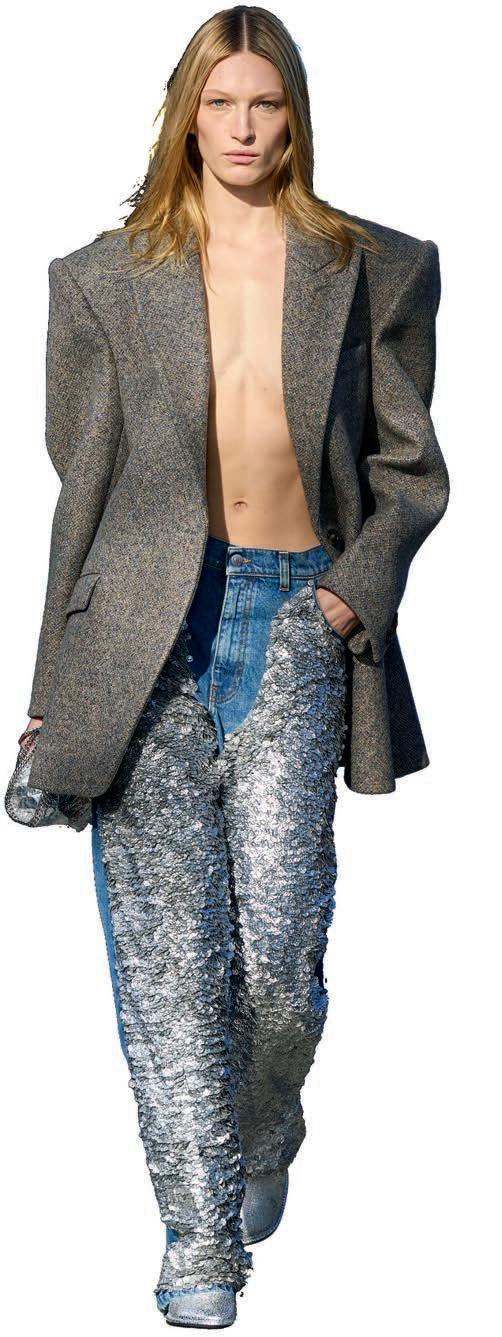


FROM DAZZLING DENIM AT STELLA MCCARTNEY TO JAZZY DRESSES AT DIOR AND CRYSTAL-SMATTERED GUCCI SETS, IT’S TIME TO TAKE A MORE-IS-MORE APPROACH TO EMBELLISHMENT DRESSING.

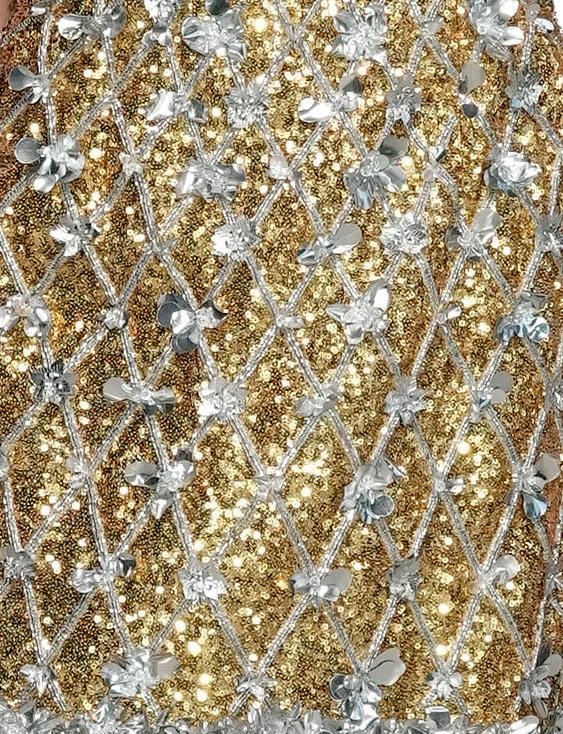

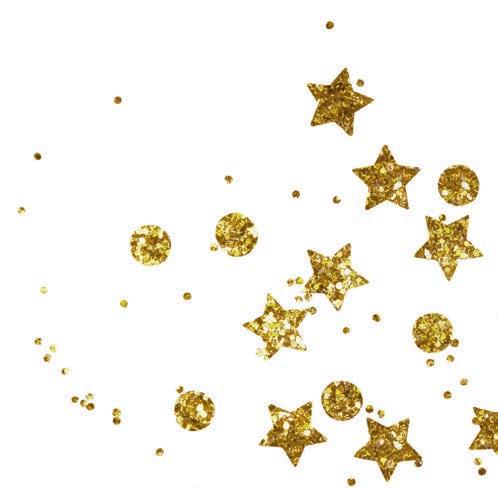

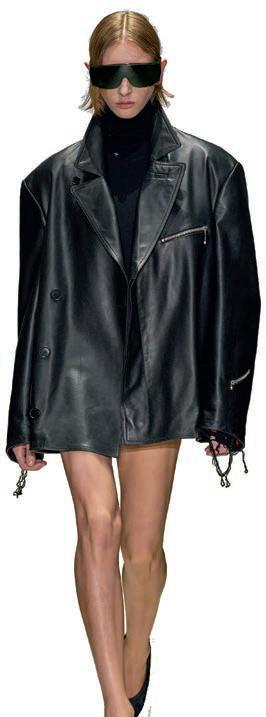
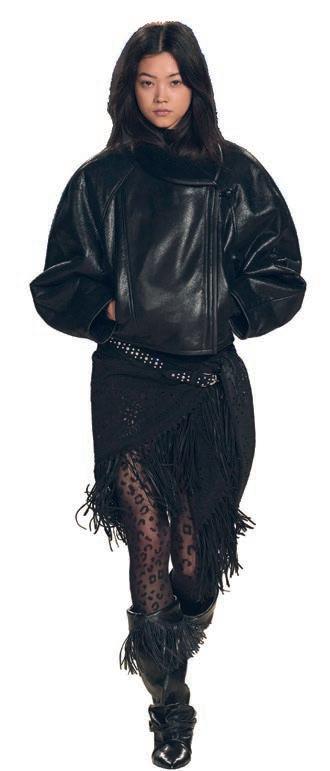
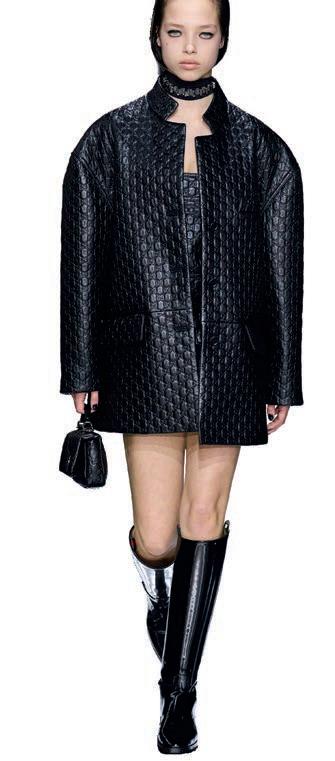


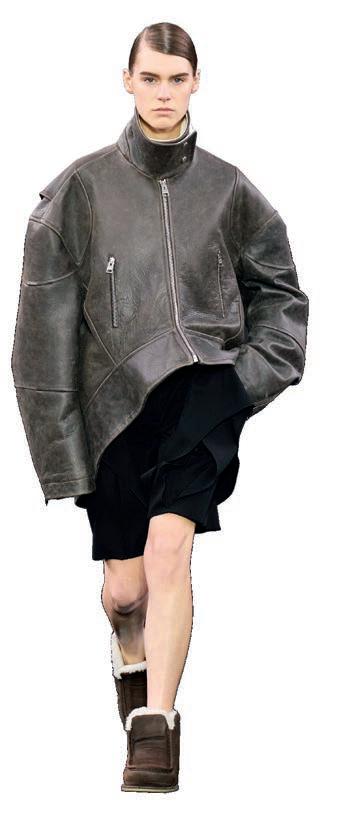
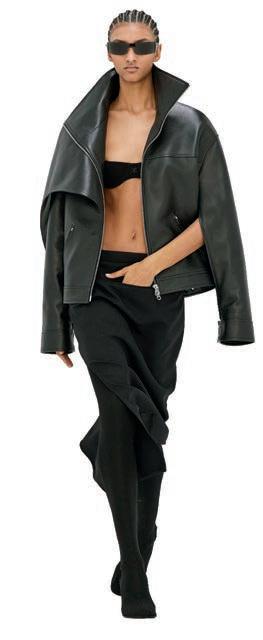
KICK IT INTO HIGH GEAR THIS FALL WITH SLICK PETROL-BLACK LEATHERS AND DARK MOODY DENIMS. HOW TO WEAR THE MODERN BIKER JACKET? OPT FOR ONE THAT’S GENTLY OVERSIZED AND PAIR IT WITH ELEGANT SEPARATES FOR A DOSE OF REBELLION MEETS REFINEMENT. WE’RE CURRENTLY COVETING VERSIONS AT KHAITE, COPERNI AND COURRÈGES THAT WILL IMPART AN ELEVATED COOL FACTOR.


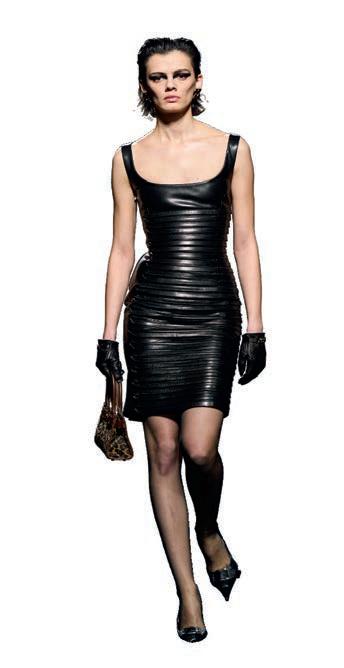

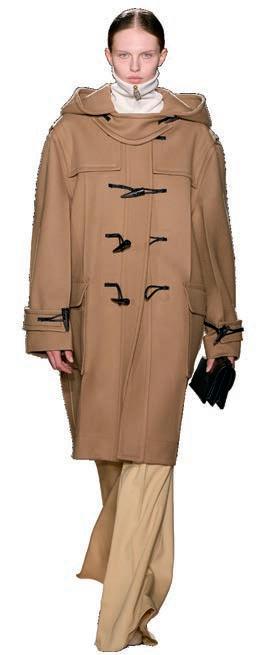




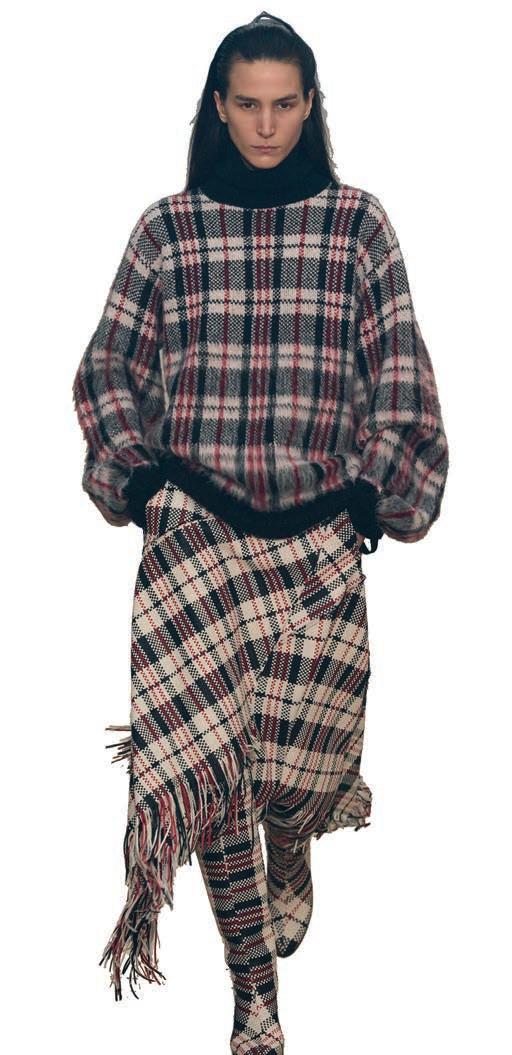
HEADING INTO THE GREAT OUTDOORS HAS NEVER LOOKED SO STYLISH, THANKS TO HELMUT LANG’S PLAID ON PLAID ON PLAID, CHLOÉ’S PICNIC-BLANKET CHECKS AND FENDI’S TONES OF WALNUT, KHAKI AND WELLINGTON-BOOT GREEN.
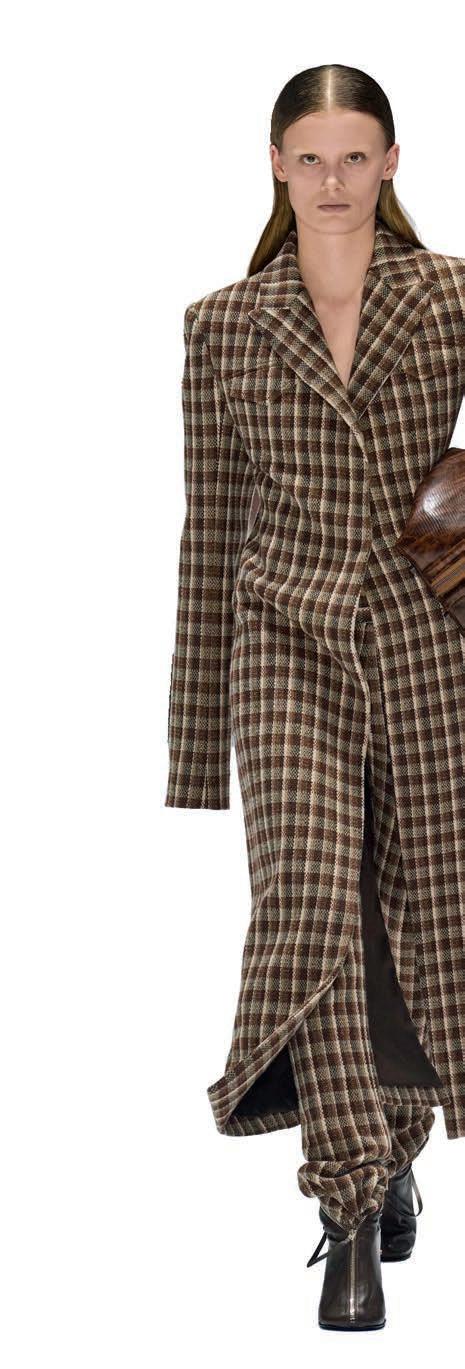


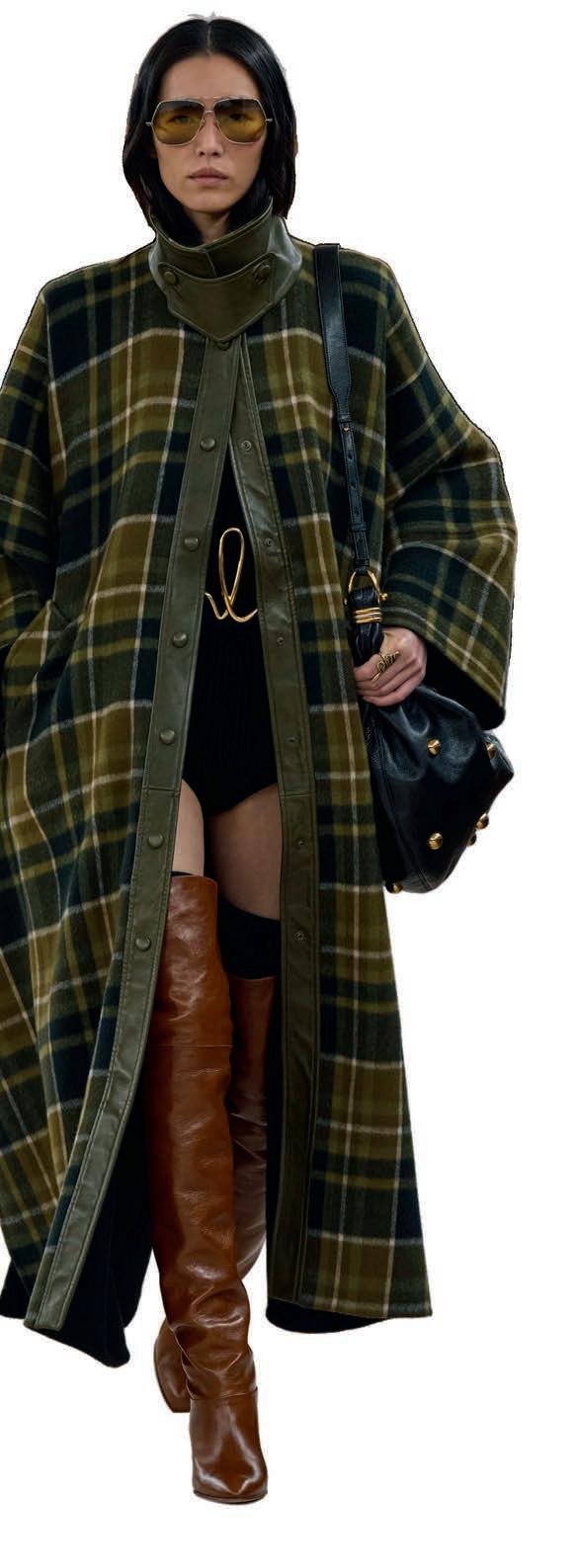

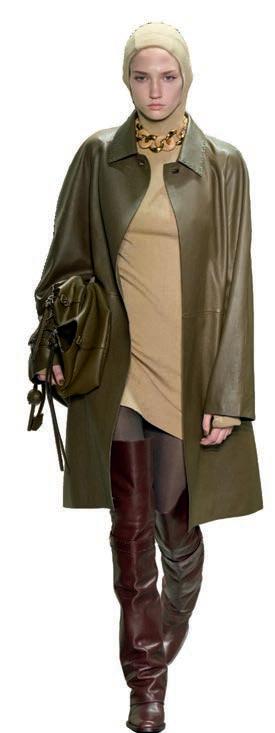
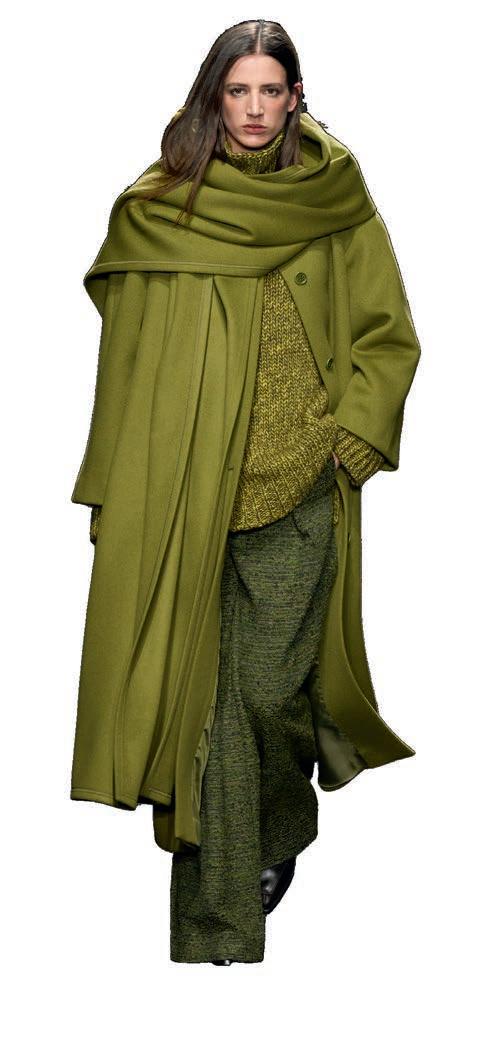
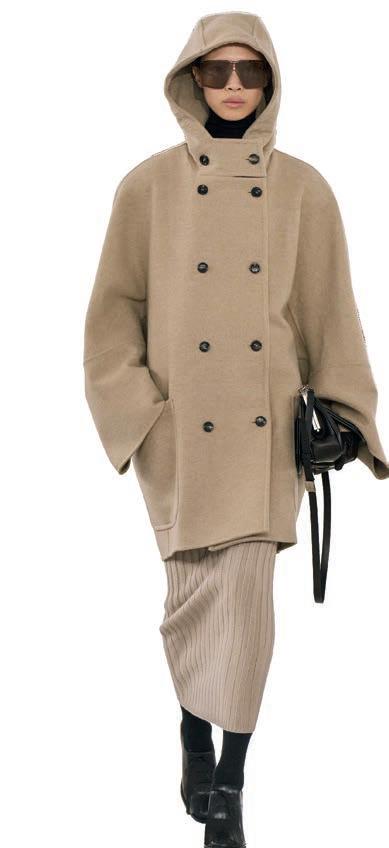
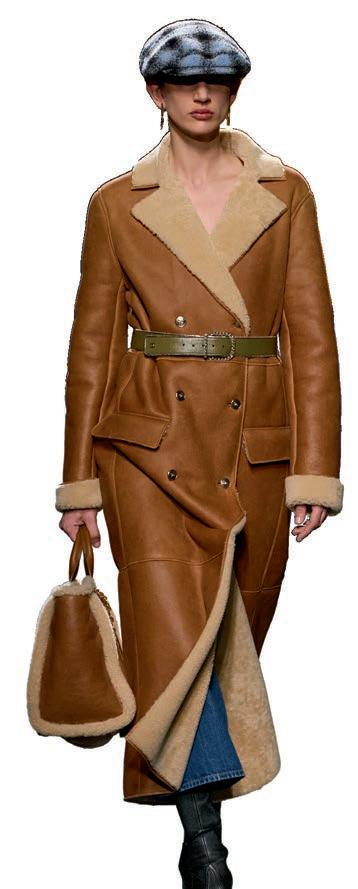



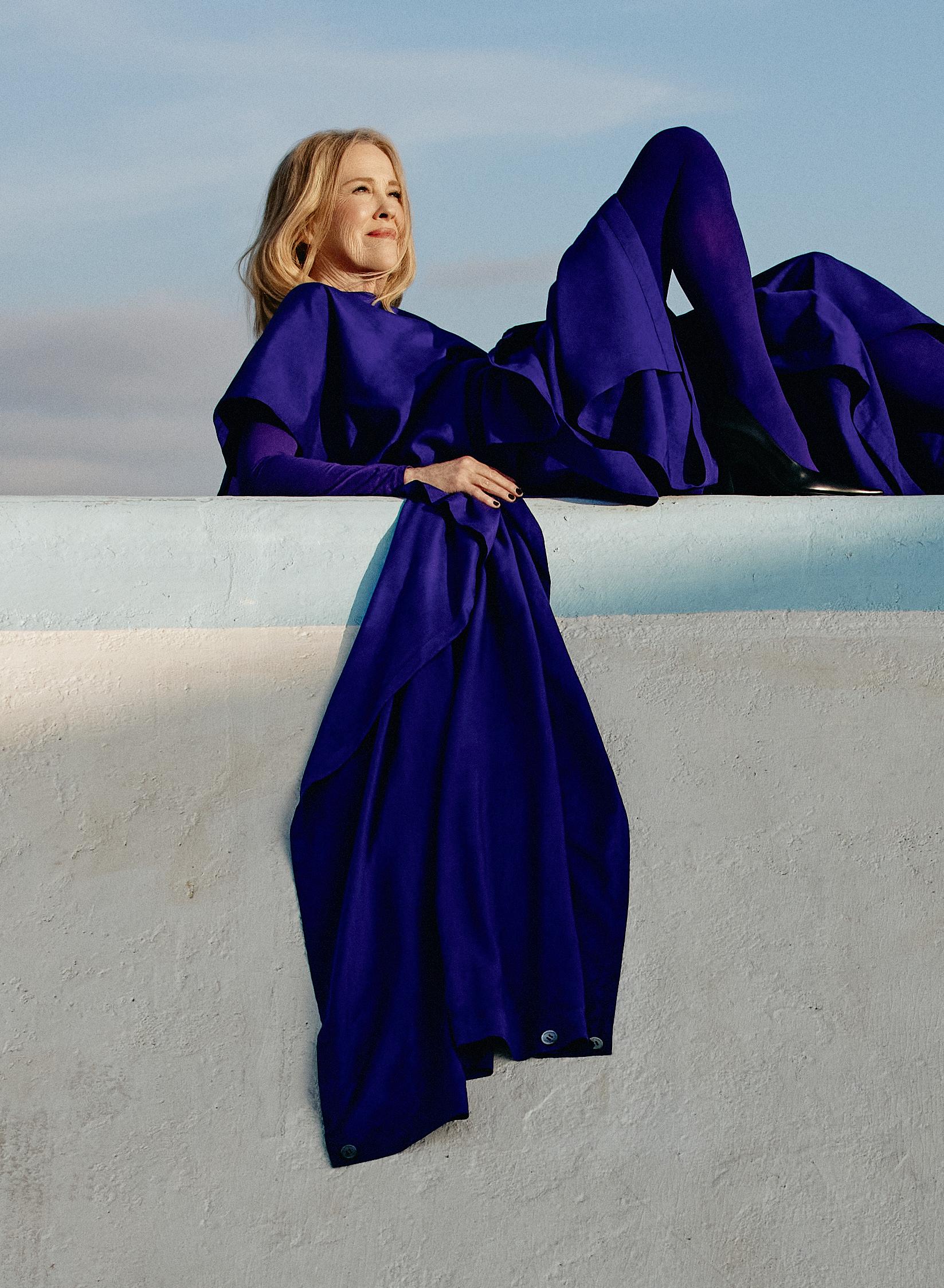
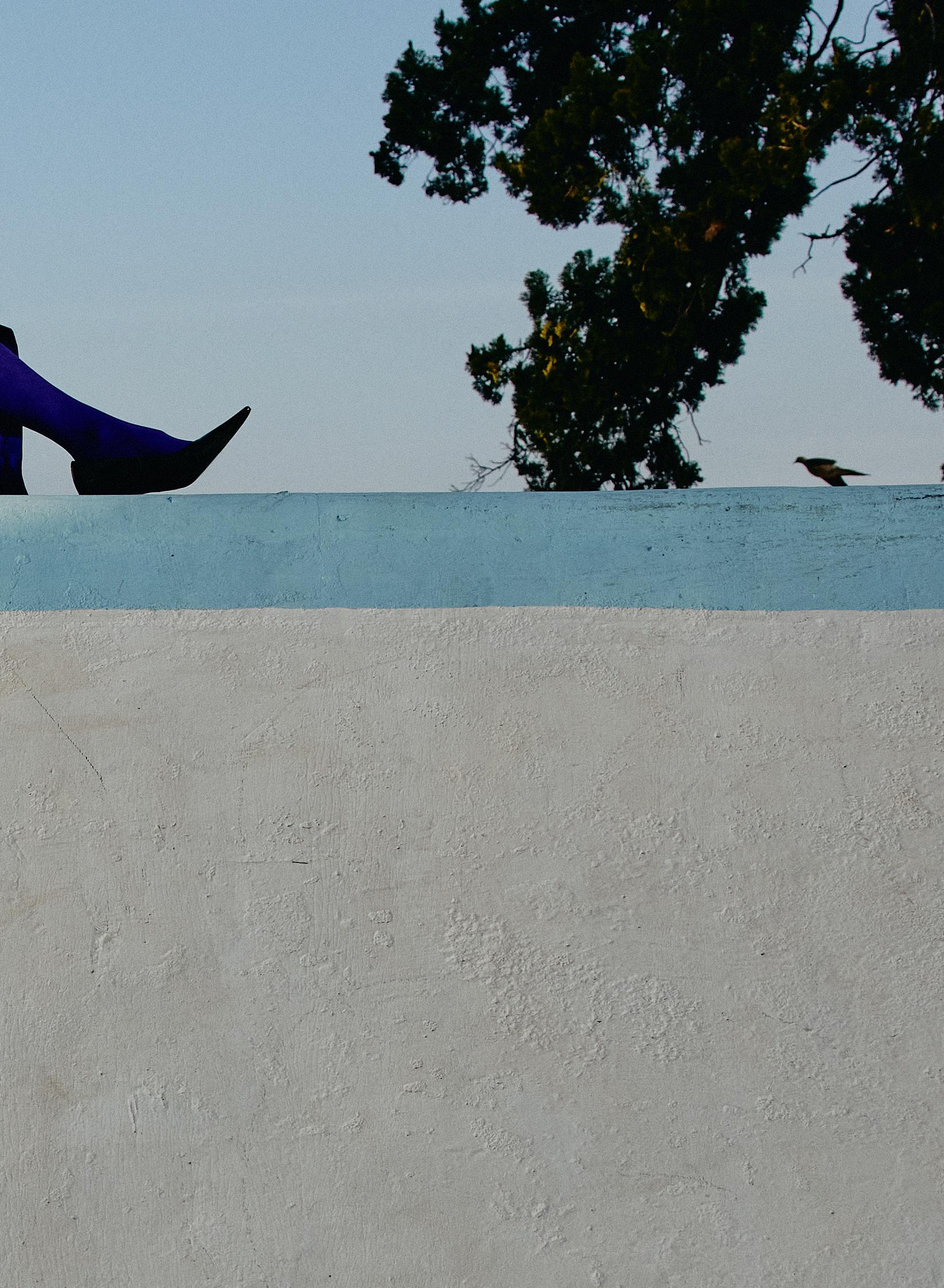
The legendary Canadian actor continues to delight in unexpected ways.
By JOANNA FOX

THE ABSOLUTE LAST THING Catherine O’Hara wants to talk about is Catherine O’Hara. We’re five minutes into our conversation, and so far, we’ve chatted about getting stuck in places and making do with what one has on hand. After O’Hara tells me that she recently used a fork as a comb (“It was so stupid,” she says, laughing), I gently try to steer her back toward the topic at hand. “Do I have to?” she asks. It’s early summer, and O’Hara, dressed stylishly in a crisp white shirt and thick-square-rimmed black glasses, is speaking to me via a video call from her cottage in Muskoka, Ont., a couple of hours north of Toronto. The award-winning actor—who delighted audiences in her critically acclaimed role as Moira Rose in Schitt’s Creek —has been juggling a packed schedule. She’s taking a break from filming Seth Rogen and Evan Goldberg’s upcoming Apple TV+ series, The Studio, in Los Angeles (where she lives) and gearing up to promote the highly anticipated Beetlejuice sequel, Beetlejuice Beetlejuice (out September 6), in which she reprises her role of Delia Deetz, struggling artist and stepmother to Winona Ryder’s Lydia. When O’Hara, now 70 years old, was cast in the beloved 1988 Tim Burton film about a raunchy, mischievous spirit (played by Michael Keaton), she had no idea how the weird and wacky story would land. “You never know how something’s going to be received,” she says. “I mean, that’s the magic. That’s the scariest thing. But if you’re lucky enough to work with people who make each day exciting, creative and stimulating, that’s the best, because you really don’t know where it’s gonna go from there. So much of it is luck and timing.”
Beetlejuice centres around a married couple (played by Geena Davis and Alec Baldwin) who die in a car accident and become ghosts trapped in their former home. When the Deetz family moves in, the couple try to scare them away, but their presence only piques the eccentric family’s interest. With no more options, the ghosts turn to Beetlejuice for help, and chaos ensues. The movie, which was a critical and commercial success, helped catapult the careers of O’Hara—who was already well known for her role in Canadian comedy series Second City Television—and her co-stars, and it was also how she met her husband and the father of her two sons, production designer Bo Welch. (O’Hara tells me she coaxed Burton to convince Welch to ask her on a date. “I actually wrote in a diary, ‘We’re supposed to get married someday, so I wish he would ask me out,’” she says with a smile.)
Thirty-six years later, the sequel, which Burton sees as a continuation of Lydia’s story, has three generations of Deetz women reuniting at the haunted home after a family tragedy. Delia and Lydia have put aside their differences from the first film, but now Lydia is dealing with similar relationship issues with her own rebellious daughter, Astrid (played by Jenna Ortega), who doesn’t realize how dangerous Beetlejuice is until it’s too late.
“Just to see Michael [Keaton] as Beetlejuice [again]—he hasn’t aged at all,” says O’Hara. “He has mould all over his face, but he’s so alive playing a dead guy. He just attacks this character with joy. It’s really funny because he doesn’t realize that when you’re speaking with him [on-set], it’s like Beetlejuice in your face, talking about [regular] life.” There is also something repulsively attractive about Keaton’s Beetlejuice, and when I mention this, O’Hara immediately agrees. “Thank you!” she exclaims. “On paper he’s just a despicable demonic character, but not with Michael doing him. He’s kind of hot.”
You never know how something’s going to be received. I mean, that’s the magic. That’s the scariest thing.




O’Hara’s sense of joy and infectious humour came naturally to her while she was growing up in Toronto in a big Irish Catholic family with six other siblings. Her father, who worked for the Canadian Pacific Railway, was a real joker, while her mother loved to do impressions. Being funny and laughing were part of normal family life, with everyone playing off each other. When her older brother, Marcus, brought home a new girlfriend, Gilda Radner (an original Saturday Night Live cast member), a teenaged O’Hara was immediately smitten. “She was like a beautiful rag doll with her long limbs and big, wild hair,” she says. “She would come home [with my brother] and improvise with our family, teaching games to my mom and dad. She was so in touch with the child within—more than anyone I’ve ever known—but such a beautiful, sexy woman at the same time.”
Radner introduced O’Hara to the world of improv through the Toronto branch of the improv troupe The Second City. There, she met fellow actors Eugene Levy, Martin Short, John Candy, Dan Aykroyd and Andrea Martin, most of whom went on to star in Second City Television (or SCTV ), an iconic Canadian sketch-comedy show that was eventually picked up by NBC in the U.S. “Improv is just so freeing,” she says. “And if you let go, everything feeds you—every person, every character and everything you’ve ever experienced in your life. I just love to be surrounded by really talented people and feed off of them.”
After Beetlejuice, O’Hara’s career continued to flourish internationally into the ’90s as she went on to star in beloved holiday films Home Alone and Home Alone 2: Lost in New York. Soon, she (along with former SCTV co-star Levy) began working with acclaimed director and writer Christopher Guest on the hilarious mockumentary-style comedies Waiting for Guffman, Best in Show, A Mighty Wind and For Your Consideration. “Chris [Guest] and Eugene [Levy] would have these great outlines with great characters written in there but also no dialogue,” says O’Hara. “How Eugene would react or how I would react or what those actors would say or do—none of that was written. So the idea was there, and it was up to everybody to improvise. It was really thrilling—a thrill-seeker’s way to act.”
Throughout her career, O’Hara has always worked extremely well with Levy, something she jokingly credits to the fact that they only “briefly dated” back in their Toronto theatre days and realized quickly that they were better off as friends. “He always says that we [both] take our comedy very seriously,” she explains. “And with him, I always know that if we have a creative disagreement—which is rare—it’s coming from a sincere, respectful place and it’s always for the good of the project. I totally trust him and respect him.” So when Levy and his son, Daniel, approached O’Hara with a TV script, her interest was immediately piqued. “You know how we were just saying that there’s no predicting how something’s going to
“
Improv is just so freeing. And if you let go, everything feeds you— every person, every character and everything you’ve ever experienced in your life. I just love to be surrounded by really talented people and feed off of them.
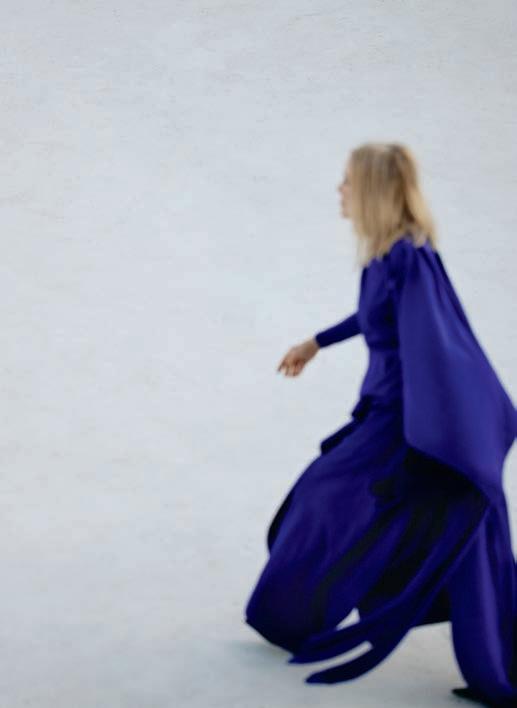


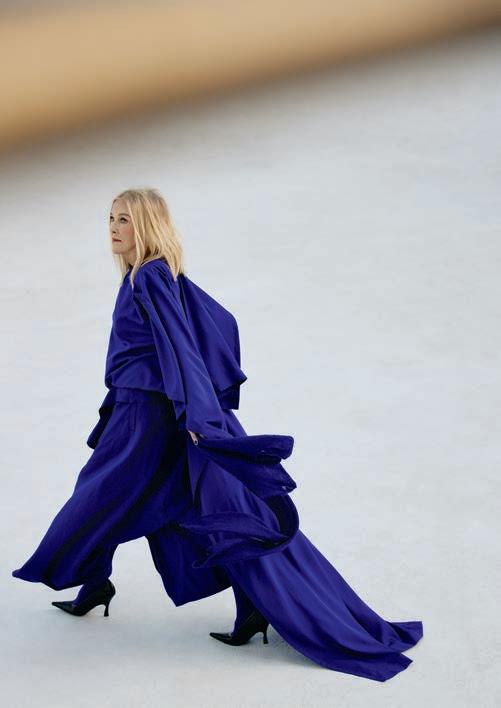
be accepted?” she asks. “Schitt’s Creek is a freaky example of that, because we did this little show for ourselves.”
The CBC riches-to-rags series, which ran from 2015 to 2020 and followed the newly broke and displaced Rose family, made its way from Canada into the world’s living rooms. O’Hara played matriarch Moira Rose, a fashionable former soap star whose elaborate lexicon, endless collection of wigs and outrageous avantgarde style immediately won over viewers and also nabbed her numerous awards, including an Emmy, a Golden Globe and five Canadian Screen Awards. “Catherine was a bona fide star long before we started Schitt’s Creek, but what she did with the character of Moira Rose was an absolute artistic coup de grâce and seemed to remind the world just what an accomplished actress she really is,” said Levy in an email.
It also introduced her to a younger audience, propelling her into different spheres—she’s now a fashion darling, for example, and a Loewe runway-show regular. “It’s all Schitt’s Creek,” she says in disbelief. “Nobody looked at me like I had any relation to fashion at all. It’s because of that character. It’s crazy—it’s so cool.” She’s also been taking on unexpected onscreen roles, filming alongside Pedro Pascal (“He’s so lovely and beautiful and funny—everything you’d want him to be”) for the second season of The Last of Us and playing a former Hollywood studio head who gets fired and replaced by her protege (Seth Rogen) in The Studio, with Kathryn Hahn, Bryan Cranston and too many other guest stars to name.
good person with an acute sense of humour, and that combo is a perfect recipe for a fun working relationship. There are very few people I’ve had a 50-year friendship with, let alone a 50-year working relationship, and those are the people you cherish in your life. Catherine is one of those people.”
With a career spanning almost five decades, O’Hara has solidified her status as a Canadian legend: She became an Officer of the Order of Canada and was inducted into Canada’s Walk of Fame. But she still just considers herself a “big goof” who’s baffled by the fact that she’s made a lasting impact. “I’m lucky [I get] to keep doing things like this at my age—I can’t believe it,” she says. “Over the past few years, when I’ve gotten scared or nervous or if I start grousing about something, I’ve tried to really practise turning it around and being grateful. Like, ‘How lucky are you right now to be alive? And then to have this opportunity right here in this moment?’ [Because] I was nervous during this cover photo shoot [but] how crazy is it that at my age, I’m wearing these clothes and I’m lying over this pool?”
I do think of age, but otherwise, I rarely look in the mirror.
“Evan [Goldberg] and Seth [Rogen] are so smart,” she says. “But they’re open to ideas. It’s just very familiar in that way—working with really good, smart, talented people who are open to collaboration. I’m completely spoiled by my Second City training because it’s all about working together.”
O’Hara is generous in her praise of others but modest about her own work. What makes her so compelling to watch is how she completely embodies her characters and gives them very real dimensions. She’s extremely cerebral when creating them—drawing inspiration from all over the place—and, of course, she is so naturally funny that she knows exactly what will hit and when to land a punchline. Fellow Canadian actor Martin Short, one of O’Hara’s oldest friends, agrees. “When she’s playing a character, she just finds the [most] hilarious, oddest eccentricity,” he tells me over the phone. “She’s very physical, but she also knows what’s hilarious about [the character], and she doesn’t overplay it. She’s like a great chef mixing all the perfect ingredients at the right levels.” Short has known O’Hara since their early comedy days in Toronto, and they still speak every week. “Oh, I adore Catherine,” he says. “She is one of the most loyal, wise human beings I’ve ever known.” Levy feels the same. “Catherine is a brilliant actor who never takes her craft more seriously than the people she is working with,” he said in the email. “She’s a truly
O’Hara considers herself “a freak” because she’s decided to age naturally in an industry where the pressure to look young is immense. “I do think of age, but otherwise, I rarely look in the mirror,” she says. “I feel that now, stories about people my age usually have to do with death and divorce and disease. So I’m really fortunate [to] have people around me who respect aging people and who give me new experiences. I’d like to think that the kind of roles I’m getting to play now are roles that people are getting to play in life. I’m playing a studio head who becomes an independent producer—how beautiful is it that someone my age is doing this? It’s the way it should be.”
At the end of the day, O’Hara sees age as more about how you look at life than how you physically look, and her life is filled with humility and humour. “My husband and I laugh about everything all day long,” she says. “That’s the best. Or if we get into a fight, we’ll actually make fun of each other to break the tension. It really helps. My parents were blessed—they laughed until the end. That’s the best way to live, because there’s so much sadness. You’re really lucky if your sense of humour is encouraged, because I think we’re all born with it, and if it’s encouraged in your life, that’s a gift.”
O’Hara is also pensive about her next chapter. “When [you turn] 70—this is advice [I read] for anybody turning any older age—imagine that you’re going to live a minimum of another 20 years,” she says. “What are you going to do with those years? If you look at it that way, you look at it as a challenge. Like, instead of ‘Oh no, I’m going to downsize’ or ‘I’m going to slow down,’ imagine that you are going to live to 90. What are you going to do?”
It’s clear O’Hara has sat with that idea for a while, because her answer is immediate: “You look forward.”

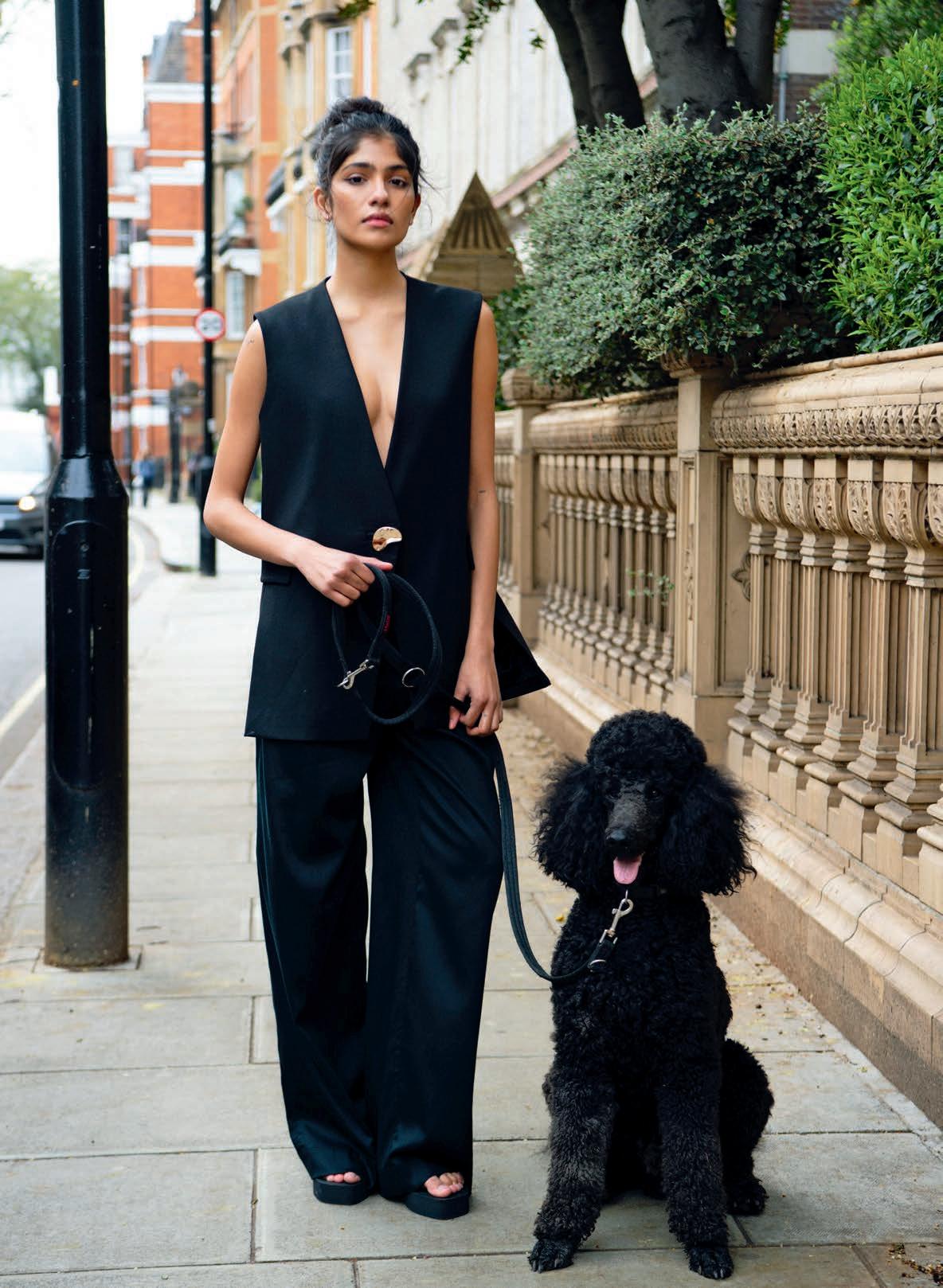
The British capital has always been a city where global trends are born, through everything from vibrant street fashion to edgier subcultures. Inspired by London’s different styles and a mix of seasonal and vintage pieces, these easy-to-wear outfits showcase some of the industry’s most-forward-thinking designers.
PHOTOGRAPHER ANNA STOCKLAND
STYLIST MARTHE DAHLGREN

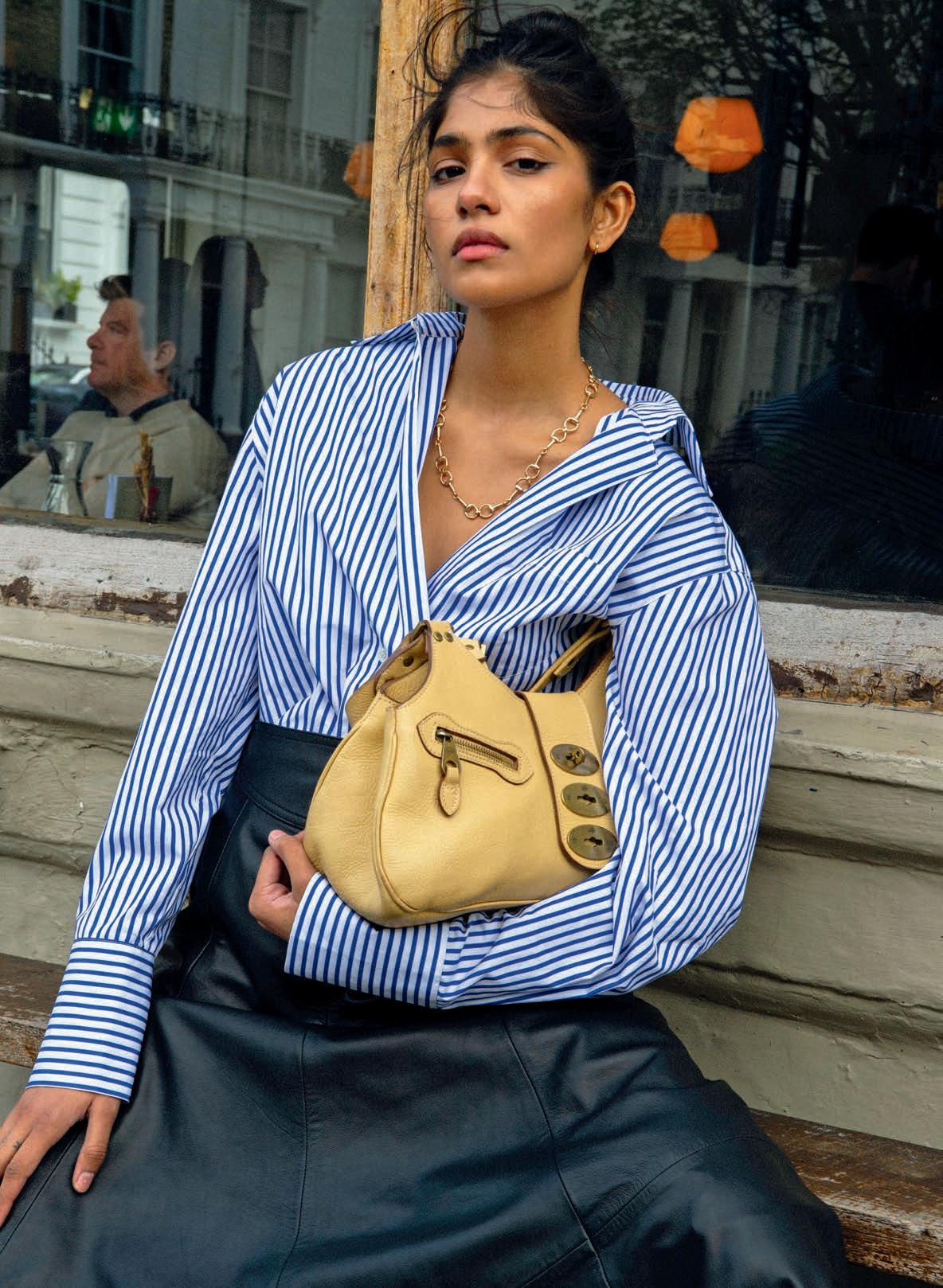

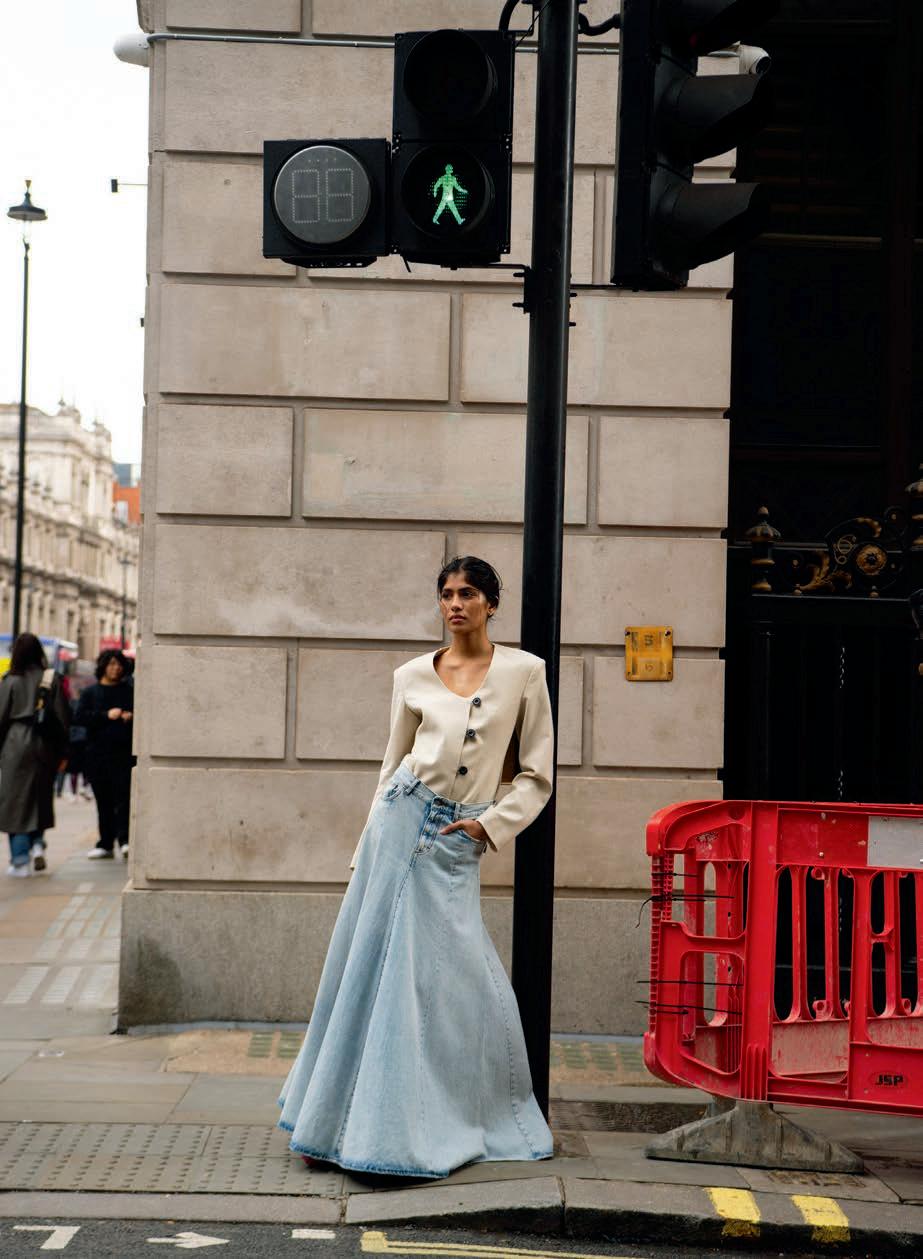






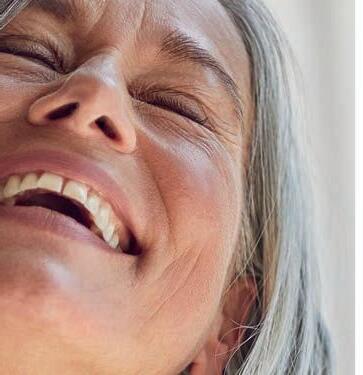


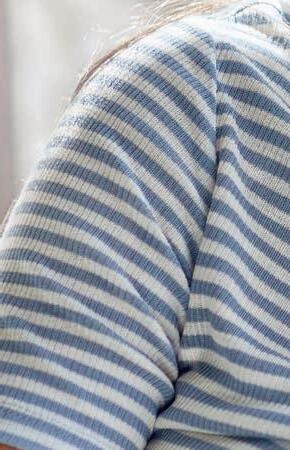



















Finding bucket-list adventures on New Zealand’s South Island.
By TRUC NGUYEN

IT’S NOT EASY TO GET FROM CANADA TO TE WAIPOUNAMU, which is the Maori name for New Zealand’s South Island. Unless you live in Vancouver, the long and wearisome journey requires, at minimum, two flight connections and almost 24 hours of travel. But it doesn’t take long to forget the whole trek, and by the end of your trip, you’ll be wondering when you can go back to the remote South Pacific country—known by the Maori as Aotearoa, which translates to “land of the long white cloud”—for more.
Sixty percent of the South Island is made up of mountain ranges, and there are more than a dozen fjords, 10 national parks and multiple glaciers and temperate rainforests. Some hurried international travellers try to cram all the must-see destinations into just a few days, but, as I discovered on a recent summertime road trip, the best way to explore the island’s dramatic, varied landscape is at your own pace with plenty of pit stops and detours along the way.
The drive from Christchurch, the largest city on the South Island, to Queenstown, known as the country’s adventure capital, can be done in as few as six hours. But with just under two weeks to spend in this beautiful, remote part of the world, I opted for the long way around, criss-crossing the island to take in top sights like Fiordland National Park, the Fox and Franz Josef glaciers and Mount Cook. Along the way, I was enchanted by the sight of endangered dolphins frolicking in the turquoise waters around the Banks Peninsula, stood face to face with a rushing waterfall in Milford Sound and even panned for gold in a historic mining town. It turns out this is a place where a lot can happen during a 12-day trip.
My trip started in Christchurch, New Zealand’s “Garden City.” Still slightly dazed from jet lag, I spent hours wandering the
lush grounds of the botanic gardens, where in late December the hydrangea bushes are in full bloom and the rose garden is a riot of colour. Later, I strolled through the charming city centre and enjoyed people-watching from the historic Antigua Boat Shed Café on the banks of the winding Avon River, to which tourists flock for “punting” boat trips that recall Venice’s famous gondola rides.
Once I was calibrated to the 16-hour time difference, a day trip to the nearby Banks Peninsula to see the endangered Hector’s dolphins—which are one of the smallest and rarest marine-dolphin species and only found at Akaroa Harbour in New Zealand—was essential. There are dolphin-swimming tours, but I was content to stay in the boat and watch a pod jump and swim alongside as well as spot cormorants and seals along the rocky shoreline.
From Christchurch, I made my way to the island’s west coast via the Great Alpine Highway. There are two worthy pit stops along this busy route: the Kura Tawhiti Conservation Area, where a 20-minute walk takes you through and around dramatic limestone-rock formations as high as 30 metres, and the impressive Devils Punchbowl Falls, which is in the 1,185-square-kilometre Arthur’s Pass National Park. The stunning views of the Southern Alps—a range that runs along the length of the South Island and is the highest in Australasia—soon give way to flatter terrain and glimpses of sandy dunes and crashing waves.
Inside the Westland Tai Poutini National Park, a World Heritage Site and marine reserve that’s home to the Fox and Franz Josef glaciers, is an area with remarkable geographic diversity; on one short hike along the Ōk ā rito Trig Walk, there are wetlands, forests, lakes and beaches as well as
views of glaciers and mountain ranges. Carnivorous plants and surreal-looking bright-blue mushrooms line the steep, tree-lined trail.
After spending a few days on the rugged west coast, I decided to take it easy on a lavender farm near Dunedin, a city on the island’s east coast that’s also known as New Zealand’s wildlife capital. My Airbnb host delivered freshly baked bread each morning, and guests wandered through the blooming lavender fields at their leisure. Nearby, along the coastline, the strangely spherical Moeraki Boulders—rock formations believed to be 65 million years old—are a mustsee, and bobs of seals lounge on the rocks at the nearby Katiki Point Lighthouse.
But the main draw in the area is the Otago Peninsula, just east of central Dunedin. Its sandy beaches are, unlike those on the west coast, blessedly free of biting sandflies, and it is home to little blue penguins and rare yellow-eyed penguins as well as the southern hemisphere’s only mainland colony of albatrosses. Head to the secluded Allans Beach and you might spot penguins coming ashore or grey fur seals and sea lions sunning in the sand.
The final destination on my South Island journey is perhaps the most well known: Queenstown. Over the past few decades, the city has evolved into an adventure capital, becoming the country’s second-most-popular destination for international visitors after the North Island’s Auckland. Paragliding and heli-hiking were not on the agenda for me, but the city is a beautiful and convenient base from which to visit Fiordland National Park and indulge in quieter pleasures like water therapies and boat cruises.
The glamorous Hotel St Moritz—an elegant, sustainability-minded hotel with an old-world European feel and alpine-inspired decor—provides a welcoming base in the bustling city. It’s centrally located just steps from the tourist strip, and the lakefront rooms on the higher floors offer panoramic views of Lake Wakatipu. After I’d spent more than a week on the road, a soak in the hotel’s verdant hot-tub garden and a hot wood-fired pizza at Lombardi, the award-winning hotel restaurant, were very welcome indulgences.
For even more pampering, I booked an early-morning visit to Onsen Hot Pools, where I soaked in a private cedar-lined hot tub overlooking the scenic Shotover River. It was a very calming, meditative way to kick-start the day before I headed off for
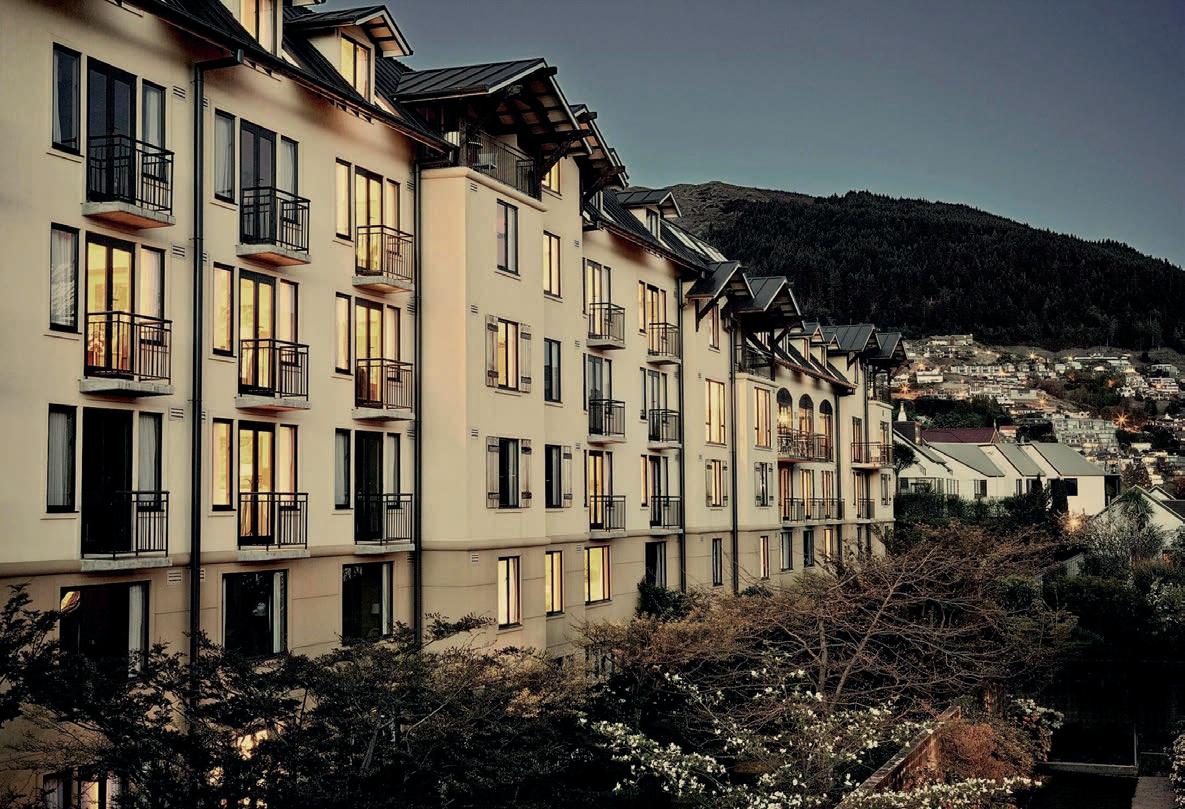
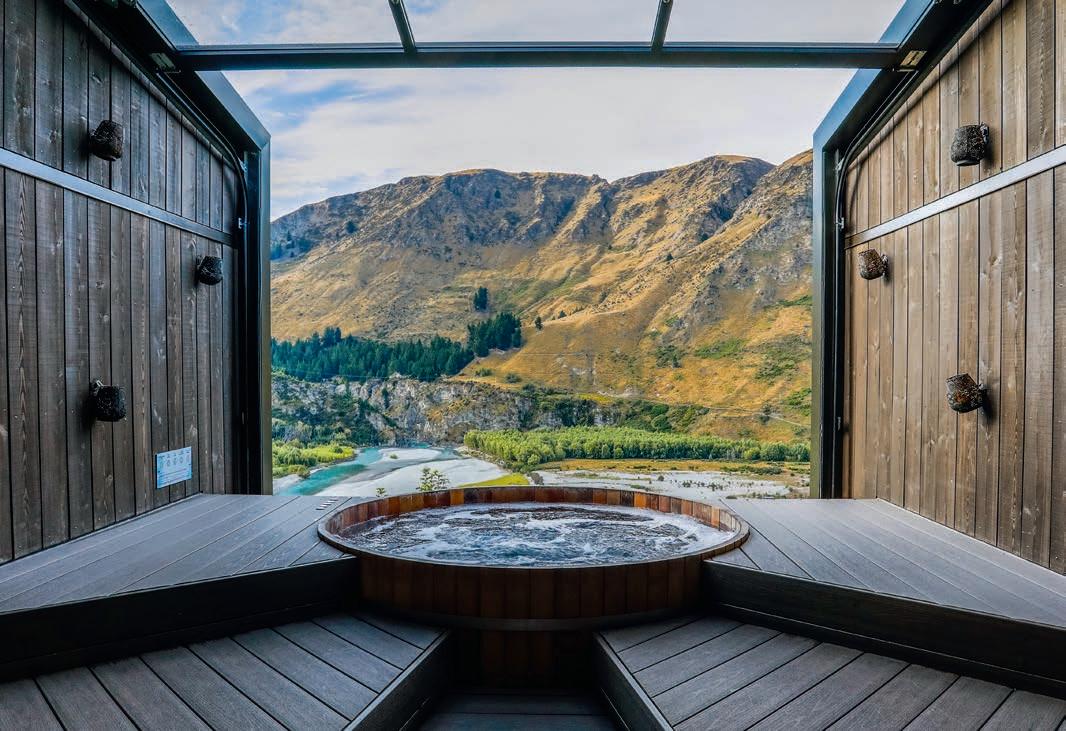
an afternoon in Arrowtown, a tiny historic gold-mining town with an adorable main street. At the Lakes District Museum, you can rent a pan for just a few dollars and head to the river to try your luck—any gold flakes you find are yours to keep.
The trip came to a close with two very different guided tours. First was a cruise in Milford Sound, operated by local outfit Southern Discoveries. The excursion included a spectacular coach drive along the Milford Road, a three-hour cruise to see the waterfalls and wildlife of Milford Sound—which is actually a fjord—and time in a floating underwater observatory. On the water, we cruised past fur seals and a pod of dolphins; underwater, we saw shellfish, sea cucumbers and coral galore.
Then there was the second tour, RealNZ’s unique half-day Walter Peak Eco Experience, which departs from the centre of Queenstown. It starts with a trip across Lake Wakatipu on a vintage steamer and continues at the picture-perfect Walter Peak High Country Farm. The tour delves into the land-restoration project in progress and includes a meander through the farm and vegetable gardens as well as a tree-planting experience. The next time I’m back in this part of the world, I’ll be able to see the grown-up versions of the saplings our group put in the ground on that sunny January afternoon.
New Zealand’s South Island—a place where visitors can swim with dolphins one day and hike on a glacier the next—is truly a bucket-list-worthy destination for nature lovers. Scenic mountain ranges, sandy beaches, bucolic farms and more—in this remarkable place, they’re never too far away.
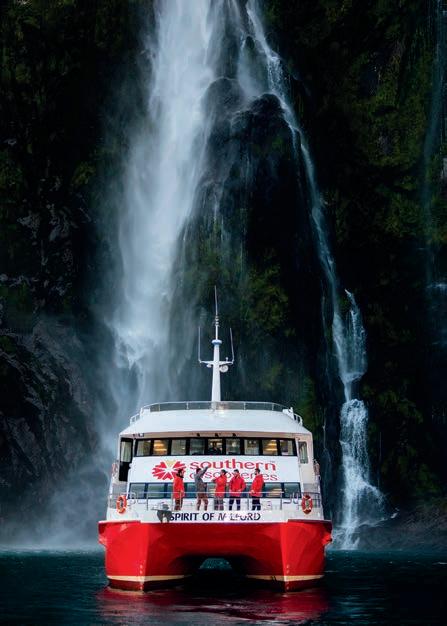

Close encounters with wildlife and cultural immersions make for a one-of-a-kind experiential vacation.
FROM NATIONAL PARKS to underwater depths and savannah to highlands, Tanzania, in East Africa, is a rare country where nature brings an intense sense of wonder to the travelling experience. Case in point: Each year, it hosts the most formidable mammal migration on earth as wildebeest herds travel clockwise across the Serengeti plains and the Maasai Mara in neighbouring Kenya. It’s a transformative—and powerful—sight to behold.
If a fresh perspective on life is a bonus that comes with travel, a general state of well-being is an extra benefit that may apply specifically to Tanzania. Indeed, science has shown that oxytocin, the so-called “love hormone” responsible for the creation of emotional bonds, is produced whenever we are in contact with animals, and its release generates a soothing feeling of calmness. All the more reason, then, to choose this unique safari destination. The Ngorongoro Crater shelters a diverse and wild fauna. Rivers and lakes (such as the Tanganyika, the longest freshwater lake in the world) offer many opportunities to observe birds as they congregate along the shores. Watching the sun rise from
the “roof of Africa”—the summit of Mount Kilimanjaro— definitely qualifies as a pinch-me moment, and spending time with the friendly Maasai, a pastoral people who sing and dance beautifully, is another.
Post-safari, exotic Zanzibar beckons. Anchored off Dar es Salaam (the country’s financial centre), the archipelago promises serious downtime on the beach and spectacular diving but also a total immersion into Swahili, Arabic and Portuguese cultures. This is particularly true of Unguja, informally called Zanzibar Island and the largest of the Spice Islands. In the former East African trading hub that was Zanzibar City, the bazaar, the House of Wonders and the Sultan’s Palace (in the old medina of Stone Town) still whisper of a rich history.
Getting up close and personal with wild animals, sipping the best chai tea ever, acquainting yourself with local culture... Can travelling possibly be any more enriching?
Phenomenal sushi, top-tier vintage shopping and, yes, heated toilets await in this vibrant Japanese city.
By CASSIE GILL
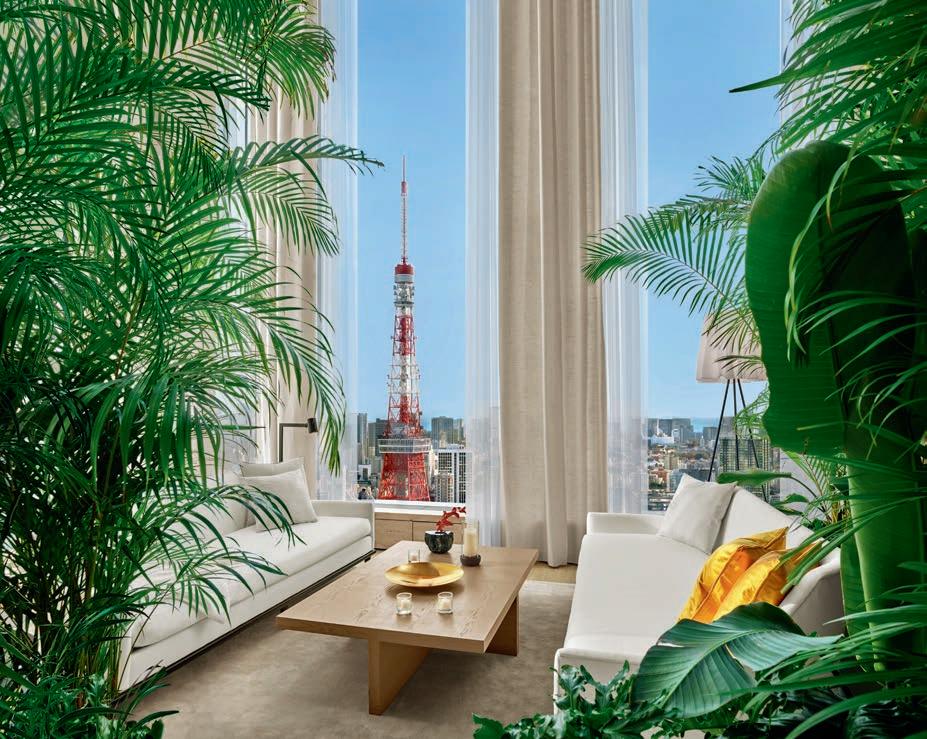
WELCOME TO TOKYO, the adrenalin-fuelled capital of Japan. Modern culture and reverent tradition strike a balance in this sprawling city, which is made up of a collection of unique neighbourhoods: The artistic crowd gravitates toward Harajuku, luxury aficionados have Ginza and Ebisu remains a nightlife hot spot. While the eclectic metropolis boasts a futuristic skyline, its back alleys and side streets—which are home to some of Tokyo’s best hidden gems, from freshsushi restaurants to handcrafted-matcha cafés—can make you feel like you’re in another era. Service and quality are the backbone of everything in Japan; the people here often strive for perfection (a pursuit referred to as kodawari ), and their keen attention to detail is what separates this incredible place from any other.
THE TOKYO EDITION, GINZA The Tokyo Edition, Ginza opened its doors late last year, making it the first luxury property in the trendy shopping district. Rooms are designed with both style and storage space in mind, embracing a minimalist vibe that’s cozy and just a little bit seductive. The boutique hotel also houses the speakeasy-inspired Punch Room, which is adorned with rich blue hues and golden velvet couches for a 1920s feel and features a menu of juice-infused cocktails. The scrumptious breakfast buffet—served in Sophie, the hotel’s bright and airy restaurant—blends Eastern and Western flavours to create remixed classics. (Don’t miss the matcha French toast.) Sister hotel The Tokyo Edition, Toranomon is just a short drive away and worth a visit for its pool and jungle-themed lobby bar. If you have time to spare, make a dinner reservation at The Jade Room Garden + Terrace for its tasting menus, which are served alongside a stunning view of the famed Tokyo Tower. EDITIONHOTELS.COM
GINZA SUSHIKO HONTEN Tucked away in an unassuming Ginza alley, Sushiko Honten has been serving some of Tokyo’s best omakase sushi since 1885. Sushi is freshly prepared in front of you, and no ordering is necessary (omakase means “I leave it up to you”); highlights include the grilled toro sashimi, the buttery tuna and the delectable abalone. There are only about 10 seats at the bar, so reservations here are a must—or be prepared to wait for availability. GINZA.JP
PIZZA MARUMO Pizza culture runs deep in Tokyo. This cool restaurant is located in the city’s Ebisu neighbourhood, and its chef, Yuki Motokura, has become something of a celebrity on the scene thanks to his menu of wood-fired creations, which are a balance of classic Italian fare—the margherita is an essential order—and Japanese-inspired pizzas, like the mayo-based Teriyaki Boys, which is loaded with chicken, mozzarella and black chili.
PIZZA-MARUMO.COM
ORIENTAL LOUNGE Head up to the 38th floor of the Mandarin Oriental Tokyo for both an exquisite afternoon-tea experience and an unforgettable view of the capital’s skyline. Elements of the tea menu change seasonally, but the perfectly baked scones are a constant. The pastries are works of art, with some acting as a culinary illusion; what appears to be a perfectly fresh strawberry, for example, may reveal itself to be a delectable mousse. The tea offerings are a departure from the usual suspects, with options including a pineapple-infused green blend, white-sangria black tea and the signature royal milk tea. For those lucky enough to visit during Japan’s cherry-blossom season, the Sakura Afternoon Tea is a fan favourite. MANDARINORIENTAL.COM

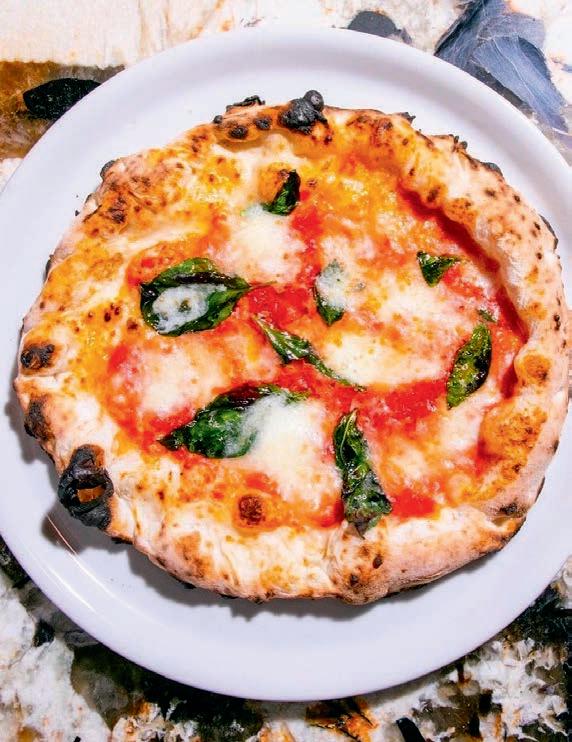
BONGEN COFFEE This tiny coffee spot is another hidden alleyway gem. Espresso is serious business at Bongen Coffee: The café’s signature drink has three shots, while another option blends matcha and espresso for the best of both worlds. The allwood space, adorned with a sweet little bonsai tree behind the counter, is Japanese minimalism at its best.
BONGEN-SHIRAFUSHI-COFFEE.COM
LE CAFÉ V Louis Vuitton opened its second Le Café V outpost about a year after the debut Osaka location, this one in its Ginza flagship store. Luxury lovers have been flocking to this chic spot for the trendy flower-logo latte and Instagrammable furnishings, all of which are from the label’s own homewares collection. The fashionable café is also an excellent choice for a pre-dinner cocktail at the bar. JP.LOUISVUITTON.COM
A10 Every night boasts an all-vinyl set at A10, a speakeasy hidden behind an unassuming collection of street lockers in Ebisu. Oldschool records line the walls of this mysterious bar, which plays a mix of ’70s soul, jazz, R&B and funk. (Think everything from Sade to Marvin Gaye.) The menu also offers some of the city’s best cocktails, including a pistachio-based pina colada and the matcha-infused Kekko-na Ote-mae-de, which is made with a Kyoto gin, Kyoho grapes and egg white. TABLECHECK.COM
TEAMLAB PLANETS This could be the coolest museum on the planet, drawing the likes of Justin and Hailey Bieber, Jennifer Lopez and many more celebs. Shoes are off for this unique series of art installations, which take you through several shin-deep pools for a full sensory immersion. Created by TeamLab, an international art collective, the magnificent Infinite Crystal Experience and Floating Flower Gardens blend digital and physical media to create two of the most memorable rooms (and photo ops). TEAMLAB.ART

SHISEIDO GLOBAL FLAGSHIP STORE Shiseido’s Ginza flagship is more than just a beauty store. Here, you can step into another universe with the Inner Beauty Charge, an immersive meditation journey inside a futuristic pod. When you pull down the pod’s egg-shaped door, a series of lights, sounds and scents designed to help your brain disconnect and recharge are emitted inside. Headphones guide you through a tailored meditation while a headband monitors your physical and mental responses to the experience over the next 30 minutes. Afterwards, you can view a report about your mental focus during the session. (Less focus means higher stress levels.) Once you’ve finished meditating, peruse the brand’s popular products. This location also offers engraving services, skin analysis and makeovers in an upstairs glam room. SHISEIDO.CO.JP
SOLAKZADE This obscure boutique in the Harajuku district houses an impressive 30,000 pairs of vintage designer sunglasses from all over the world. The dimly lit store feels very Pirates of the Caribbean, with its decor of antique furniture, golden goblets and skulls. The eccentric and cool staff are half the fun as they pull out curated pieces like 1960s cat-eye shades, ’90s Chanel pairs and ’70s Seiko and Hoya styles famously loved by the Japanese yakuza. Best of all, frames come with a lifetime guarantee and there are no charges for repairs or restoration. SOLAKZADE.COM

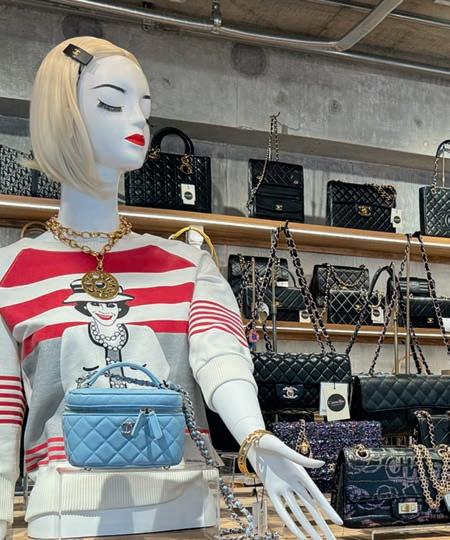
CAMELLIA VINTAGE Calling all designer-handbag lovers. Camellia Vintage has one of the most impressive collections in the city, so you’re bound to find something whether you’re looking to splurge on a rare Birkin or sensibly invest in a well-priced vintage Chanel. The store also carries an array of other designers as well as funky and eclectic styles from Prada, Gucci, Dior and more, and most of the items are immaculately maintained. Bring your passport: Shopping is tax-free for tourists. VTG-BRAND.CO.JP
KAPITAL Kapital remains the most coveted Tokyo streetwear brand, with high-quality Japanese denim at the core of the label. The women’s line leans into a Western aesthetic, and the Tokyo locations offer pieces you won’t find anywhere else. The woven patchwork puffers and vests are also staples and offer a fresh take on casual outerwear. KAPITAL.JP

In every issue, Canadian content creator MARGAUX VERDIER shares her love of dairy-free, mostly-plant-based dishes. On the menu this month? Caramelized Brussels Sprouts With Creamy Gochujang Sauce.
I LOVE BRUSSELS SPROUTS SO MUCH that I could eat a whole bowl of them. I recently had the best Brussels sprouts dish at Stem Bar, in Montreal’s Little Burgundy neighbourhood, and, obviously, I had to try to create my own version at home. This super-simple and flavour-packed side dish is guaranteed to please everyone. The sprouts caramelize in the oven and become super crispy, and they’re served with a creamy sauce that is made with gochujang (a Korean fermented chili paste), cashews and coconut milk and is simply divine.

CARAMELIZED BRUSSELS SPROUTS WITH CREAMY GOCHUJANG SAUCE
Servings: 4 to 6 | Prep time: 20 minutes | Cook time: 20 minutes
INGREDIENTS
Caramelized Brussels Sprouts
7 cups (1.75 L) Brussels sprouts, halved
3 tbsp (45 mL) vegetable oil
2 tbsp (30 mL) maple syrup
2 garlic cloves, minced
3/4 tsp (3.75 mL) salt
pepper, to taste
Creamy Gochujang Sauce
3/4 cup (180 mL) raw, unsalted cashews, soaked in boiling water for 20 minutes
1/2 cup (125 mL) well-stirred coconut milk
1 tbsp (15 mL) gochujang
2 tbsp (30 mL) lime juice
2 tsp (10 mL) fish sauce (optional)
2 tbsp (30 mL) maple syrup
1 garlic clove, minced 3/4 tsp (3.75 mL) salt
Garnishes
1/4 cup (60 mL) cashews, finely chopped
1 green onion, finely chopped
1 lime, quartered hot-pepper flakes, to taste (optional)
METHOD
Caramelized Brussels Sprouts
Preheat the oven to 425°F, and place a baking sheet on the rack in the centre. (This step is important because heating the baking sheet will help crisp up the Brussels sprouts.) In a large bowl, combine all the Brussels sprouts ingredients. Carefully remove the baking sheet from the oven and arrange the sprouts cut-side down. Bake for 20 to 25 minutes, flipping the sprouts halfway through.
Creamy Gochujang Sauce
Add all the sauce ingredients to a blender, and blend until you get a very smooth texture. Pour onto a large serving plate and spoon the Brussels sprouts and garnishes on top of the sauce.

After championing the best new restaurants and chefs at Food & Wine magazine, KHUSHBU SHAH is shining bright with a cookbook of her own.
By AMAN DOSANJ
KHUSHBU SHAH’S EYES LIGHT UP THE MOMENT she begins to talk about food. “I’m obsessed with how food shapes so much of the world,” says the Los Angeles-based journalist. “It’s such an interesting lens to view everything through, like politics, business, the environment, history and culture. It’s not just about what’s on the plate.” Shah’s stints at Thrillist (an online media outlet covering food, drink, travel and entertainment) and Food & Wine magazine flipped the script on which food-industry people—and which cuisines—should matter at a time when the prominent critic positions in the U.S. (including those at Bon Appétit, GQ , Esquire and many other publications) were (and still are) dominated by white men. Now, with the release of her heartfelt and humorous debut cookbook, Amrikan: 125 Recipes From the Indian American Diaspora, Shah is stepping into the spotlight.
When the 28-year-old Indian-American joined Food & Wine in 2019, she became the youngest ever to land the restaurant-editor gig and was also the first person of colour to hold the position. “I’m often the only one—or one of two or three people— who is not white,” she says. “I feel like I have to represent not only South Asians but also everybody else [who’s] not in the room. I was given an incredible platform, [but simply] doing a good job wasn’t enough for me; [I had to do] a great job so no one could ever feel like it was a mistake to hire someone of colour.” Over her gamechanging four-year tenure, Shah transformed the magazine’s “Best New Chefs” franchise—an annual ranking that was started in 1988—making it more inclusive.
“THAT, TO ME, IS WHAT MAKES A REALLY GREAT CHEF IN THIS DAY AND AGE—THEY CAN NOT ONLY COOK SUPER WELL BUT ALSO LEAD SUPER WELL.”
With the backing of editor-in-chief Hunter Lewis, Shah and the wider Food & Wine team introduced new systems, expanded the judging parameters to include pastry chefs (many of whom are women and tend to fly under the radar) and shifted the focus onto traits like leadership ability and workplace safety. “That, to me, is what makes a really great chef in this day and age—they can not only cook super well but also lead super well,” she says. In the wake of the #MeToo movement, the magazine employed background checks and anonymous staff surveys (in both English and Spanish) to weed out any problematic characters, who are usually only known about within the whisper network of the industry. “It’s not a perfect system...I’m sure some bad actors have slipped through our filters,” says Shah. “We are limited in the number of words, photos and stories we can [produce], especially in a physical magazine, so I wanted to make sure that space was going to people who were interested not only in cooking great food but also uplifting those around them.”
Flaws aside, that level of thoughtful consideration when it comes to how they judge restaurants and chefs is still light years ahead of the outdated Eurocentric dining criteria used by some of the more-well-known ranking lists in Canadian publications. It’s no secret that list-making is highly subjective, but isn’t that more reason to utilize diverse perspectives and palates? “I’ve always felt I had to be 100 times better to get the same thing,” says Shah. “I get very excited when I see someone who’s South Asian and maybe a little mediocre getting success because that, to me, is progress. It’s very exciting when you don’t have to be super exemplary to have success.”
While Shah believes the industry in the U.S. now seems more interested in diverse stories, she doesn’t think the gatekeepers—the people controlling budgets—have ultimately changed. La Liste’s 1,000 “best” restaurants in the world 2024 ranking is perhaps a more telling sign of how little has shifted on our home turf since the supposed racial reckoning of 2020.
The culinary aggregator compiles ratings from thousands of publications, hundreds of guidebooks and millions of online reviews from 200 countries. Despite Canada’s cultural diversity, all 19 of our country’s establishments on the list serve up French- and Italian-inspired cuisine—and many of those fine-dining restaurants have sizable budgets for media previews and PR-generated coverage.
After four years, Shah left Food & Wine last October in search of a new adventure. Since then, she has launched an exciting weekly Substack newsletter called Tap Is Fine and cranked out her own cookbook. Having travelled across the U.S. many times over, she was able to fill Amrikan (which is how desis say “American”) with bite-size nuggets of history as well as explorations of migration patterns and the natural evolution and blending of two cultures. Take, for example, sticky buns filled with carrot halwa, a refreshing mojito inspired by the herbaceous, minty water served with Pani Puri (an addictive Indian street snack) or the fun Indian-pizza flex currently sweeping south of the border, a trend that prompted the “Pizza Party” chapter (which includes a masala-corn riff that is tangy, sweet, hot and gooey). Then there are the dishes that Shah created because she wished they existed, such as her Paneer Lasagna (or LaSaagNa). “I love lasagna. I love Saag Paneer. So the fact that these hadn’t been combined before is wild to me,” she says. “My mom looked at me and said, ‘Huh, this is actually good.’ I was like, ‘Wow!’” To help dispel the myth that “Indian food is so complicated and has eight million ingredients and 97 spices,” Shah includes plenty of weekday-friendly homestyle staples, like Cabbage Nu Shaak (stir-fried cabbage made delicious with turmeric, salt and Kashmiri red-chili powder in five minutes flat).
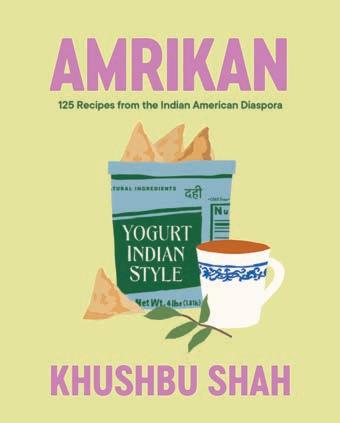
Now that her cookbook is finally out in the world, Shah admits that she already has a part two swirling around her brain. “I want to do as much storytelling as I can across as many mediums as possible,” she says with a smile. “There’s a lot to tell, and it’s exciting.”



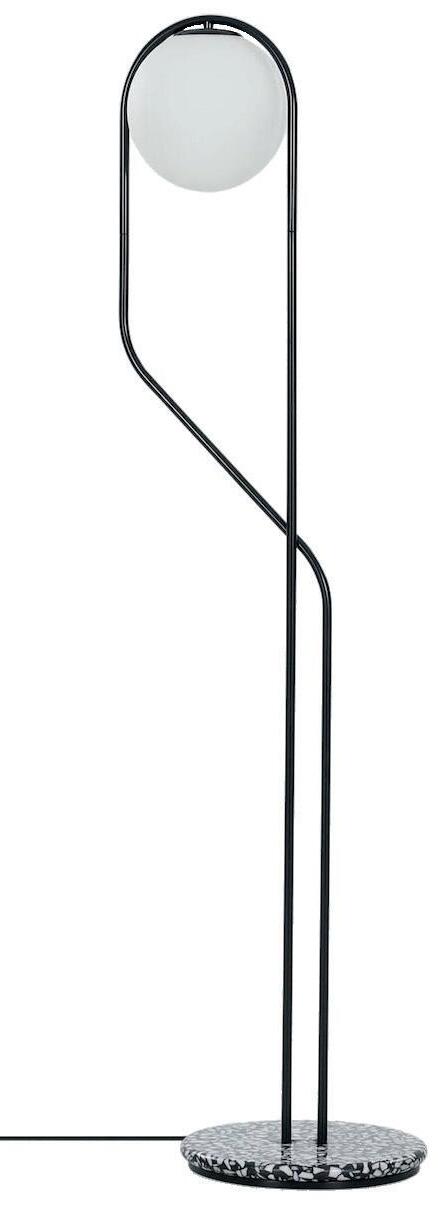
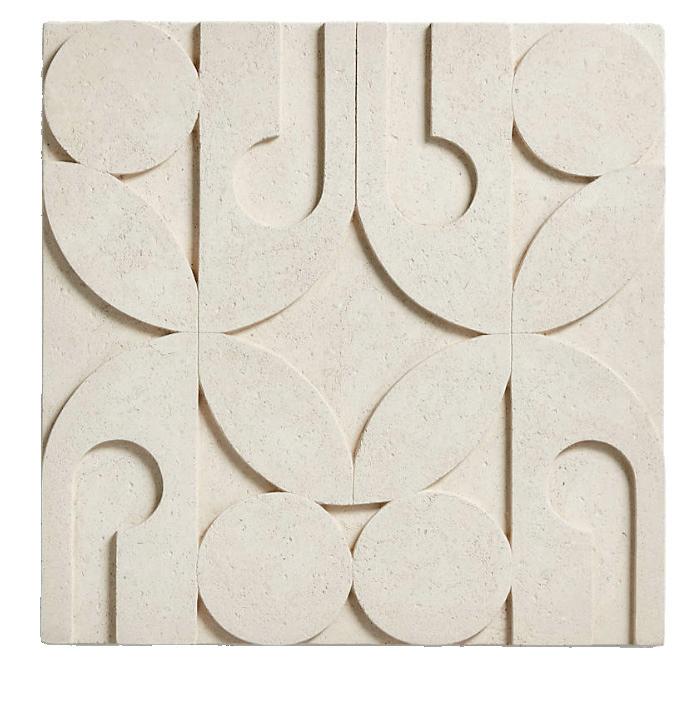


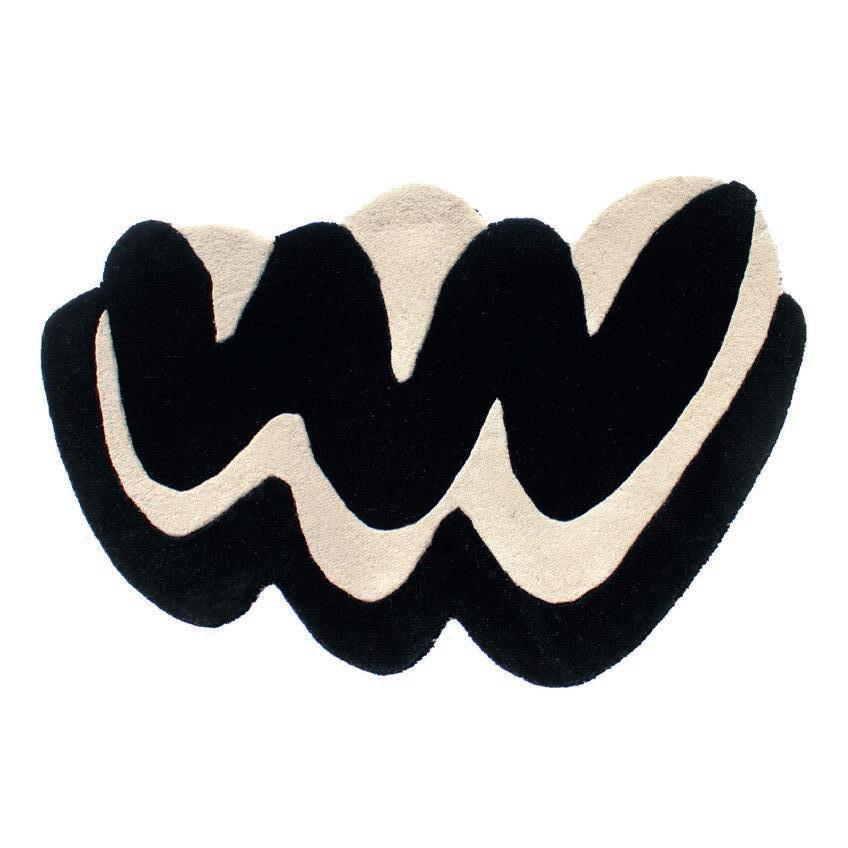
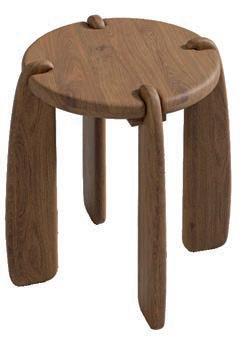


AUGUST 23 – SEPTEMBER 22
Your astrological season encourages you to make some major lasting changes. Rather than sticking to your usual pragmatism, why not turn your attention to your dreams? Be specific, and think about the steps you need to take to move in a new direction.
By VANESSA DL
SEPTEMBER 23 – OCTOBER 22
Endings, letting go and learning to adapt are key themes for this period. Clean up the forgotten corners of your life, take the time to evaluate the cycles that are ending and the lessons you learned and create personal space for rejuvenation.
OCTOBER 23 – NOVEMBER 21
The next few weeks serve up a full social calendar with lots of captivating interactions. By accepting various invitations, you’ll meet people who will take you off the beaten path and lead you toward unexpected adventures.
NOVEMBER 22 – DECEMBER 21
Focus on your career, and think about improving your development and advancement strategies. Open yourself up to new growth opportunities. Rewards will come as a result of thoughtful risks you take as well as your ability to innovate.
DECEMBER 22 – JANUARY 19
There is change on the horizon, dear Capricorn. Dare to shake up your routine and venture into areas unknown, whether you’re discovering new personal philosophies or actual faraway lands. Don’t be afraid to explore places where you feel intimidated.
JANUARY 20 – FEBRUARY 18
Seize opportunities for collaboration, and then invest your time and energy in projects that challenge you intellectually. What limiting thinking can you let go of to facilitate your growth? To see things more clearly, ask for help from people you trust.
FEBRUARY 19 – MARCH 20
Now is the time to comb through your relationships and find dynamics that need to be adjusted. By reviewing your commitments, you can strengthen several bonds. Dare to be vulnerable with trustworthy people while honouring both your boundaries and those of others.
MARCH 21 – APRIL 19
In the face of doubt and uncertainty, it’s wise to find stable ground in a routine that supports your physical and mental wellbeing. What would innovation in your daily routine mean to you? What new habits could help regulate your nervous system?
APRIL 20 – MAY 20
You need to find a way to better organize your creative potential. Cultivate your passions carefully for inspiration. Turn down the volume of your inner critic, and remember that despite your responsibilities, you have the right to let go of certain things when you have to.
MAY 21 – JUNE 20
Your cupboards are overflowing—in both your home and your emotional world— but you need to get rid of what no longer serves any use or brings you joy. Free yourself from what you’ve been dragging around for too long to create space for a new chapter.
JUNE 21 – JULY 22
Organize your days so you’re able to adapt to the unexpected while accomplishing various tasks. Communicate your needs and intentions in detail to get support— concrete or emotional—from your social network.
JULY 23 – AUGUST 22
Carefully analyze your finances and material resources. Are they healthy enough to support your future plans? A methodical approach and attention to detail strengthen your financial stability as well as your confidence in your abilities.
Featured products from our advertisers.

Discover NAIR Wax Ready Strips for effortless facial-hair removal and a flawlessly smooth complexion. Crafted with sensitive skin in mind, the formula features white-lily extract to gently soothe and moisturize your skin. With no heating or rubbing required, these strips are ready to use right out of the box, ensuring a hassle-free cleanup. Enjoy up to four weeks of hair-free skin while pampering and rejuvenating your complexion. Prepare to reveal gorgeously smooth skin in minutes! NAIRCARE.CA
Discover LAMBERT ’s fall collection, Second Nature, where sustainable fashion meets chic sophistication. Embrace new silhouettes in natural tones crafted from vegan and recycled materials. Inspired by the latest trends, the Sheila handbag captivates with its pentagonal shape and unique aesthetic. Whether you wear it for work, school, travel or outings, it will complement your outfits with style. ($155, DESIGNLAMBERT.COM)
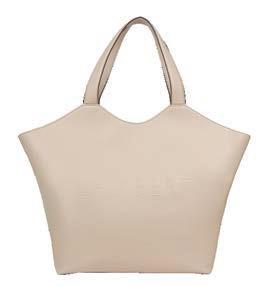

Explore the evolving perspectives of women on war and conflict in Outside the Lines—Women Artists and War , the newest CANADIAN WAR MUSEUM exhibition. Discover Canada’s military history through works made by 52 women artists over more than two centuries, including paintings, sculptures, textiles and more. See this groundbreaking exhibition at the Canadian War Museum until January 5, 2025. WARMUSEUM.CA
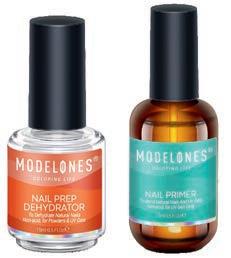
Use this nail dehydrator and primer set as a foundation to prepare your nails—the most crucial step in any professional manicure. This duo cleans the nail surface and enhances the adhesion of your mani products, helping your nails stay flawless and free from lifting for more than 28 days. This product is a bestseller on Amazon and has received rave reviews. ($8, MODELONES.COM)
P. 96
COVER STORY
ACNE STUDIOS acnestudios.com
ALEXIS BITTAR alexisbittar.com
BALENCIAGA balenciaga.com
ISSEY MIYAKE isseymiyake.com
J.W.ANDERSON jwanderson.com
LOUIS VUITTON ca.louisvuitton.com
SACAI sacai.jp
SCHIAPARELLI schiaparelli.com
STELLA MCCARTNEY stellamccartney.com
WE LOVE COLORS welovecolors.com
WOLFORD wolford.com
LONDON CALLING
DAGMAR houseofdagmar.com
ENVELOPE 1976 envelope1976.com
FRAME frame-store.com
HAIKURE haikure.com
LE MONDE BÉRYL lemondeberyl.com
MANOLO BLAHNIK manoloblahnik.com
MOTHER OF PEARL motherofpearl.co.uk
MULBERRY mulberry.com
NANUSHKA nanushka.com
RAY-BAN ray-ban.com
SLEEPERS shop-sleepers.com


IT’S RARE TO FIND A SINGULAR , unwavering point of view in today’s trend-chasing environment, and that’s just one of the reasons why we love Rick Owens. Known for his post-apocalyptic, goth-grunge aesthetic, Owens consistently creates a fantasy universe that challenges conventional notions of power and sensuality. For the presentation of Hollywood, his spring/summer 2025 menswear collection, Owens returned to the infamous “boulevard of vice,” where his formative years were spent, and paid homage to the “weirdos and freaks” he’d encountered on the notorious Los Angeles strip. The result was nothing short of cinematic. There were only 10 all-white looks in this collection, but each was repeated 20 times on a total of 200 models, who walked through Paris’ Palais de Tokyo courtyard to Beethoven’s Symphony No. 7 Allegretto. The grandeur of the presentation called to mind a Cecil B. DeMille epic, particularly when a trio of acrobats waving a flag symbolizing unity were carried on a litter. With its thigh-high Kiss platform boots, boxer shorts, flowing capes and knits by Slovenian designer Tanja Vidic, Hollywood has all the makings of a quintessential Rick Owens collection. According to the creative director, the return to showing at the Palais de Tokyo following last season’s intimate presentation at his own home in Paris represented an expression of inclusivity. His vision was further augmented by the show’s models—mainly fashion students who’d answered an open casting call. In the collection notes, Owens wrote that “expressing our individuality is fine but, sometimes, manifesting our unity and our need to rely on one another is also a very good thing. Especially when we are witnessing a dramatic escalation of intolerance in the world right now.”
